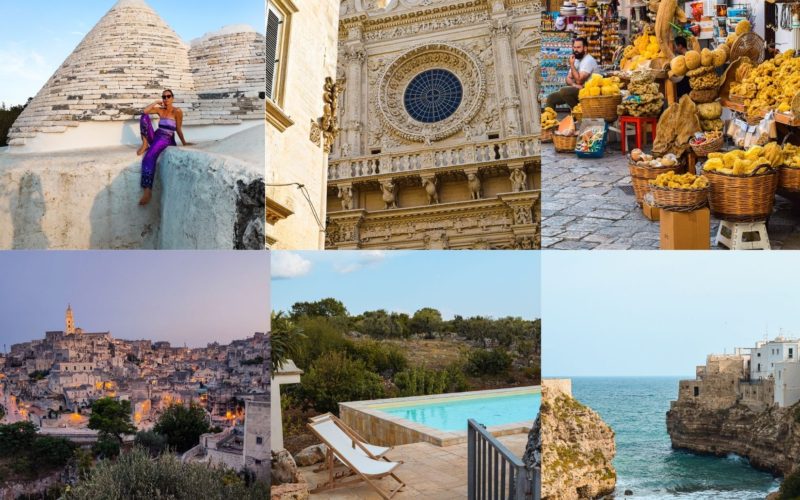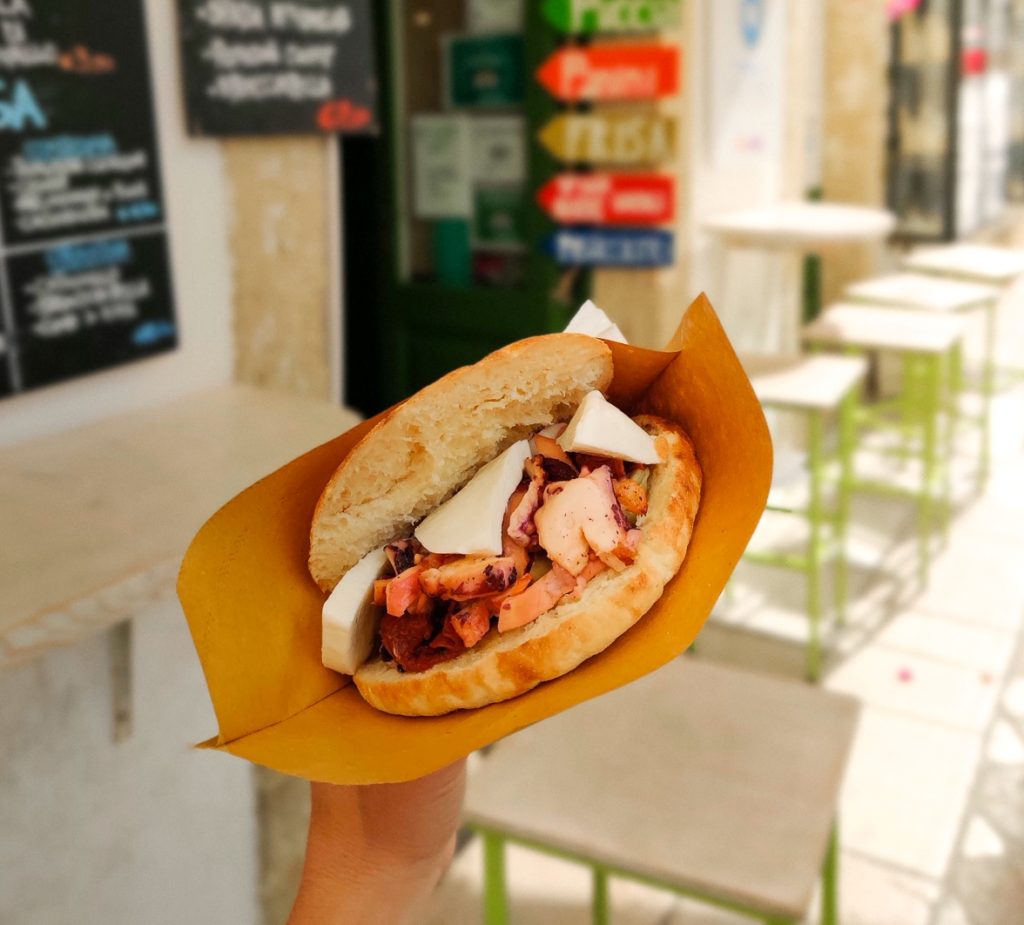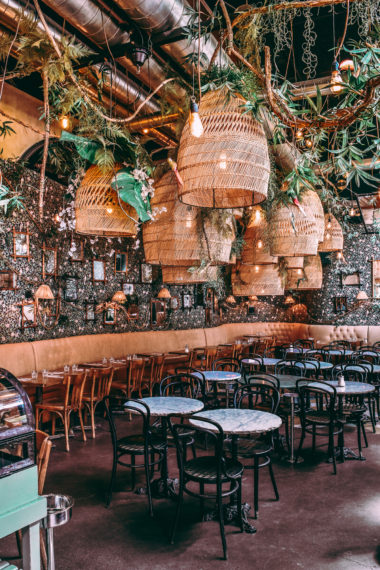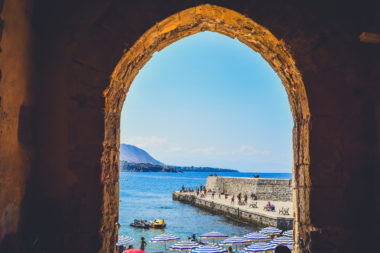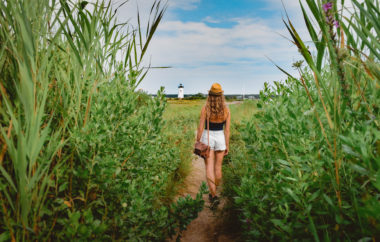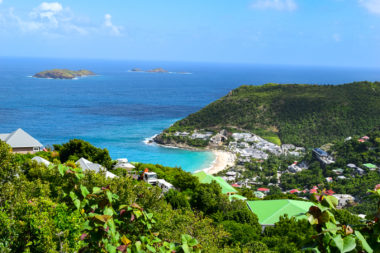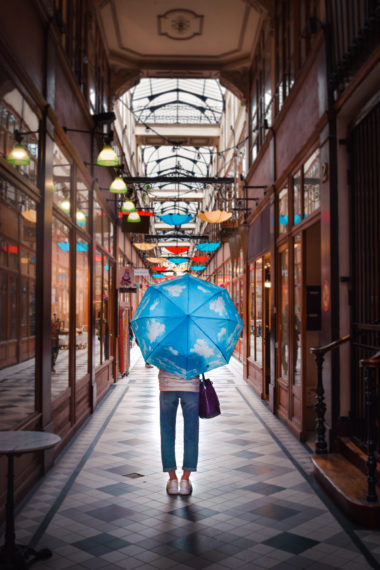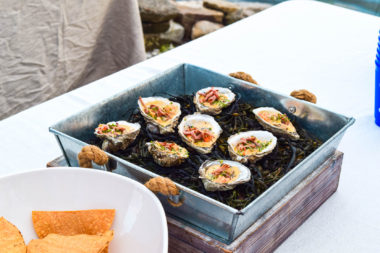This Puglia itinerary takes you on a 7 day road trip that introduces you to the vast and diverse landscape and people of Italy’s Southern heel, without missing a beat.
People often overlook Italy’s sunbaked heel, home to hidden grottoes, medieval towns, and beautiful beaches on two seas–the Adriatic and Ionian. With historic influence from ancient Greece and Turkey, Puglia is gushing with telltale signs in it’s history, food and towns. Puglia is home to some of the best preserved art and architecture in Italy, all the while driving down a coast with pristine clear blue waters. So what’s the best way to see the heel of Italy? By car. A 7-day road trip along the diverse coastline and inland among olive groves and vineyards requires careful planning and lots of knowledge. My Puglia itinerary takes you through the best of Puglia without having to miss a beat. Here’s how to spend a week in Puglia:
How many days do you need in Puglia?
It depends on how much of Puglia you want to see. Do you want to immerse yourself and focus on specific provinces or get a full 360 on Puglia and see as much of the diverse land and people as possible? I went for the latter. If you want to see the best, you’ll need to take a minimum 7 day road trip when planning a Puglia itinerary.
What is the best time to visit Puglia?
Shoulder season is the best season. Peak seasons like June – August are full of Italian and European tourists. The best time to visit Puglia is in May, when the temperatures are hot, everything is in full bloom and tourism starts to reopen for the season. September is equally as beautiful and quiet in Puglia, but the hot scorching sun changes the colors of the landscape from a rich green to a dry and arid yellow. We visited end of September and hotels were already starting to close so be mindful when planning.
Quick Navigation
Arrival: Polignano a Mare
Day 1: Polignano a Mare, Monopoli and Matera
Day 2: Matera & Nardò
Day 3: Gallipoli & Nardò
Day 4: Otranto, Salento Coast and Lecce
Day 5: Lecce & Ceglie Messapica
Day 6: Ostuni, Locorotondo & Grottaglie
Day 7: Alberobello
7 Day Road Trip Puglia Itinerary Map
Must-Eat Foods In Puglia
Important Things to Keep in Mind
Arrival: Polignano a Mare
Check-in: Dimora Santo Stefano
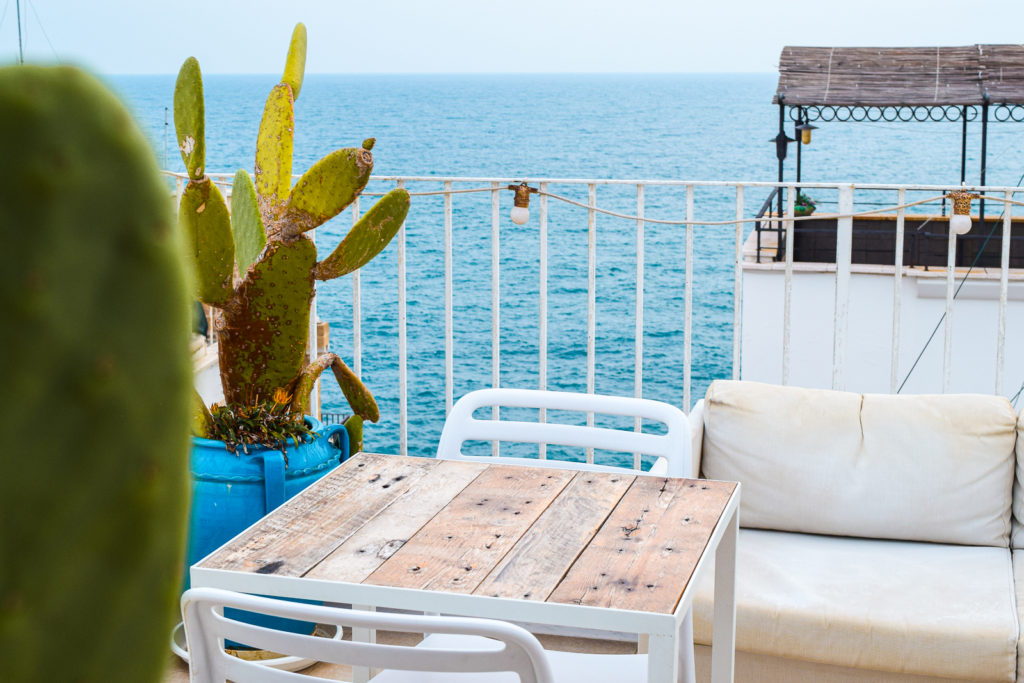
One of the most iconic photographed Italian cities is Polignano a Mare, Italy. Located on the heel of Italy in Puglia, this village was made famous because of it’s white washed city located on top of numerous grottos and it’s famous Lama Monachile beach. It’s always the first stop on people’s Puglia itinerary when traveling. My mother and I got off at Bari airport, picked up our Mini Cooper from the car rental, and drove about 30 minutes before arriving. The most interesting area in Polignano a Mare is the centro storico, or historic area. This is where you should be based during your stay.
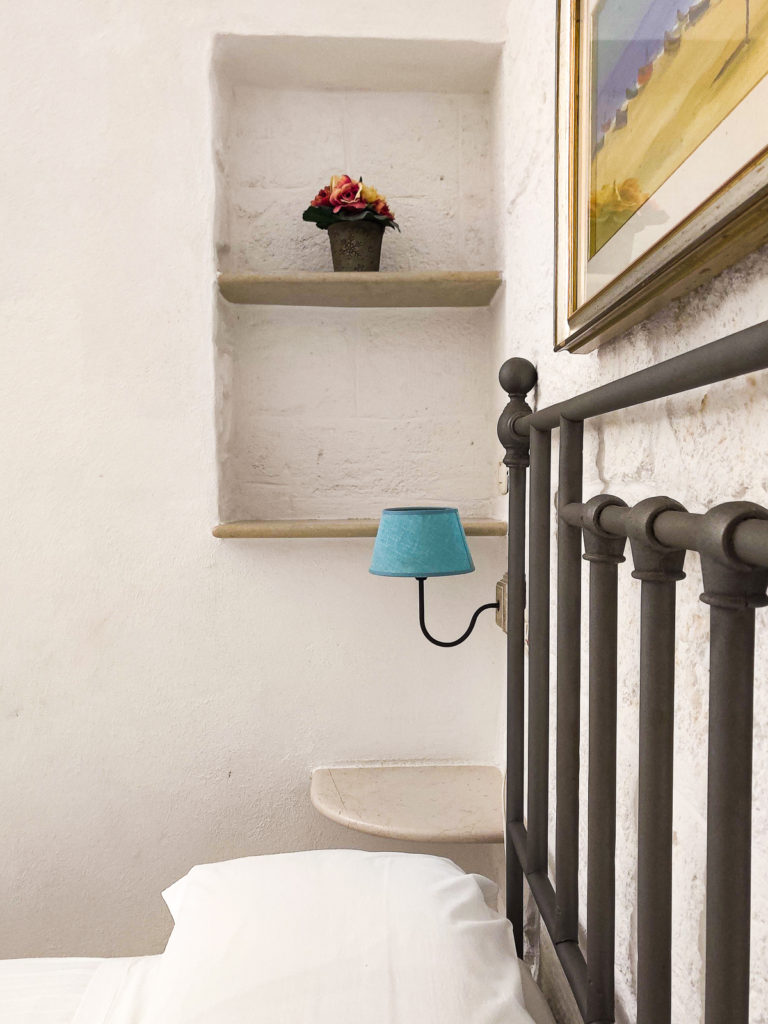
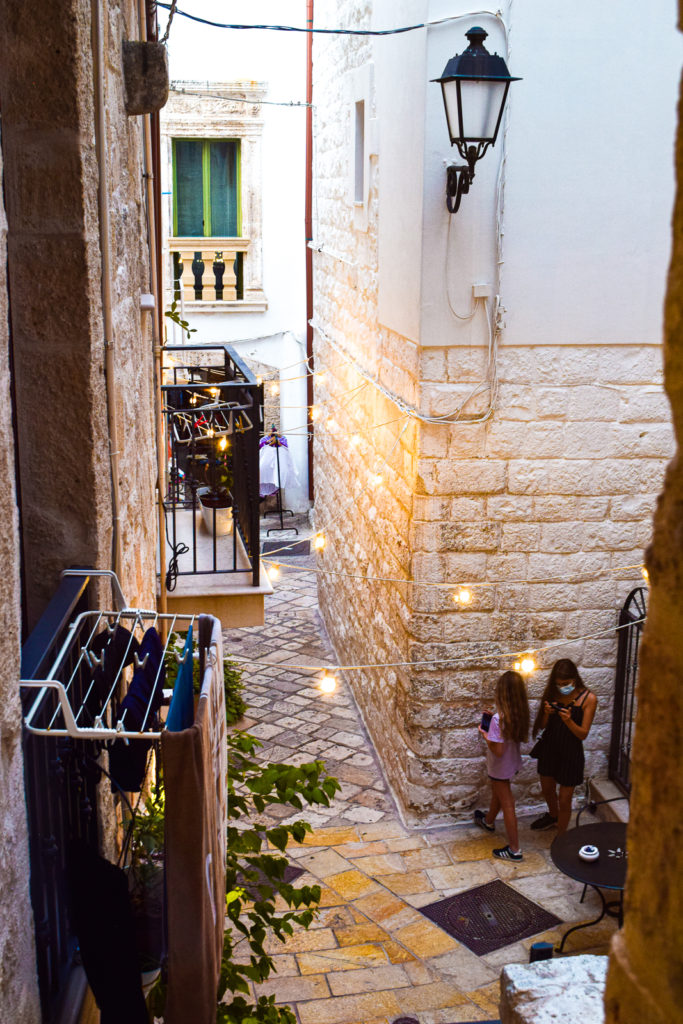
Prime location, center of the old city, sea views, an alley that’s a reprieve from the blasting summer heat, and a local family run bed and breakfast. Dimora Santo Stefano is an ideal stay when in Polignano a Mare. And the best part? It’s too good to be true, but this Polignano a Mare hotel is actually extremely affordable starting at $74 per night.
Read full article review on Dimora Santo Stefano >>
Dinner: Antiche Mura
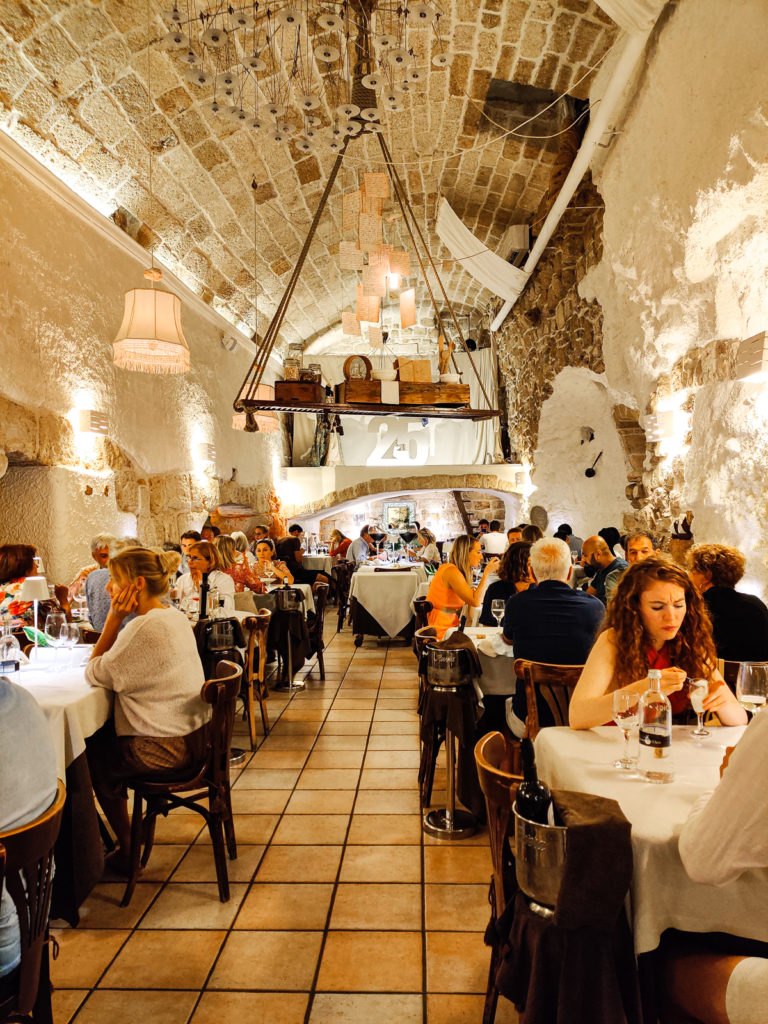
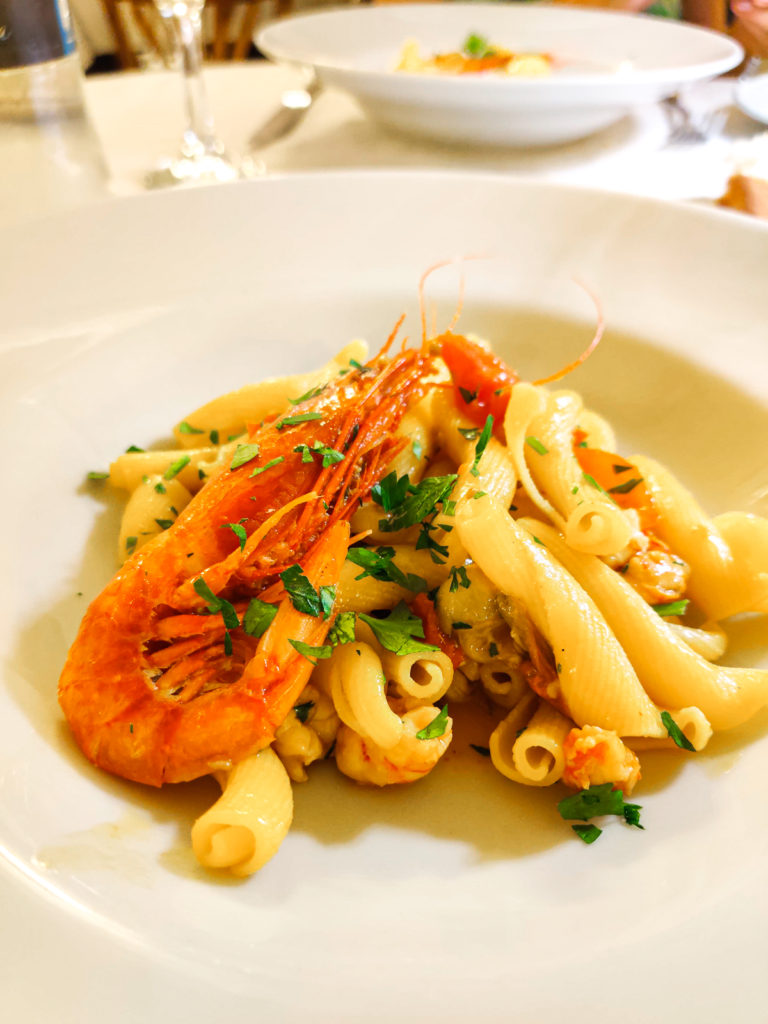
This is not an overrated Polignano a Mare restaurant. Antiche Mura is a place where you can dine while taking in the history of il centro storico. It’s where locals go when they’re looking for a good meal that isn’t overrated. The inside is charming and has a touch of elegance to it. It feels like you’re dining in a refined, white-washed cave. The dishes of choice here, of course, are mainly fish based. In reality Antiche Mura is known for is their Antiche Mura appetizer, but we ordered the baby squid as a starter–equally as satisfying and exquisite. Choosing a highlight for this meal was difficult…as an entree I ordered the torchietti pasta with red shrimp and zucchini flowers. Given the quality of fish, pasta, service, and overall atmosphere of Antiche Mura, I was surprised when the check came. Prices are very reasonable unlike other more touristy Polignano a Mare restaurants. 2 entrees and 1 antipasto was just 32 euro for 2 people.
Read full article review on Antiche Mura >>
Day 1: Polignano a Mare, Monopoli and Matera
Morning: Explore Polignano a Mare
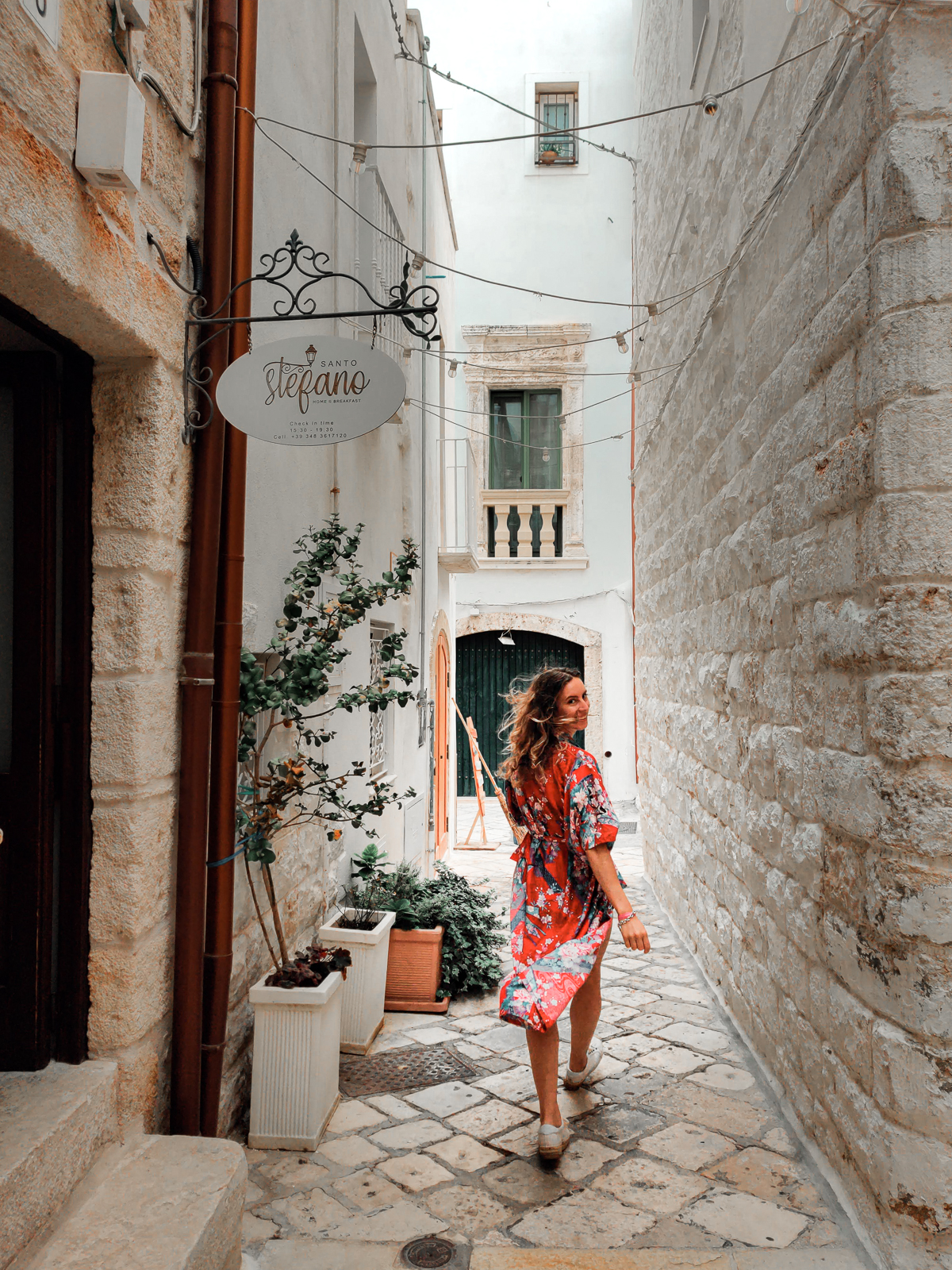
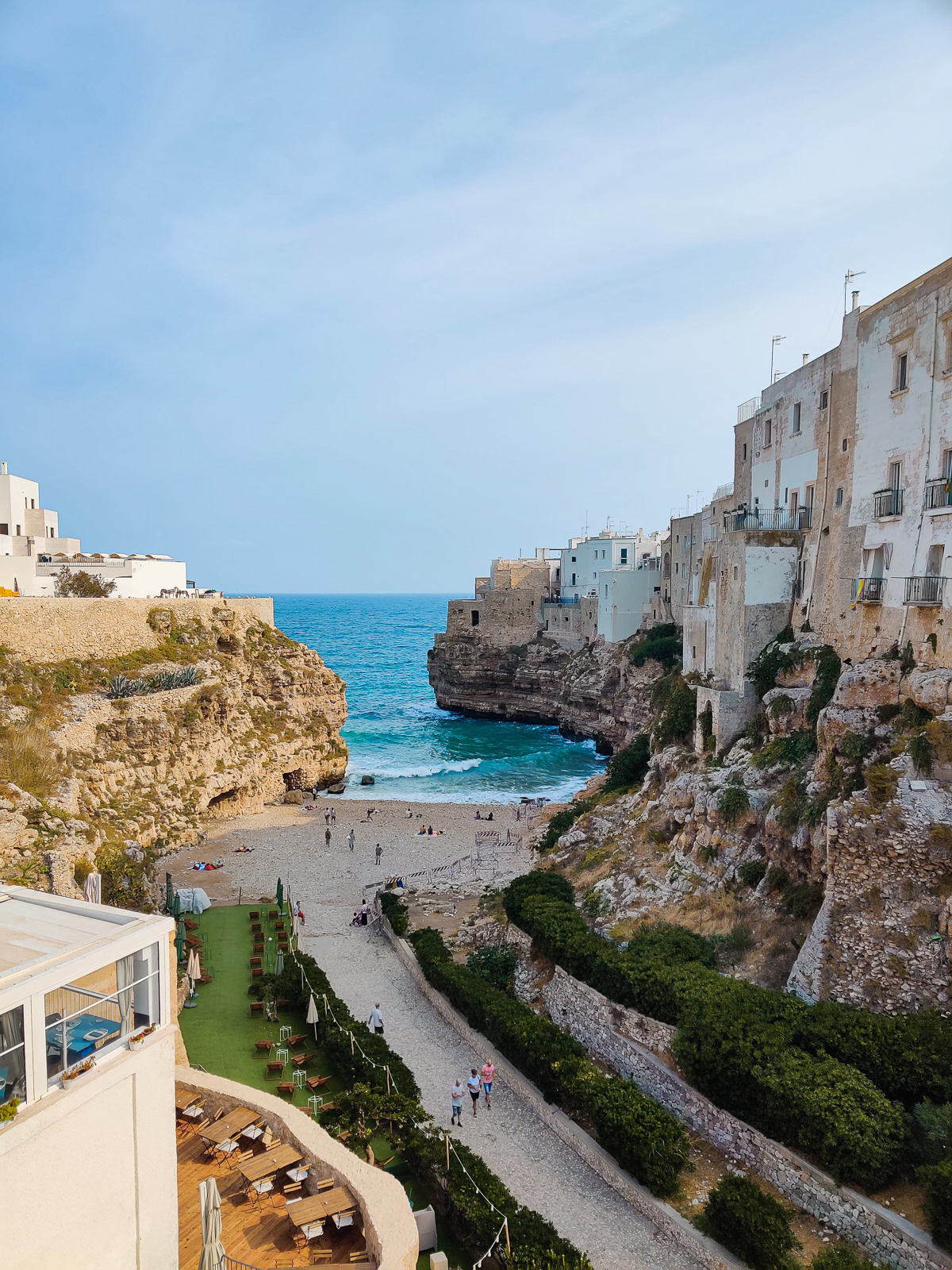
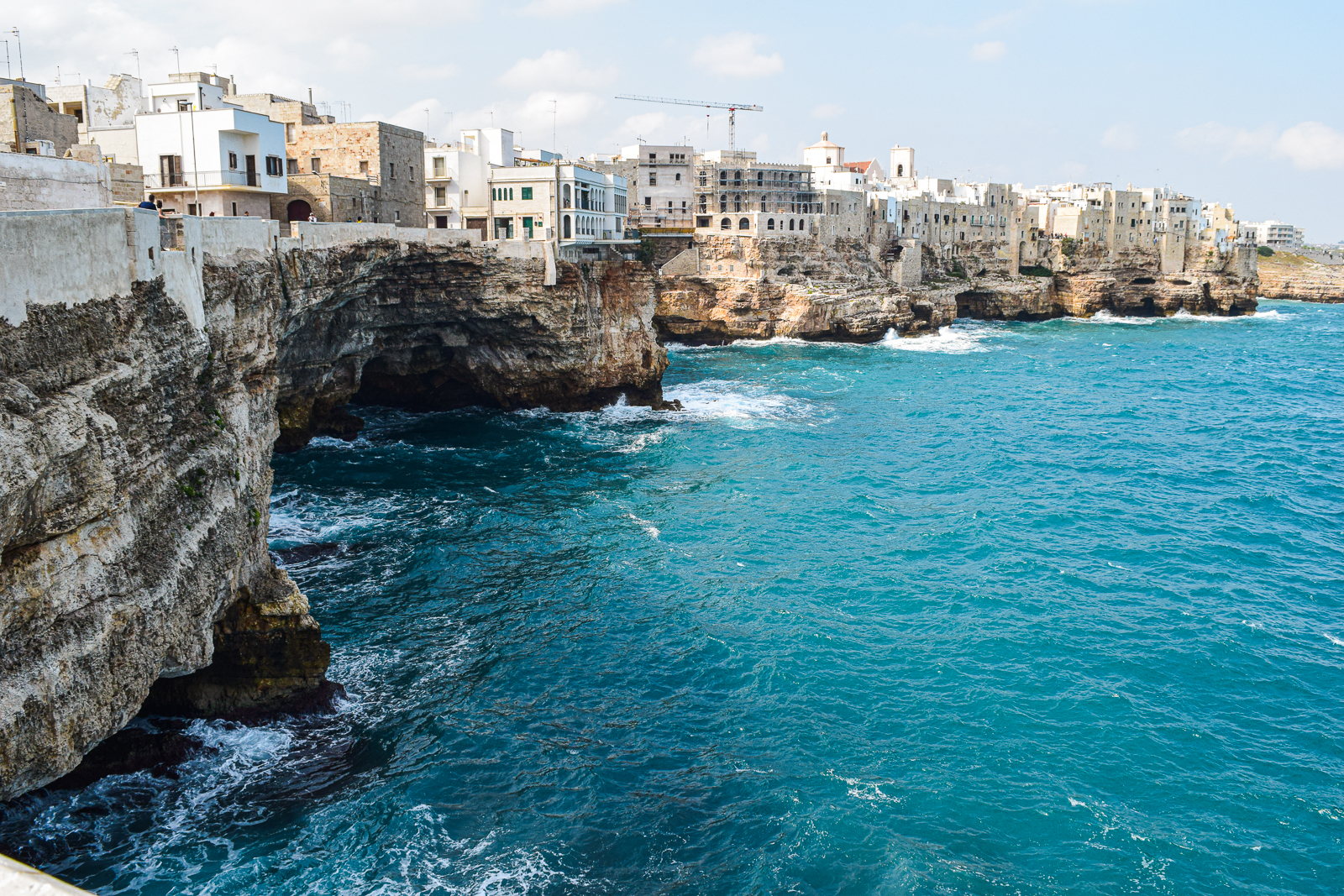
Centro storico in Polignano a Mare is fairly small. There are so many small nooks, old buildings, churches, and plants and cacti in every corner that give it a tropical boho vibe. Unlike Mykonos that’s white washed, Polignano a Mare is rich in tuff so you’ll see a mix of yellow and white stones everywhere. The town is built on top of small grottoes and caves that are so deep they reach the center of town, you just can’t see it. But continuing above ground, a day here encompasses a mix of sea views and coastal landscapes and foodie and historical moments. A myriad of sea lookouts and viewpoints, natural pools, the famous Lama Monachile beach and pietra piatta allow you to take in the sea breeze and rugged grotto coastline. Piazza Vittorio Emanuele’s churches and the Domenico Modugno statue tell the story of this white-washed towns past. And when you’re hungry, there’s a local focaccia place that will fill your carbo craving and a ‘special coffee’ only available in Polignano a Mare.
Read full article on my Essential Travel Guide to Polignano a Mare >>
Early Afternoon: Explore Monopoli
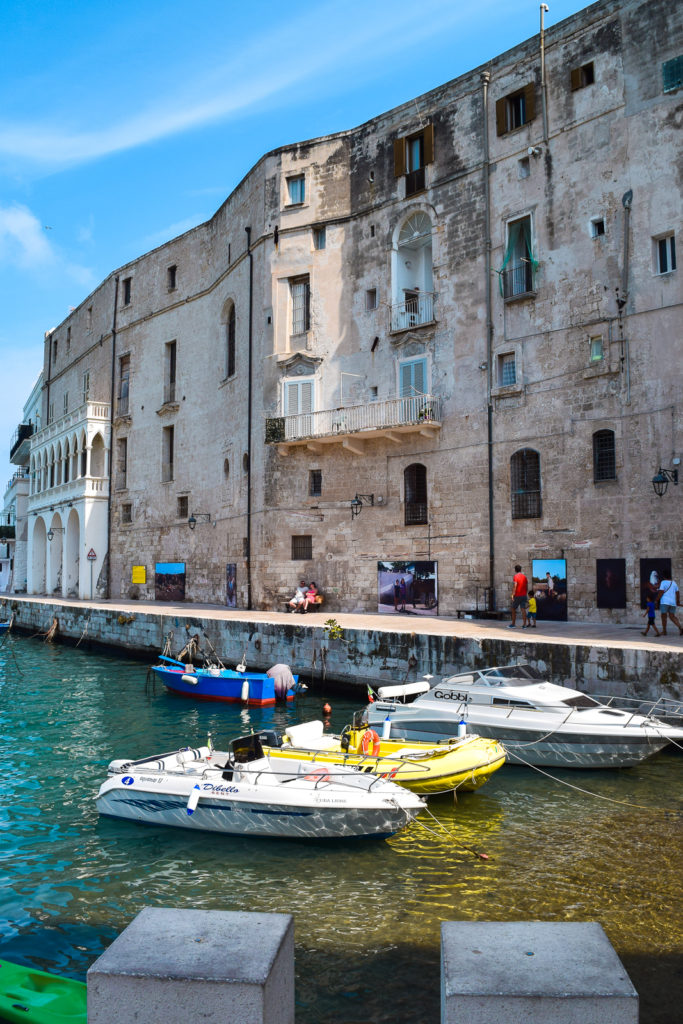
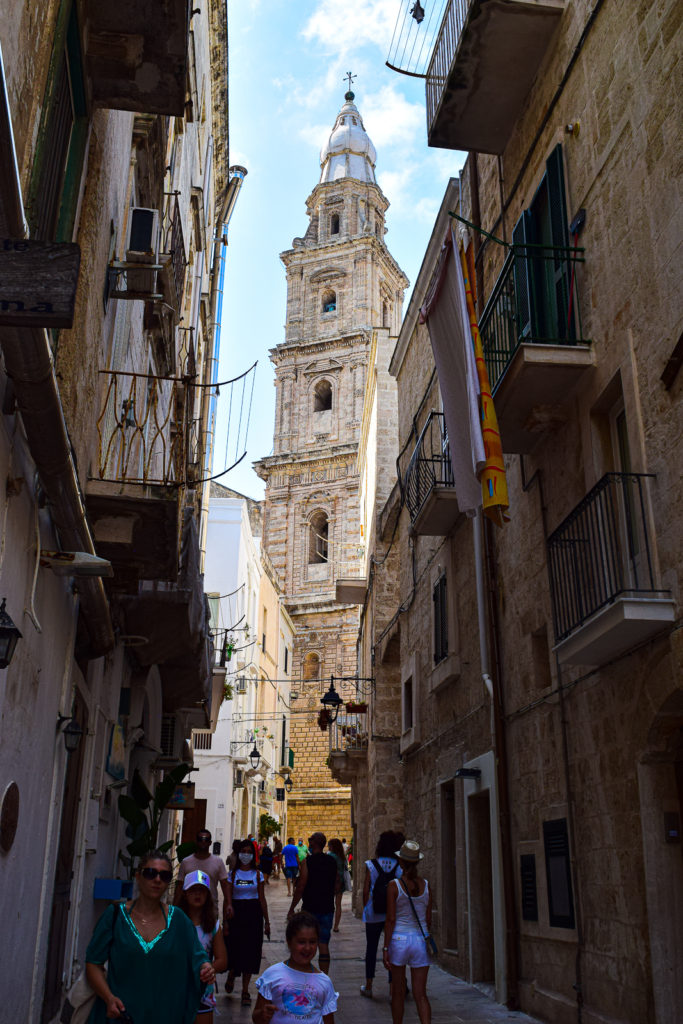
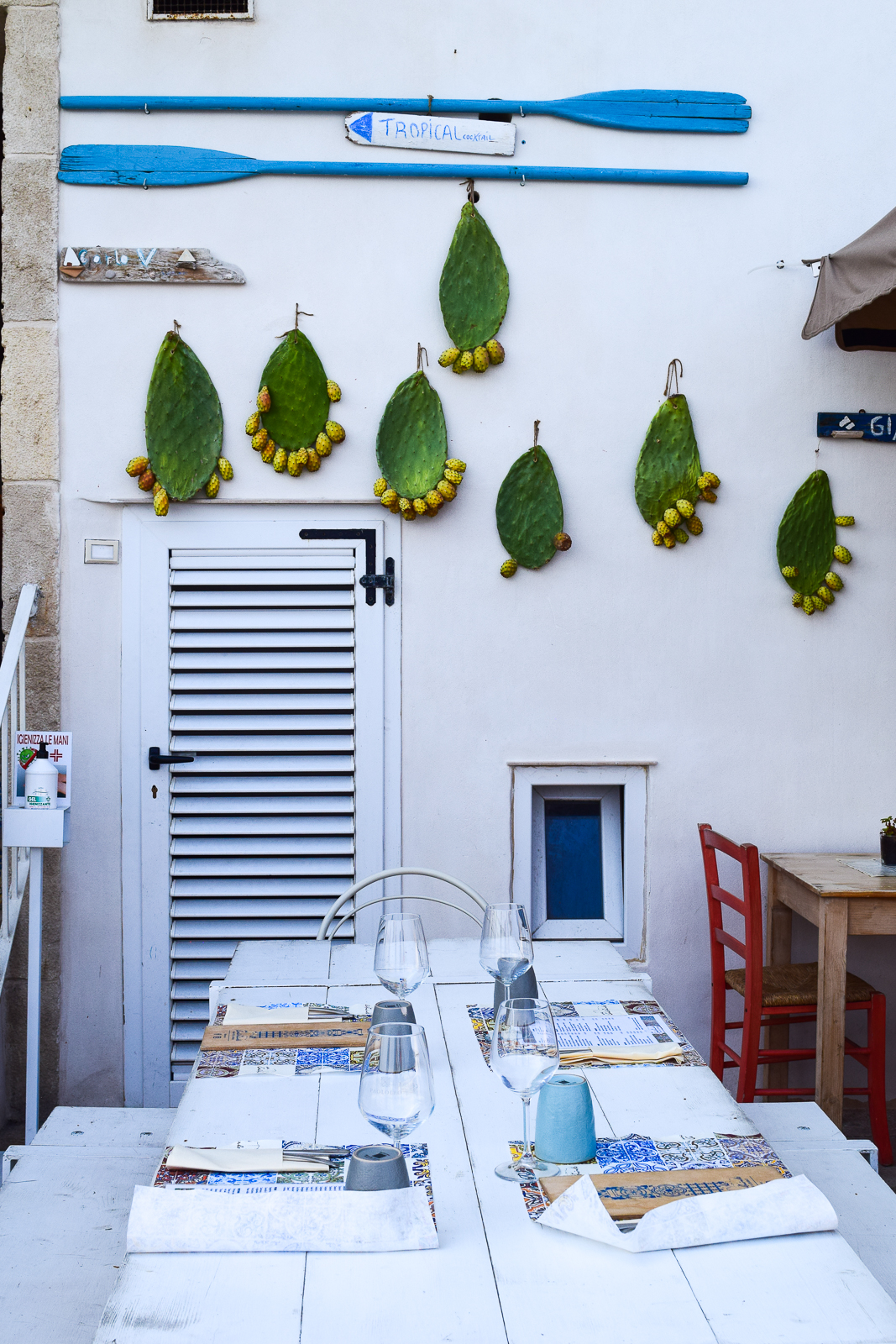
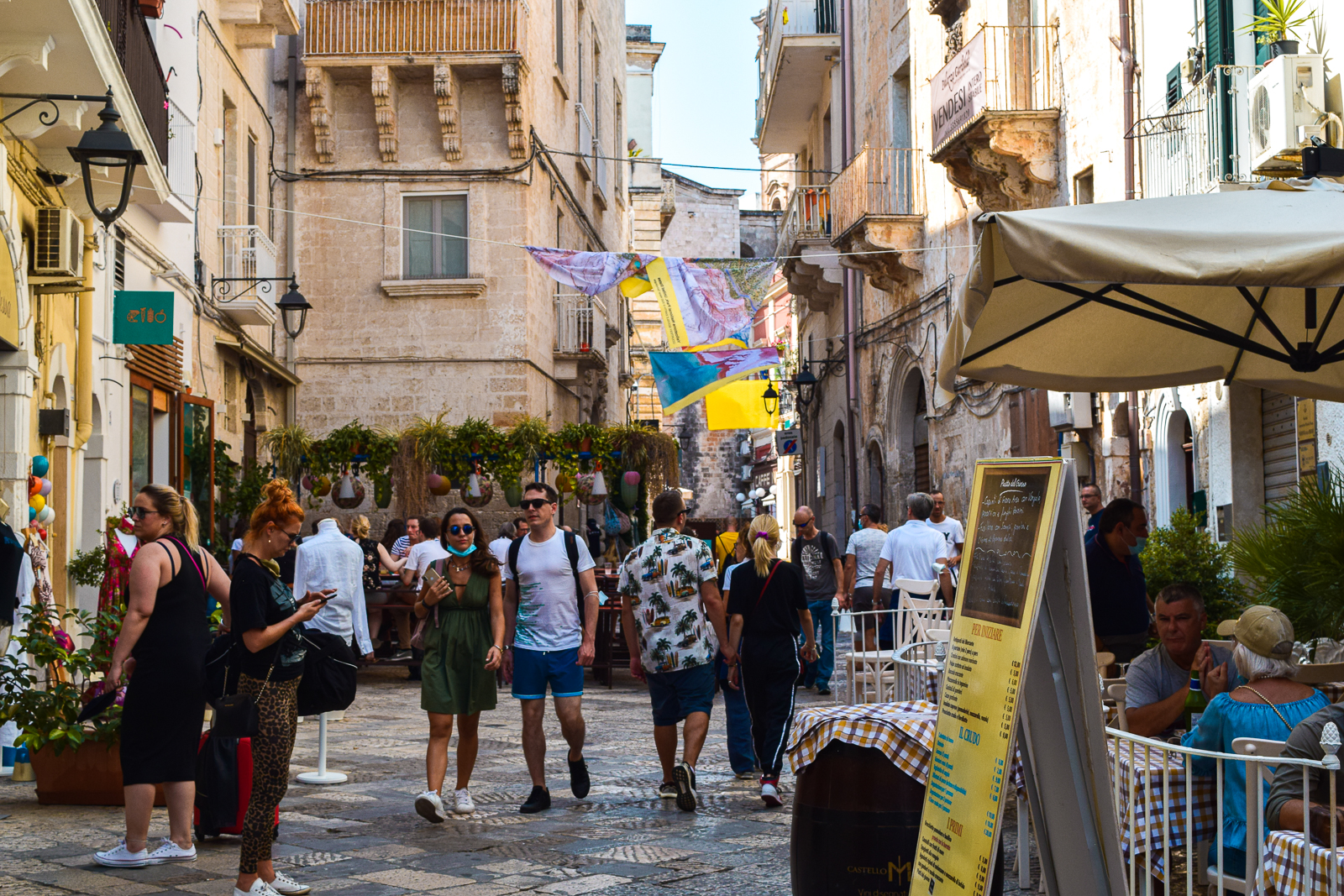
After seeing all that Polignano a Mare had to offer, we drove 20 minutes South to the seaside town of Monopoli. Monopoli is a perfect day trip from Polignano a Mare and isn’t typically on everyone’s Puglia itinerary. The town is small and doesn’t have too much to see, but it’s a nice break from the otherwise busy Polignano a Mare. The passeggiata or walk is the number 1 entertainment activity here. Wind your way through the Porto Vecchio, walk down to the tip to see Castello di Carlo V, look up at the Palazzo Martinelli, and visit Piazza Giuseppe Garibaldi. The port area has palazzos facing the sea that reminded me of Venice. The palazzos wrap around the sea lined with restaurants and stores till your reach the Castello at the tip of Monopoli. The inside is full of small alleys, cafes and the beautiful Duomo. The shadows of the alley were a nice respite from the Apulian heat and the Duomo led the way, lit up by sunlight in the middle of the town.
If you’re looking for a nice lunch spot just a few minutes driving from Monopoli, consider SaleBlu. Located in the town of Capitolo, it’s a stunning fishery perched on the Adriatic Sea. On a clear and still day, you will feel like you’ve left the mainland of Puglia and escaped to your own private island.
We’d enjoyed a nice 24 hours by the Adriatic Sea, but now it was time to go inland before making our way across to the Ionian side of Puglia. Our layover would be in Matera, which is not technically a part of a Puglia itinerary since it’s a part of the Basilicata region. However, it’s so close to Puglia that it is commonly bundled within a Puglia itinerary as a must visit road trip stop. My mother and I hopped in the car and drove 1h20min from Monopoli to Matera.
Check-in: At a Cave Hotel in Matera at Sextantio Le Grotte della Civita
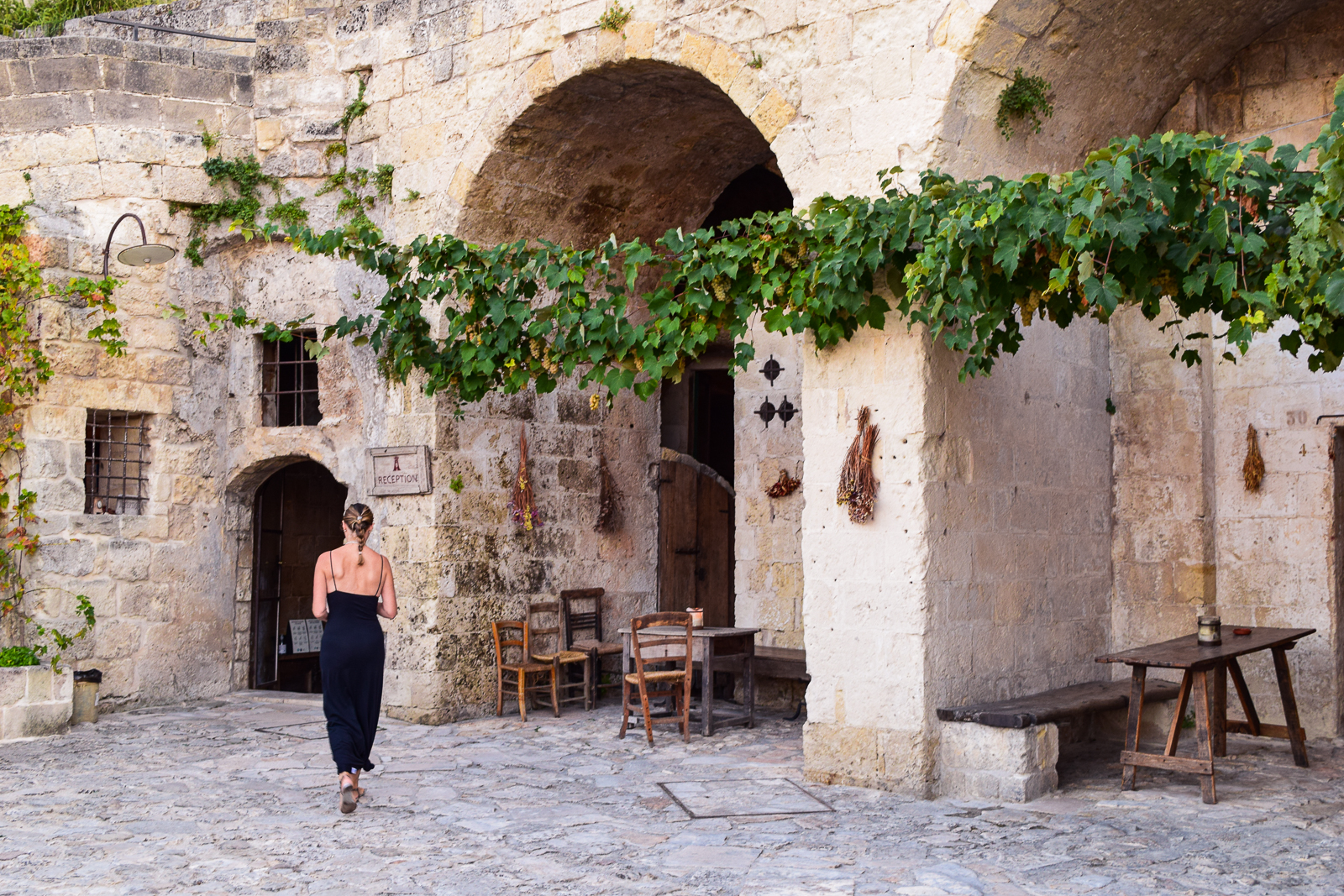
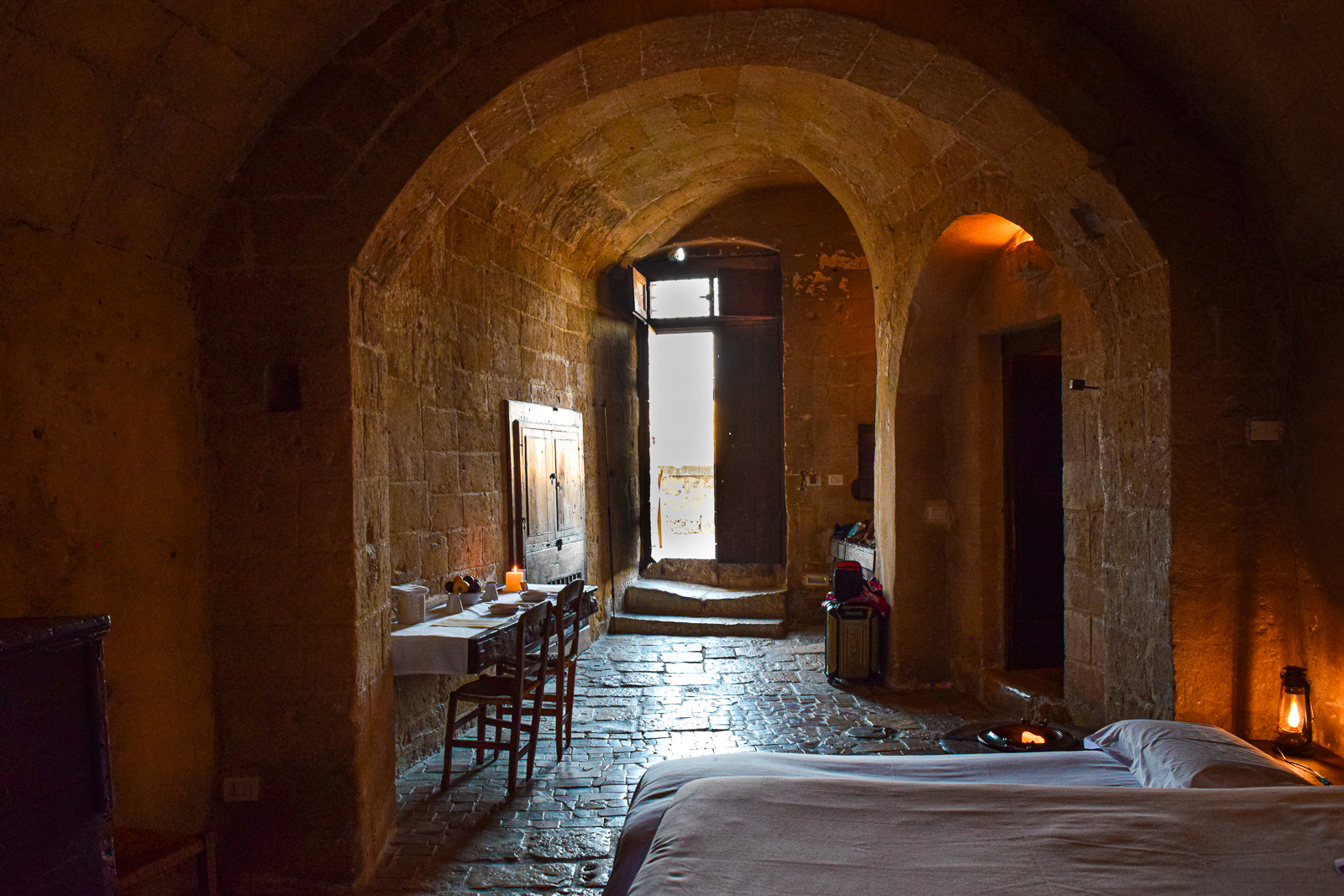
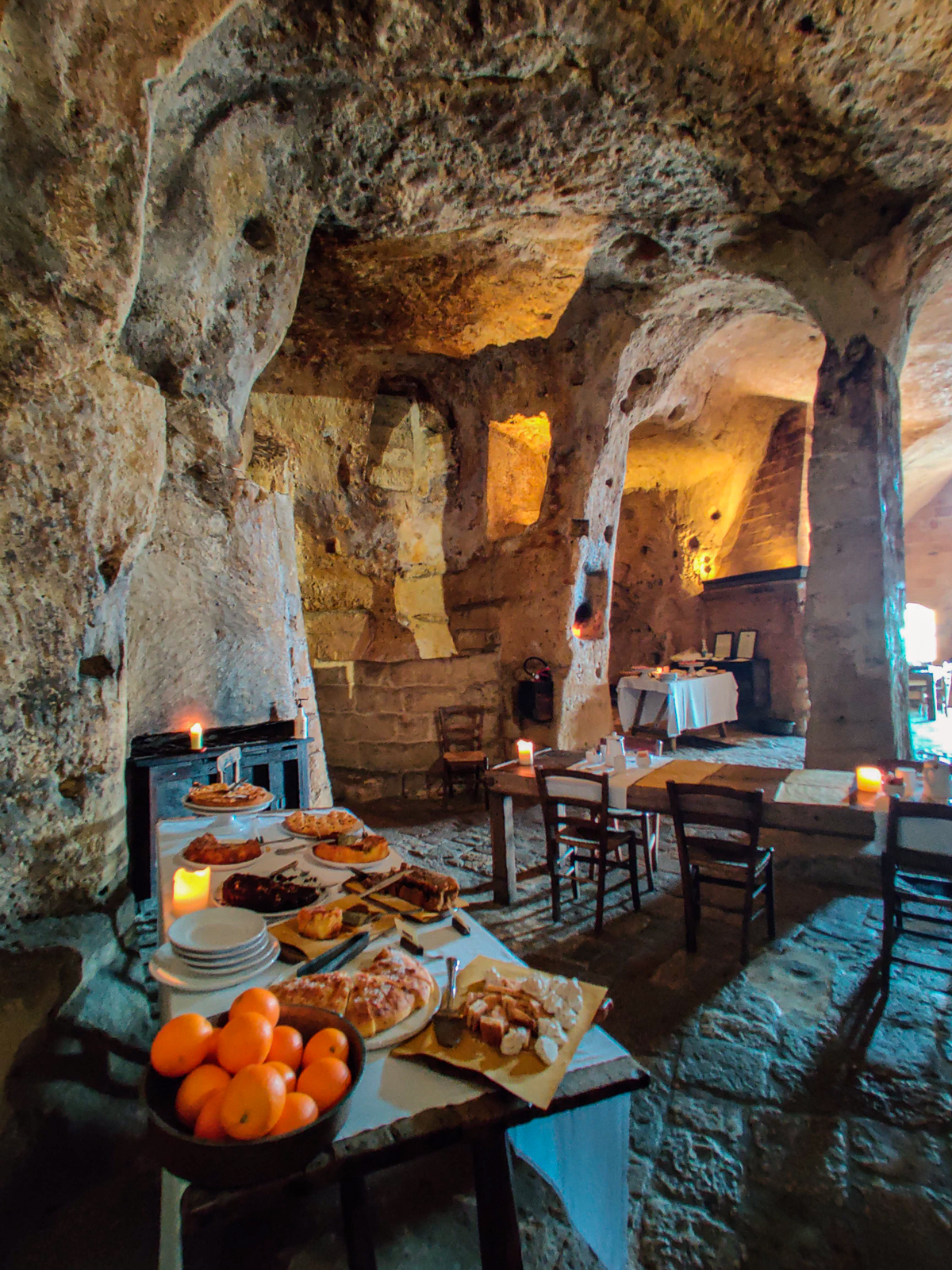
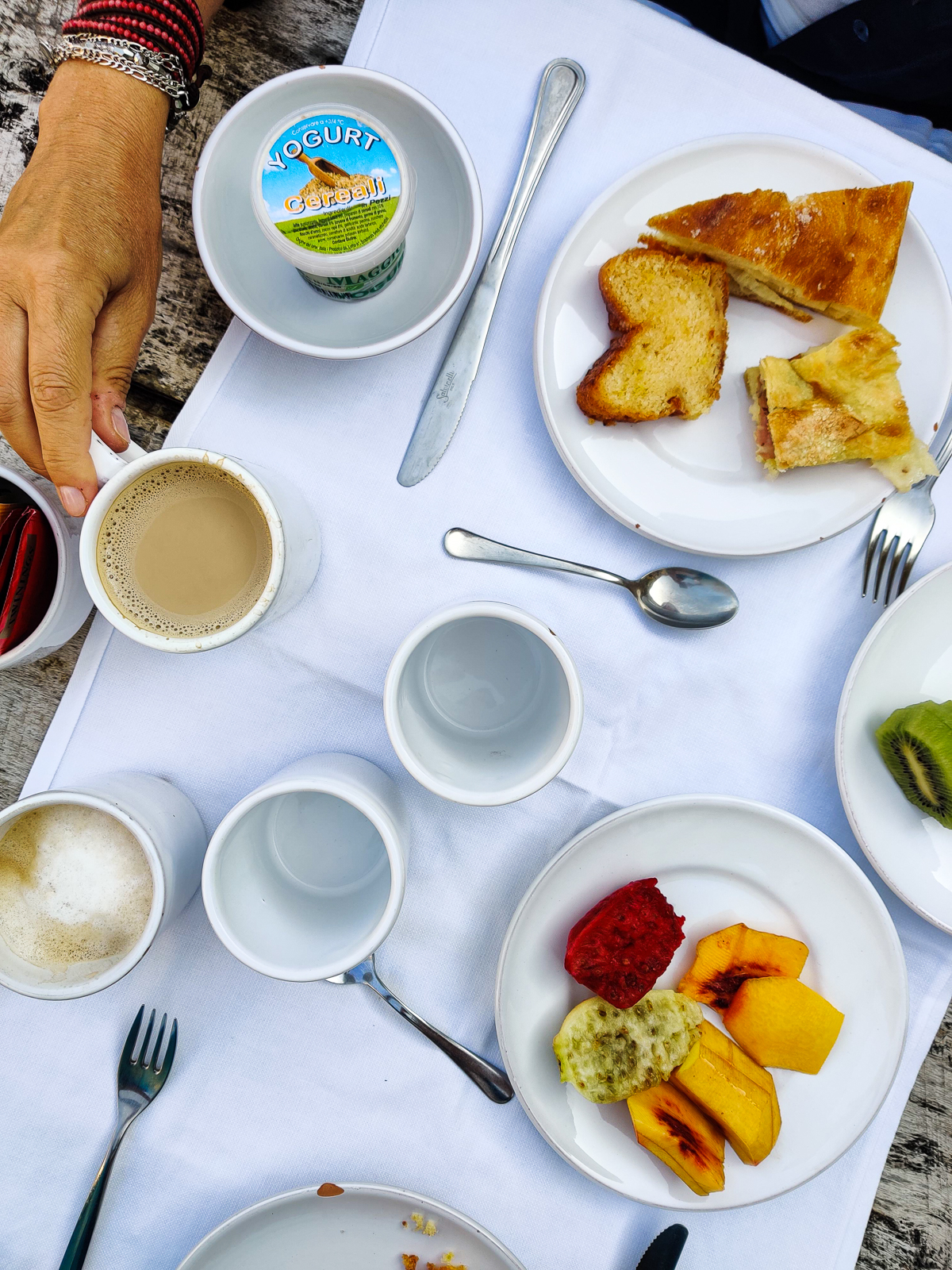
When staying in the 9000 year old village of Matera in Basilicata, there is no better way to immerse yourself into how the townspeople lived up until the 1980s (but in a bit more style and modernity), than a stay in their old abodes at Sextantio Le Grotte della Civita.
The term luxury is redefined at the cave hotel Sextantio Le Grotte della Civita located in the sassi area of Matera. This albergo diffuso, or dispersed hotel, brings to life the history, atmosphere, life, and soul of i sassi recognized as a UNESCO World Heritage Site. Every room you step into at Sextantio Le Grotte della Civita has been zealously preserved to revive the original structure and breakfast is held in the old 13th century rock hewn cave church. There are 18 caves or rooms and we stayed in Cave 7, which is a Superior room.
Read full article on my Stay in Cave Hotel Sextantio Le Grotte dell Civita in Matera, Basilicata >>
Evening: Explore Matera at Night
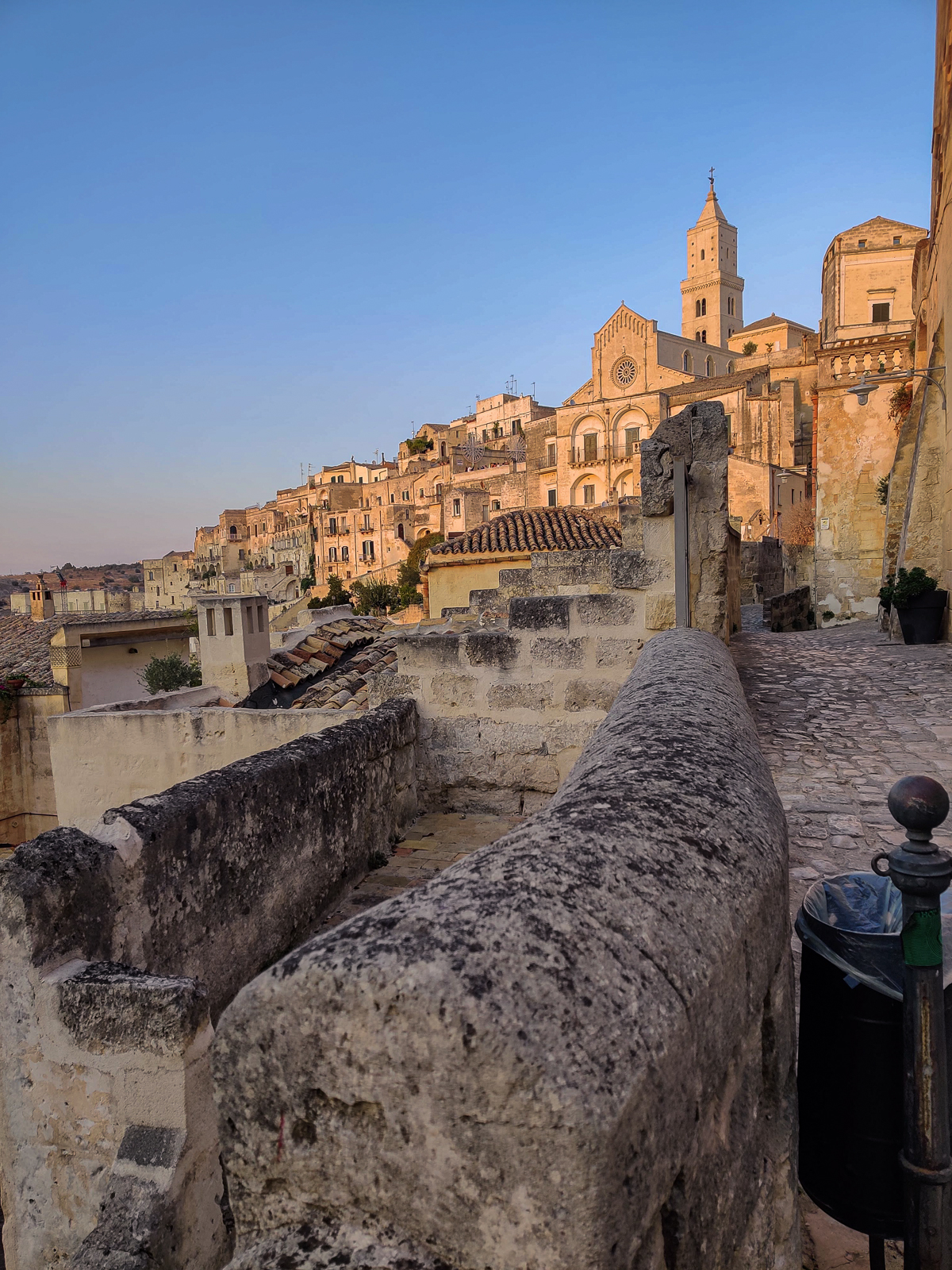
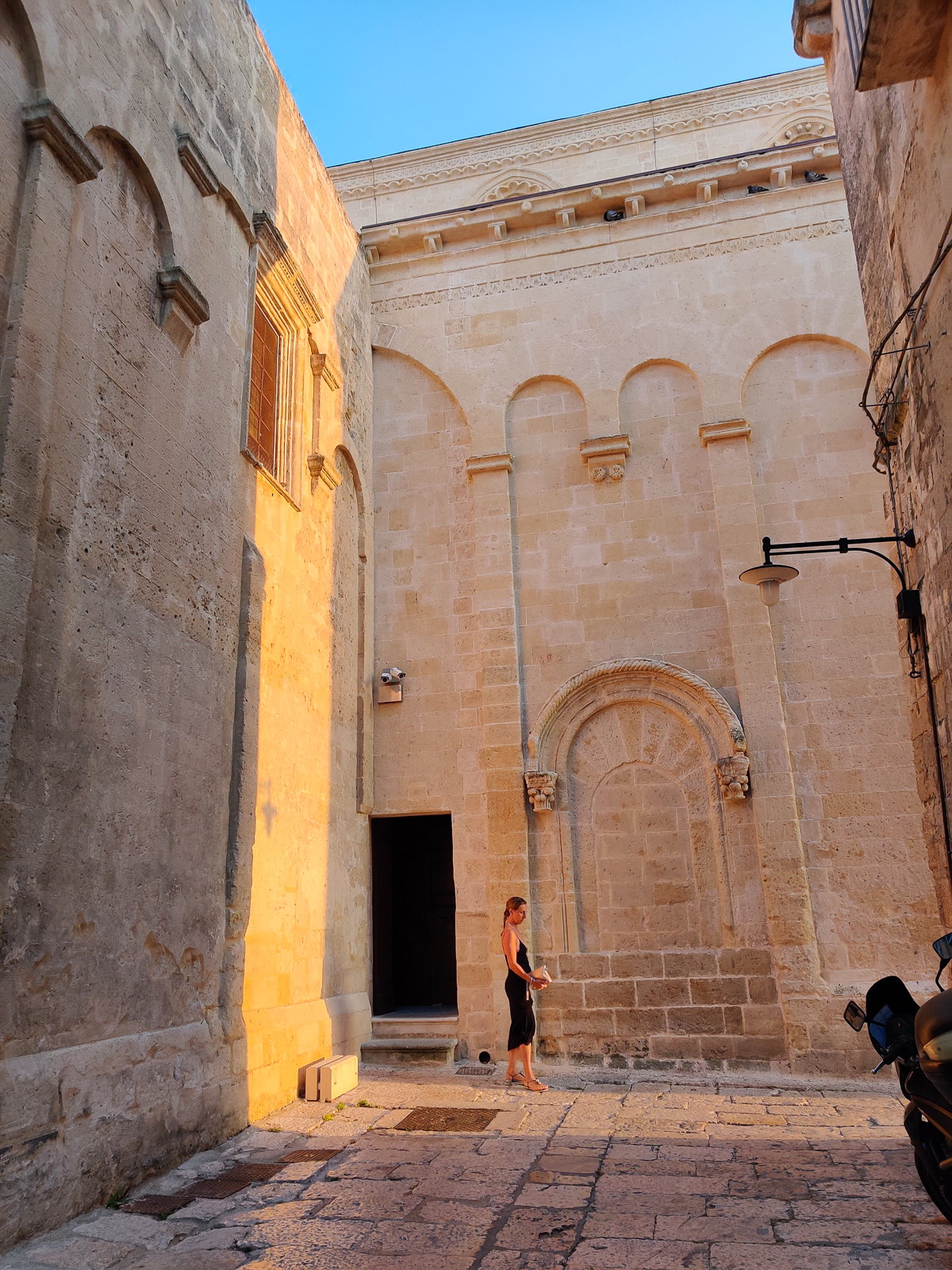
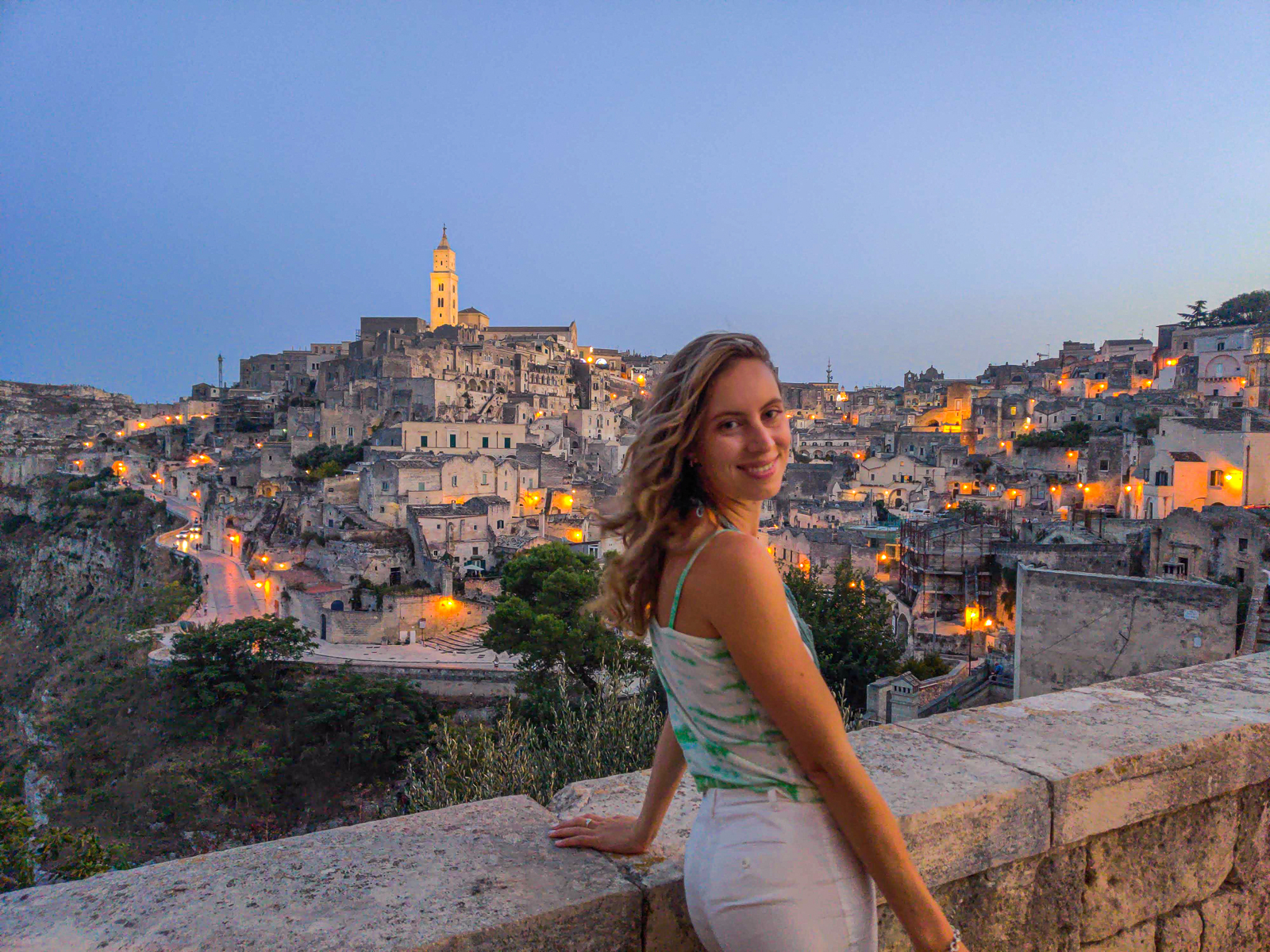
Exploring Matera in the evening, when the sun is setting and casts a pink and purple hue onto the town and when the towns lights turn on here and there is a sight for sore eyes. It feels like a scene from an Arabian nights tale or a glamorized nativity scene. In fact, exploring Matera at night feels like you’re exploring a completely different side of the city than during the day. My recommendation is to explore half of Matera at night and the other half during the day. Making sure to hit viewpoints like the Church and Convent of Saint Agostino above during the evening.
Read my full article on Matera, Italy: 13 Ways to Experience the True Magic >>
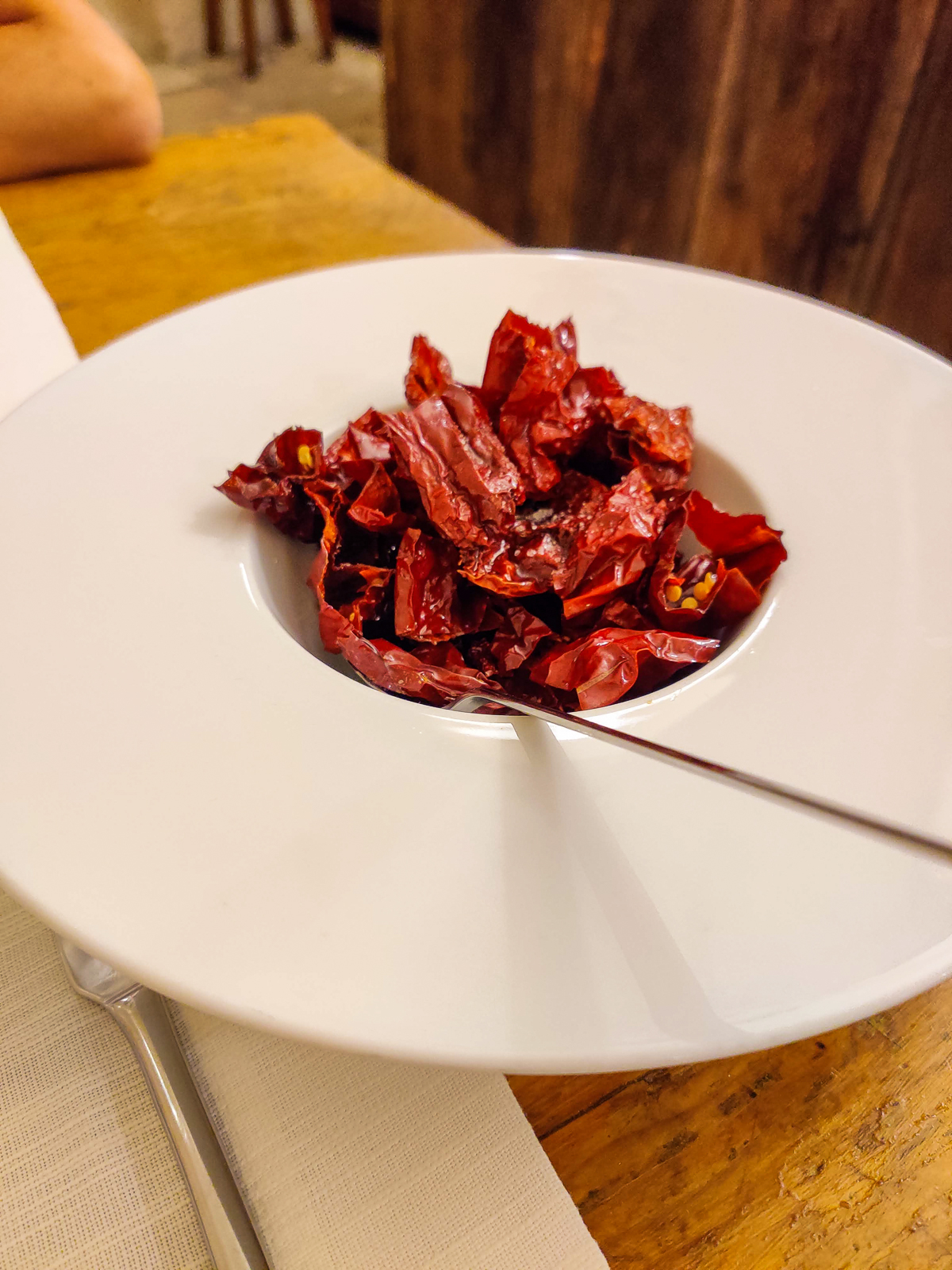
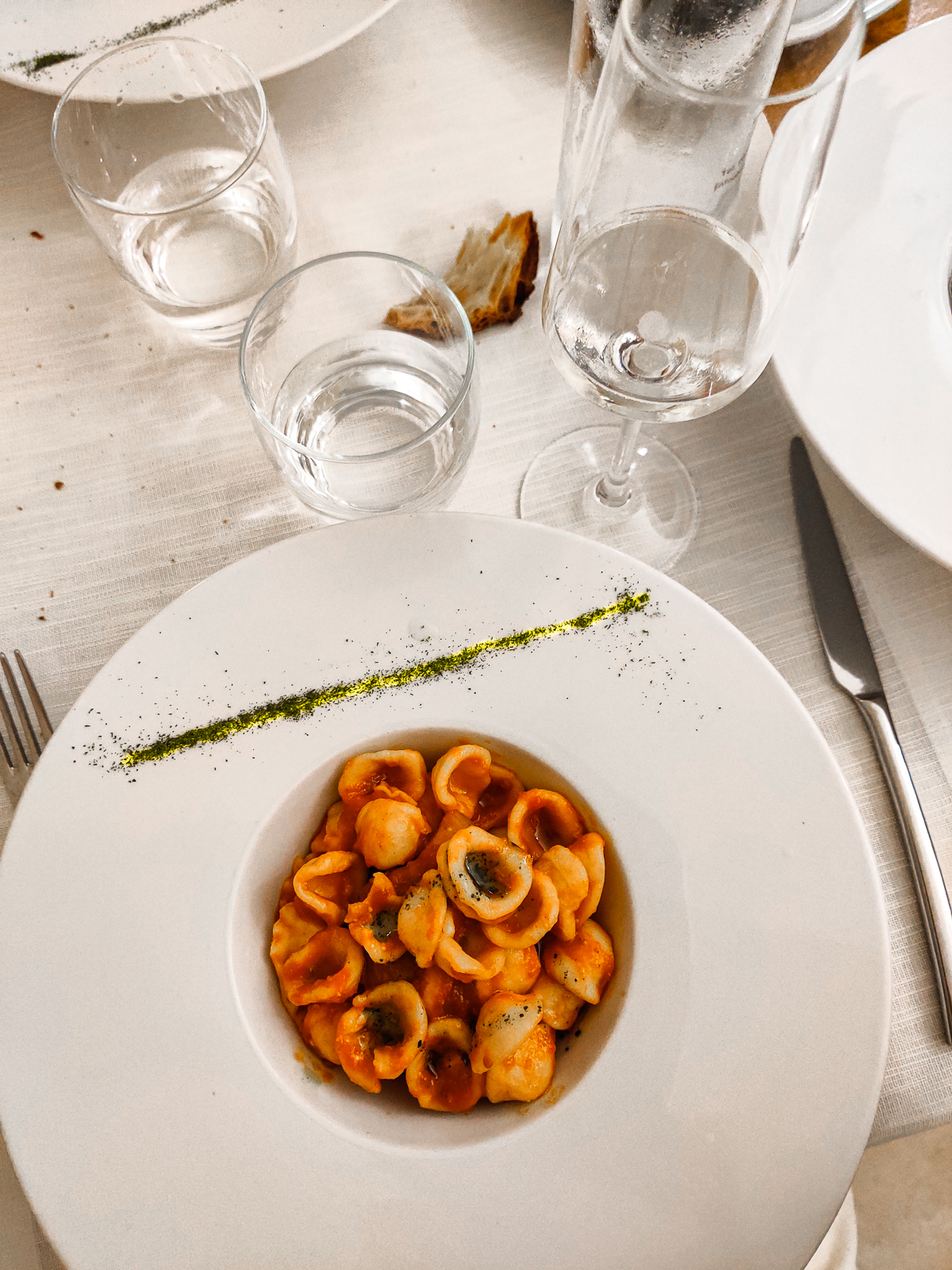
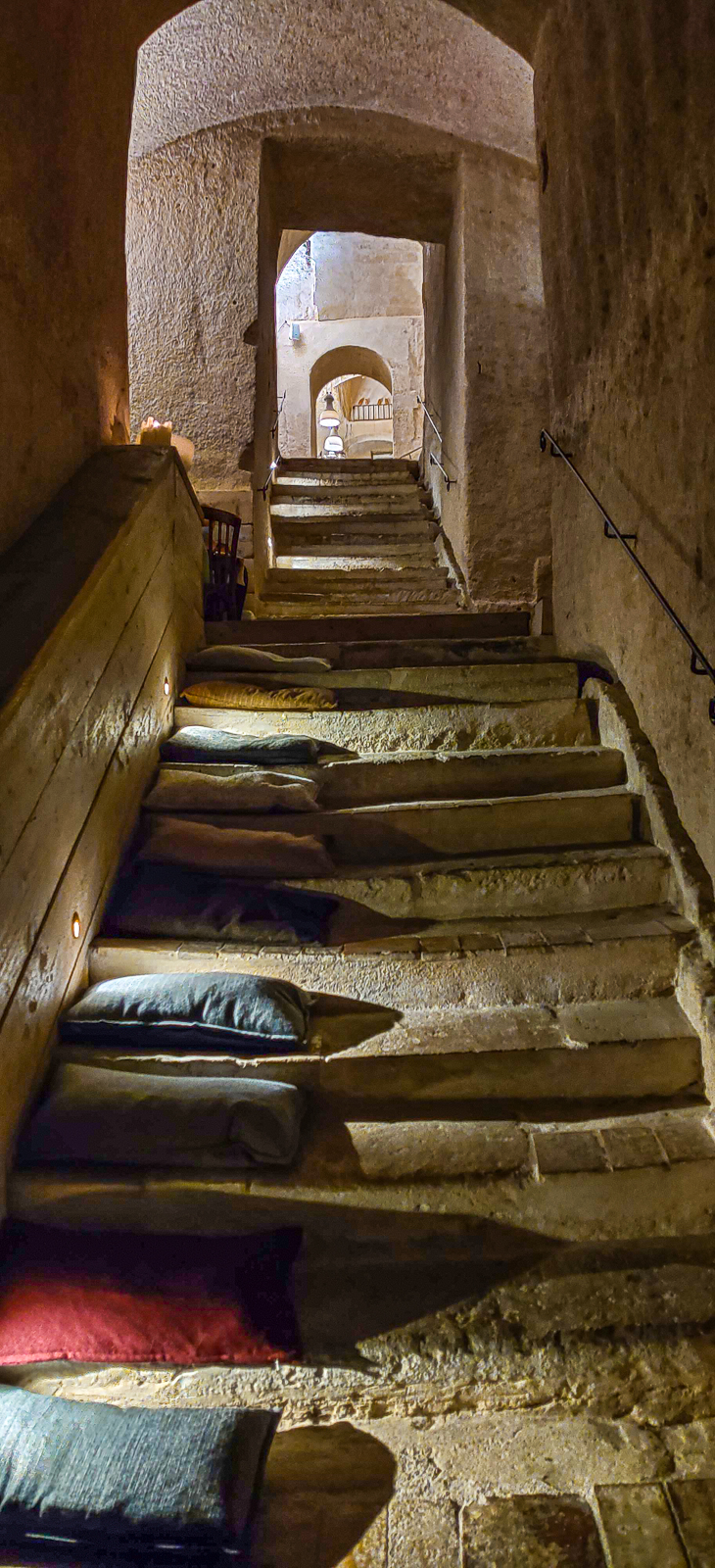
During my time at cave hotel Sextantio Le Grotte della Civita, they introduced me to more than just a piece of history and culture recognized by UNESCO. They introduced me to mouth-watering and unforgettable local delicacies and artisans as well. As we headed out to explore Matera, we asked Marienza, the local staff member at Sextantio, for a local dinner recommendation. We weren’t looking to eat in Matera at a fancy restaurant. We were looking for homemade food made by Nonna‘s (grandmas), local pastas of the day, simple fare etc. When it comes to where to eat in Matera, go with this local recommendation: La Lopa. At La Lopa, you can taste traditional specialties, such as peperoni cruschi and the famed pane di Matera, and food in a unique setting unlike any other. Plus, not only will you be eating in a cave restaurant…but La Lopa also has a hidden underground movie room to enjoy a digestivo post dinner.
Day 2: Matera & Nardò
Morning: Explore Matera
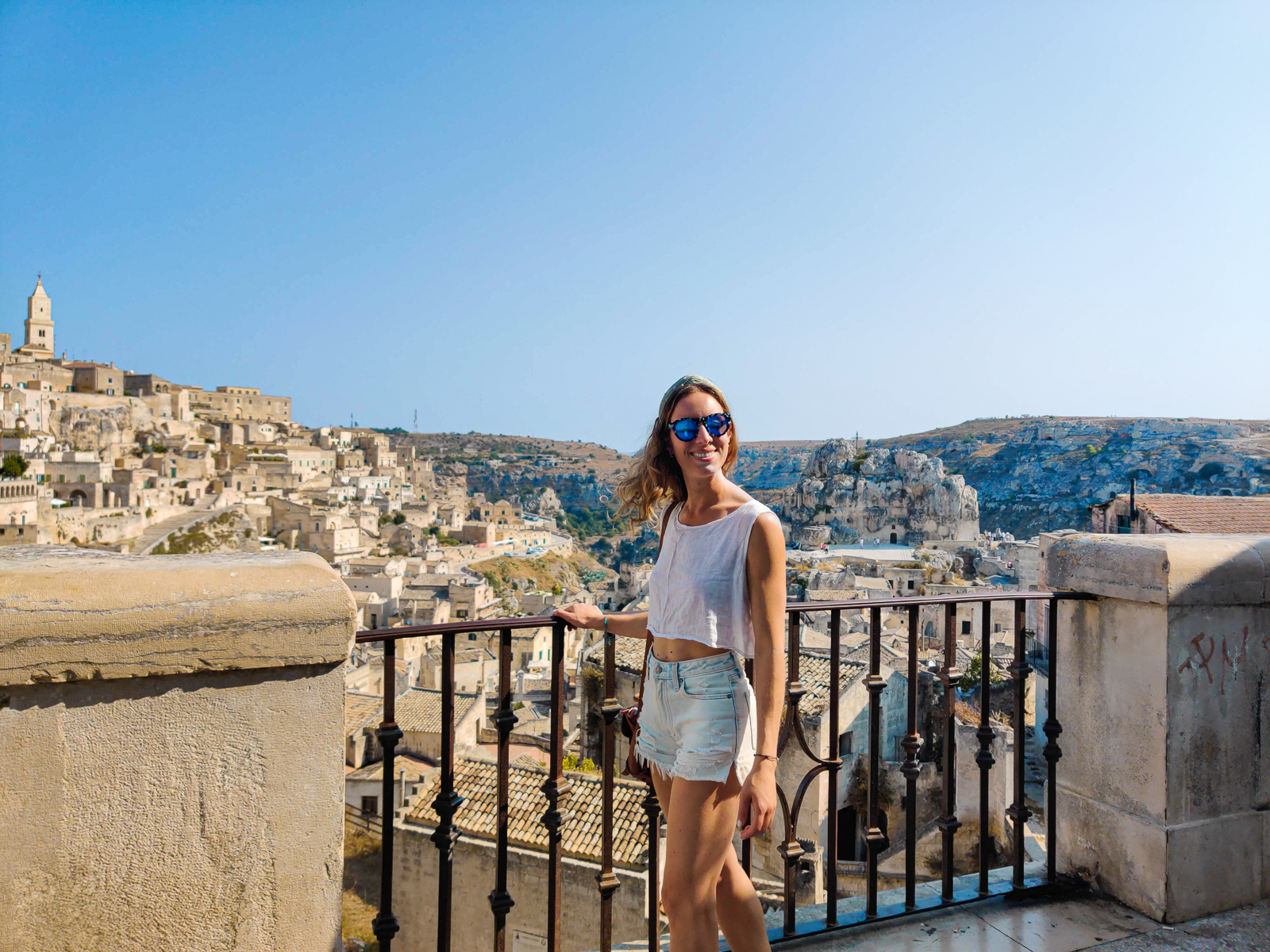
In an age where technology is at the forefront and human interactions are cut down by the day, making us less human, less connected, and less alive, Matera’s sassi are a symbol and representation of the opposite. That which we’ve lost and are losing: human life that enriches humanity. In 1993, the town was acknowledged by UNESCO for it’s beauty and history. Similar to Alberobello, it was recognized for having preserved a historic and traditional architecture and way of life in an urban and modernizing world. While many locals have since moved out, a few of the local contandini, or artisans, have remained to carry out the work from back in the day. Today, 30-40% of the caves, or sassi, you see in Matera are abandoned. The ones that are used can only be used for commercial use as a hotel, like the one I stayed at Sextantio Le Grotte della Civita, a restaurant, like La Lopa that I ate at, a store, and more.
Read my full article on Matera, Italy: 13 Ways to Experience the True Magic >>
Early Afternoon: Drive down the west side of the Salento coast and stop by Punta Prosciutto, Torre Colimena & Saline dei Monaci
It was time to make our way back down to Puglia and stick to the original Puglia itinerary. We drove down the west coast of Puglia facing the Ionian and attempted to make a few stops by some noteworthy coastal places. Welcome to Salento…the southernmost part of Italy’s heel. It begins where the hills of the Valle d’Itria end. The hills flatten and from there the land becomes a long flat tongue until you drive down to its tip. The land is is sandwiched between two seas – the Adriatic on the east and the Ionian on the west. Salento is home to some of Italy’s sleepiest, lesser known yet most unique and historic towns that still preserve their strong ties with Greece. It’s even preserved in the local dialect “Grika.” In addition the the crystal clear beaches and dramatic rocky coastlines, their unassuming genuineness and unspoiled historic centers make the area worth visiting. You’ll be visiting these towns over the next few days and familiarize yourself with all their nuances.
An 1h55min South of Matera was our first stop, Punta Prosciutto, a beach that looks identical to the Maldives due to it’s super clear blue waters. Unfortunately when we showed up, the beach was flooded with people, we could barely see the sand. That’s one of the downsides of visiting these places on a weekend or during peak season. That you won’t be able to see the beauty do to the number of people. If you’re going to add beach stops to your Puglia itinerary, I recommend you visit during a weekday in May and September to have the whole place to yourself.
The next was Torre Colimena and the Saline dei Monaci just 15 minutes from Punta Prosciutto. This area is known for their population of Flamingoes. We ran into the same issue here of there being too many people, so continued South along the coast for another 15 minutes until we reached our final destination of Nardò.
Afternoon: Explore Nardò
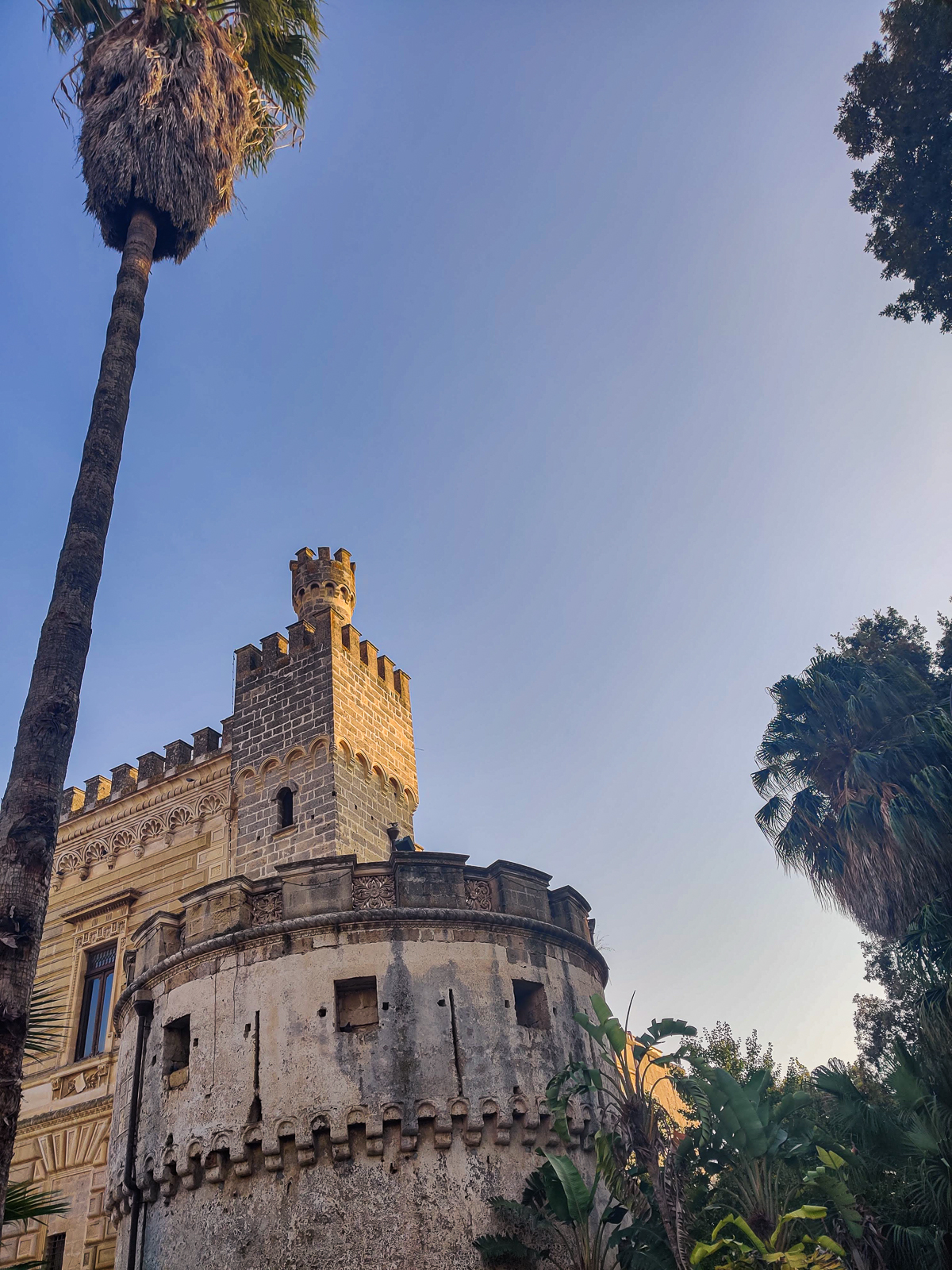
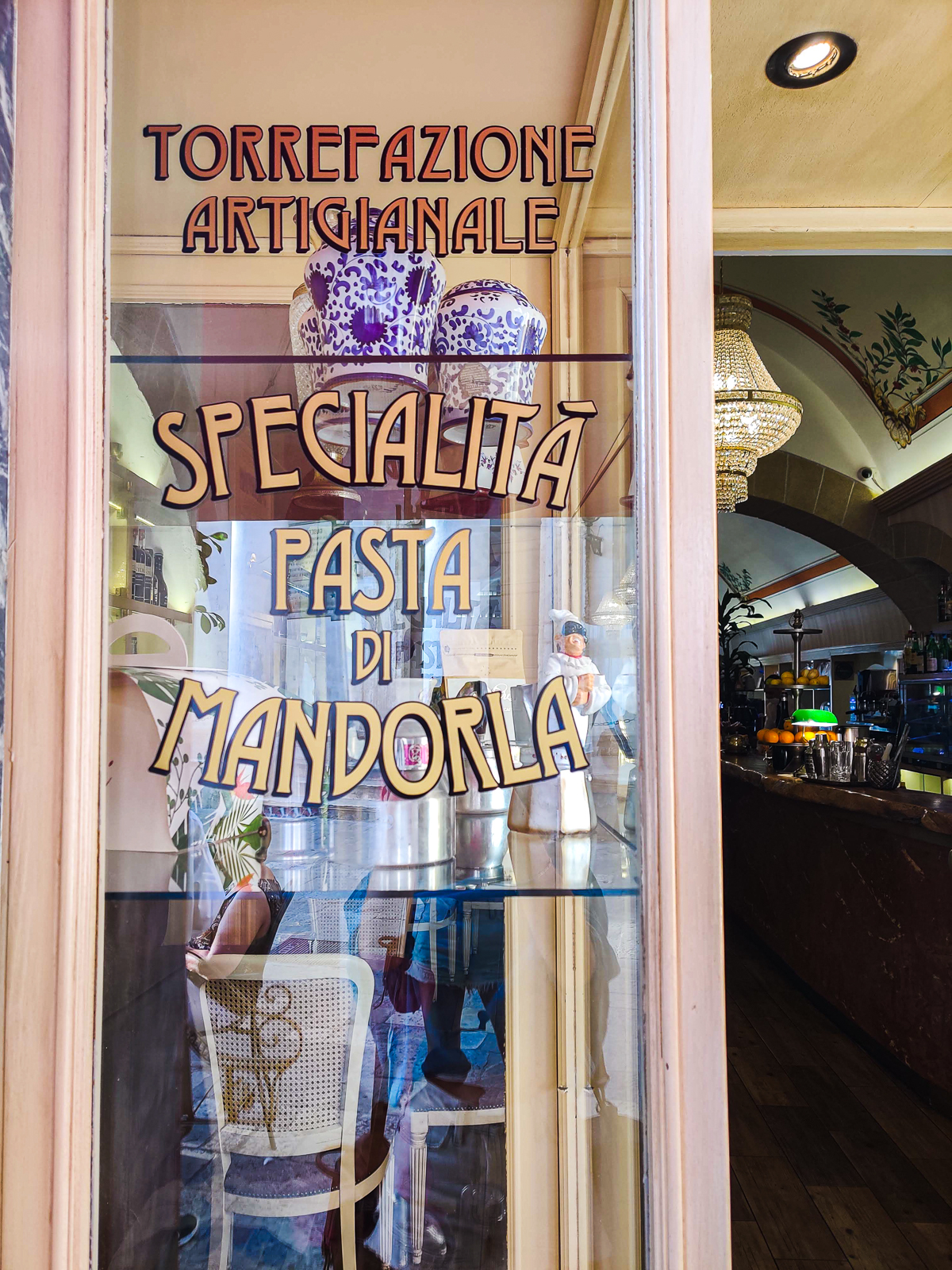
Nardò is not a highly publicized destination, therefore is not a usual Puglia itinerary destination. In fact, most Italians themselves are not familiar with it. But what you miss when you choose not to venture into this unknown and modest village is a diverse and genuine people and way of life that simply cannot be found in the more touristy areas of Puglia. Nardò was founded about 3,000 years ago and has seen it all: Messapians, Grecians, Arabs, Turks, Normans, Spaniards, French, Venitians. It’s different colonizers have turned it into a diverse mix of cultures. This diversity overcomes the five senses. It can be seen in the architecture, savored in the food, heard in the dialect and the music, felt in dance, and smelled when navigating around the area–from the fresh olive groves to the smell of sweet prickly pears in bloom and salty sea water.
During your visit, don’t forget to stop by Caffè Parisi in the main square of Nardò, Piazza Antonio Salandra. Caffè Parisi is a torrefazione artigianale, or artisanal coffee roasting business which are considered an art form in Italy. Since this was our first day in the Salento region, my mother and I ordered our first-ever caffè leccese. We accompanied our caffè leccese with a local pastry called pasticciotto, which is usually served with the coffee for breakfast. Another coffee you can try is the marocchino, but this coffee beverage is not the same marocchino as you would get in northern Italy. Of course, the southerns put a spin to it. It can be consumed hot or cold. If cold, they give it to you with a coffee cream that tastes like one of my favorite old time Italian ice creams La Coppa del Nonno – Grandpa’s cup.
Read my full article on What to Do in Nardò >>
Check-in: Nardò at Masseria Bernardini
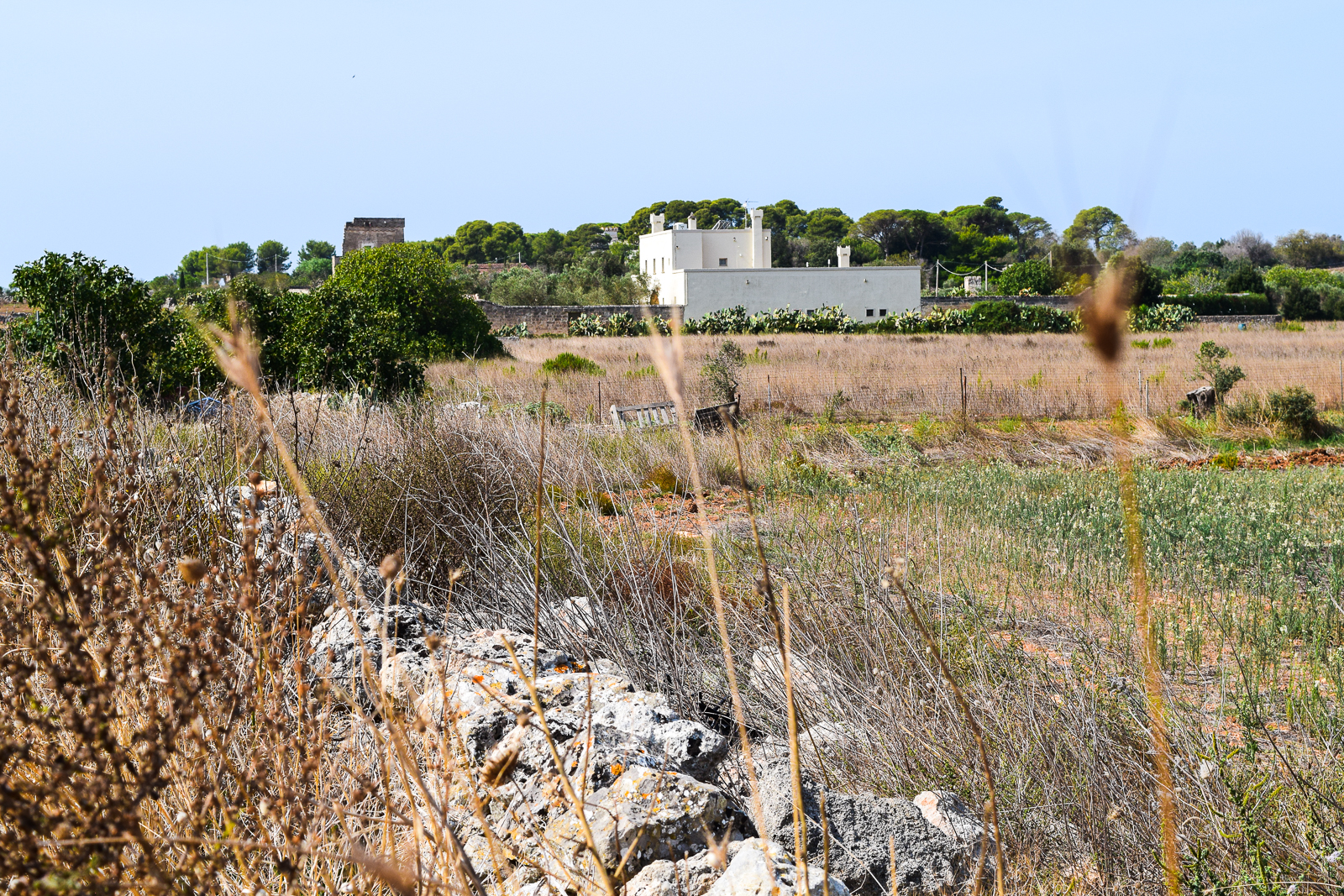
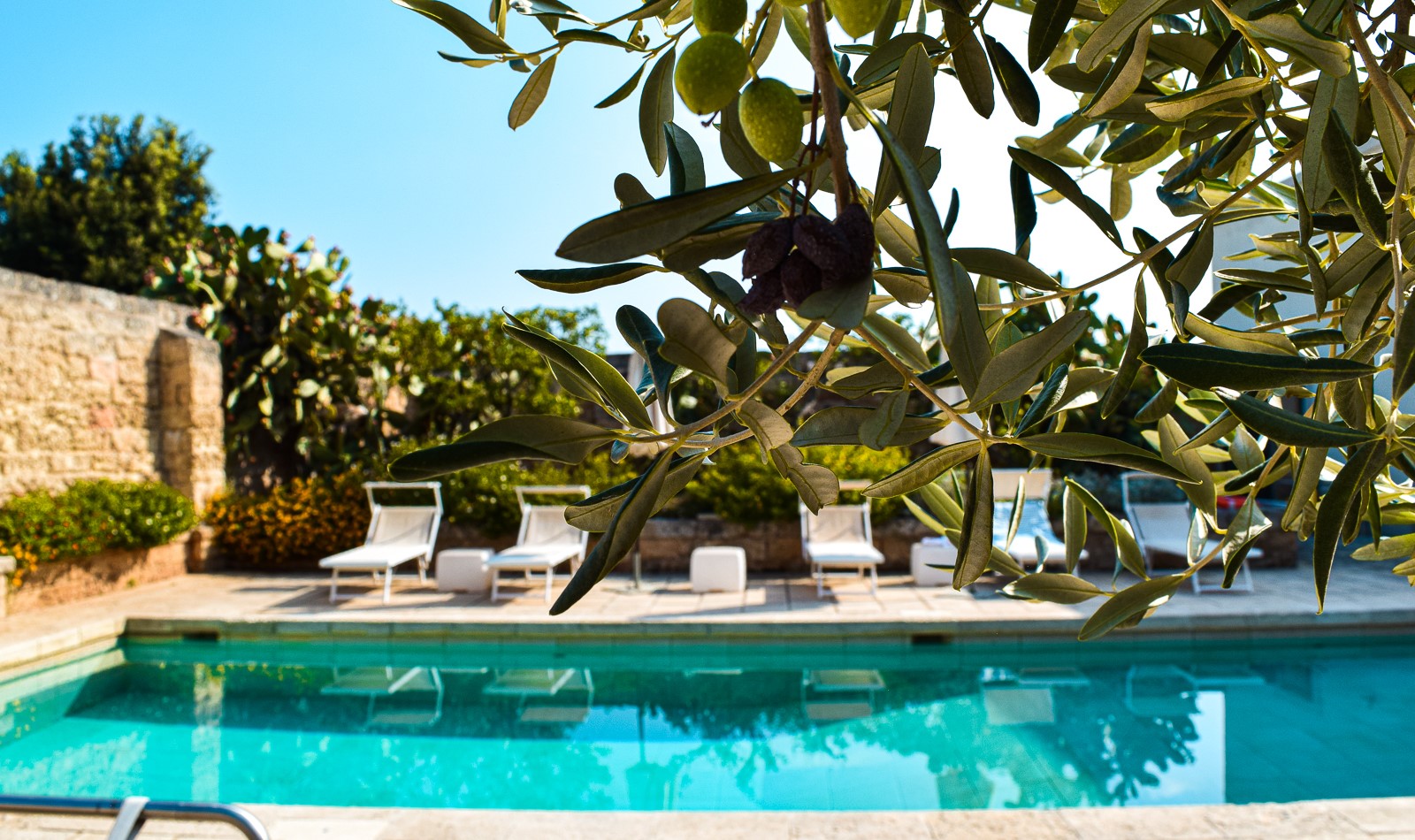
Nardò is perfectly centralized in the middle of Puglia. It’s a little over an hour away from the trulli Valle D’Itria region up north, an hour from the Southern most point of Puglia, and 20 minutes away from Lecce. Let’s not forget to mention that it’s also a 10 minute drive to the seaside town of Gallipoli and the iconic Porto Selvaggio Natural Park and you can get to over a dozen beaches in just under a 20 minute drive. It truly is the best, most centralized location if you’re looking to stay in one place for your entire Puglia itinerary. And what better place to stay in Nardò then in a locally restored Masseria, or farm stay, called Masseria Bernardini.
When choosing where to stay in Salento, there’s no shortage of Masserie. In order for a property to stand out from the rest, it has to offer something truly special. You’ll find that ‘special something’ at Art Resort Masseria Bernardini in Nardò, Salento, a luxury art resort that opened in 2005. The concept is decidedly unique to Salento: its an art-immersive resort that features works from established artists and emerging talent from the Cartiere Vannucci collection. And while the art collection curated by architect Francesco Stasi is no doubt impressive, there’s so much more that makes the property unique to Salento.
Read my full article on Staying at Art Resort Masseria Bernardini in Nardò >>
Dinner in Nardò at Trattoria San Giuseppe Cenobio
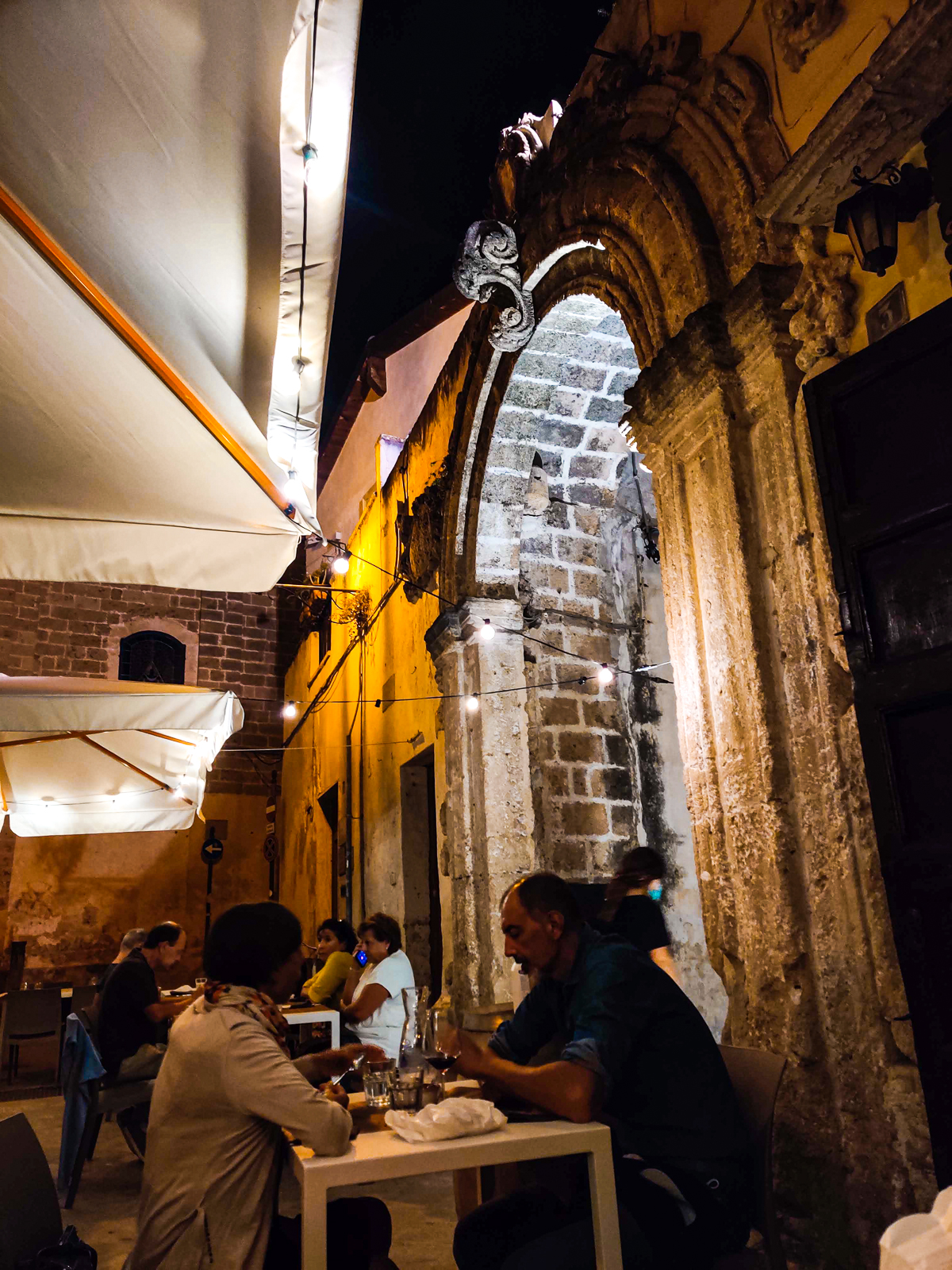
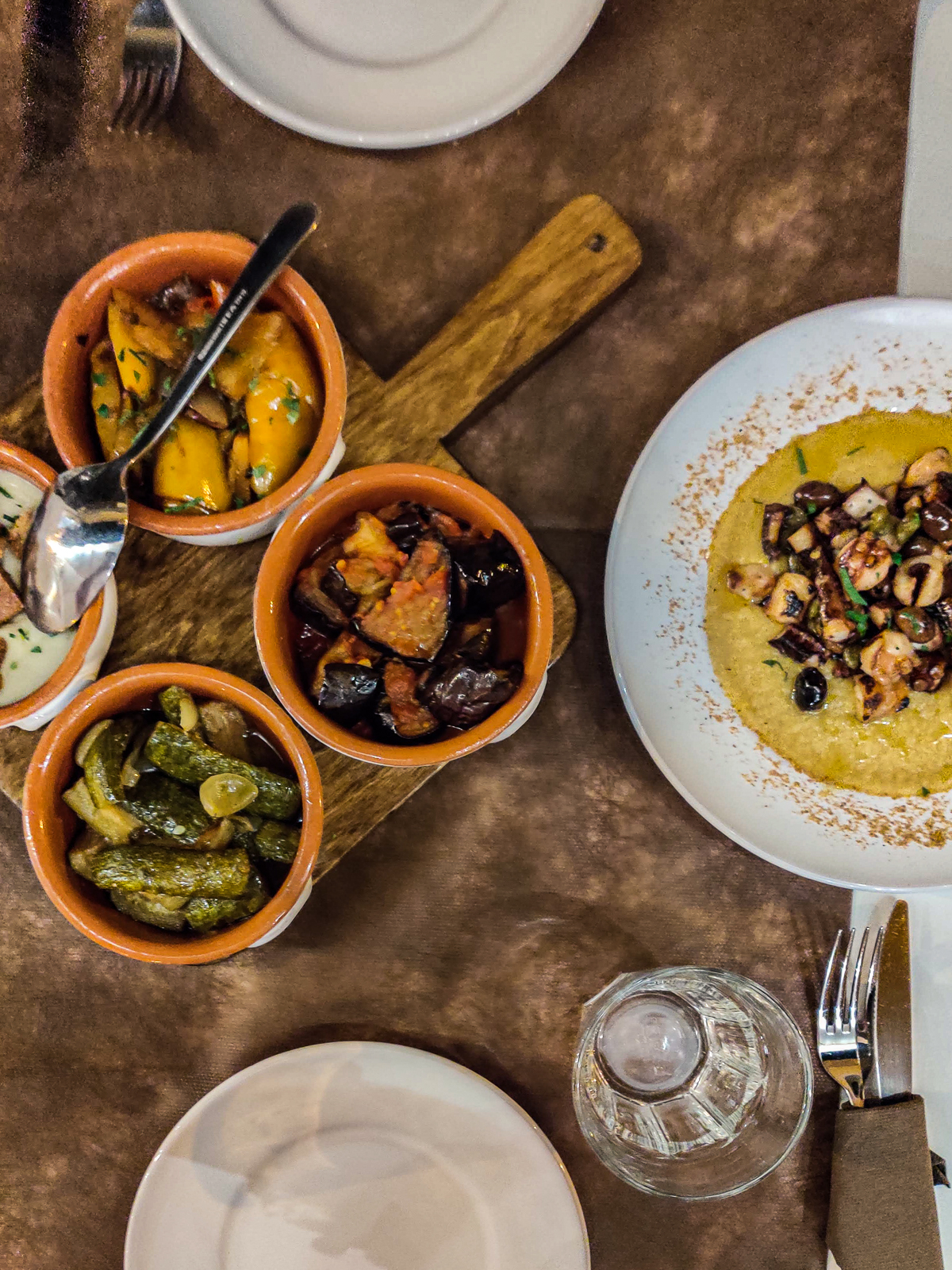
Trattoria San Giuseppe Cenobio is located right off Piazza Antonio Salandra. The quaint location is in what was once considered the Jesuit neighborhood in the 1500s. Stunning architecture, churches, fountains, and arches surround you in this very small square. Any friezes or emblems you see on the outside of the building are originals. Trattoria San Giuseppe Cenobio offers classical Italian fare made the old fashion way and with some of the most earthy ingredients in the area. Our first night in Nardò, my mother and I ordered the seasonal vegetables baked in the wooden oven as an appetizer and a roasted octopus on a cream of chickpeas from Nardò as our main. We licked the plates clean.
Day 3: Nardò & Gallipoli
Morning: Chill at Masseria Bernardini
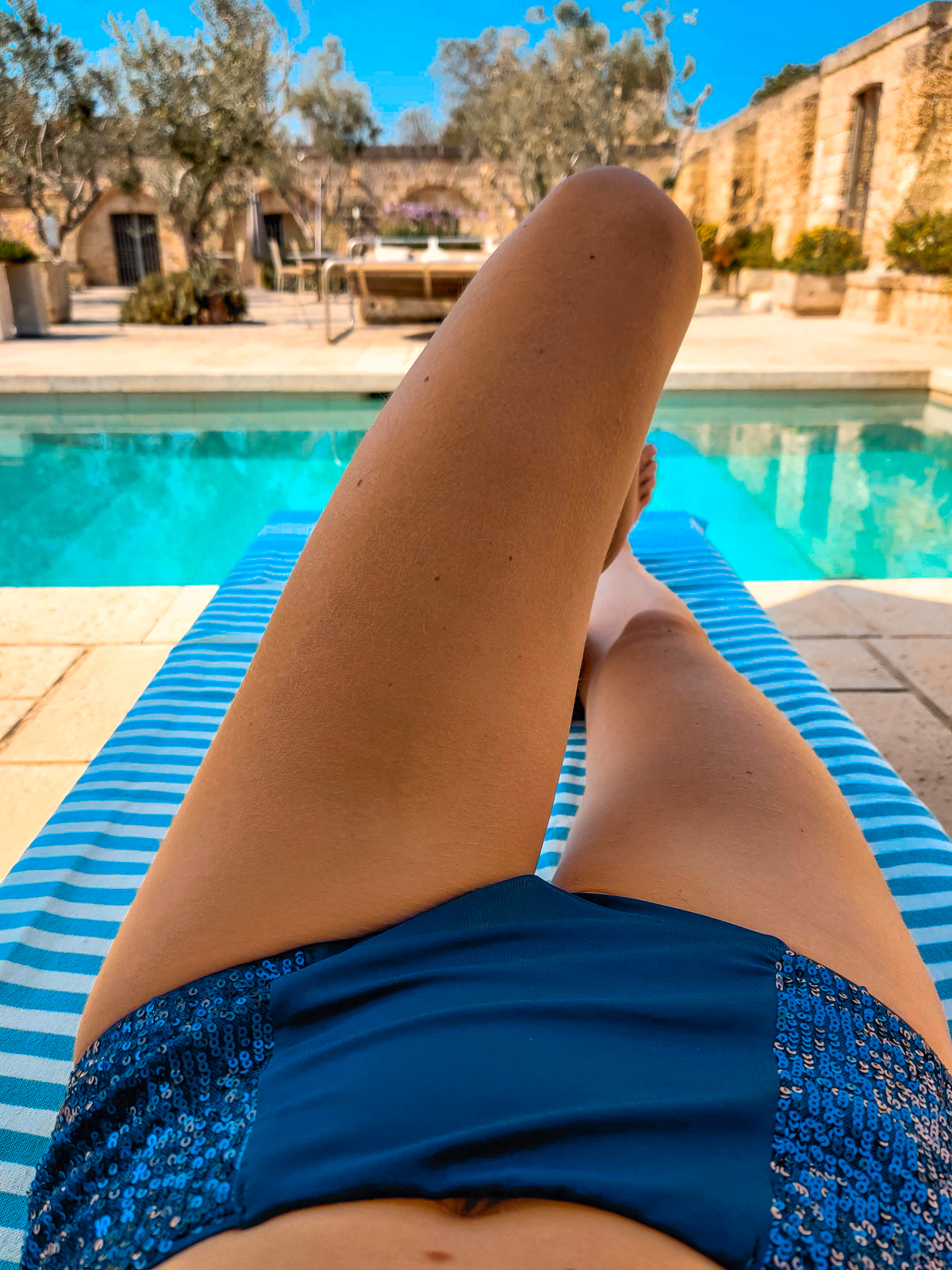
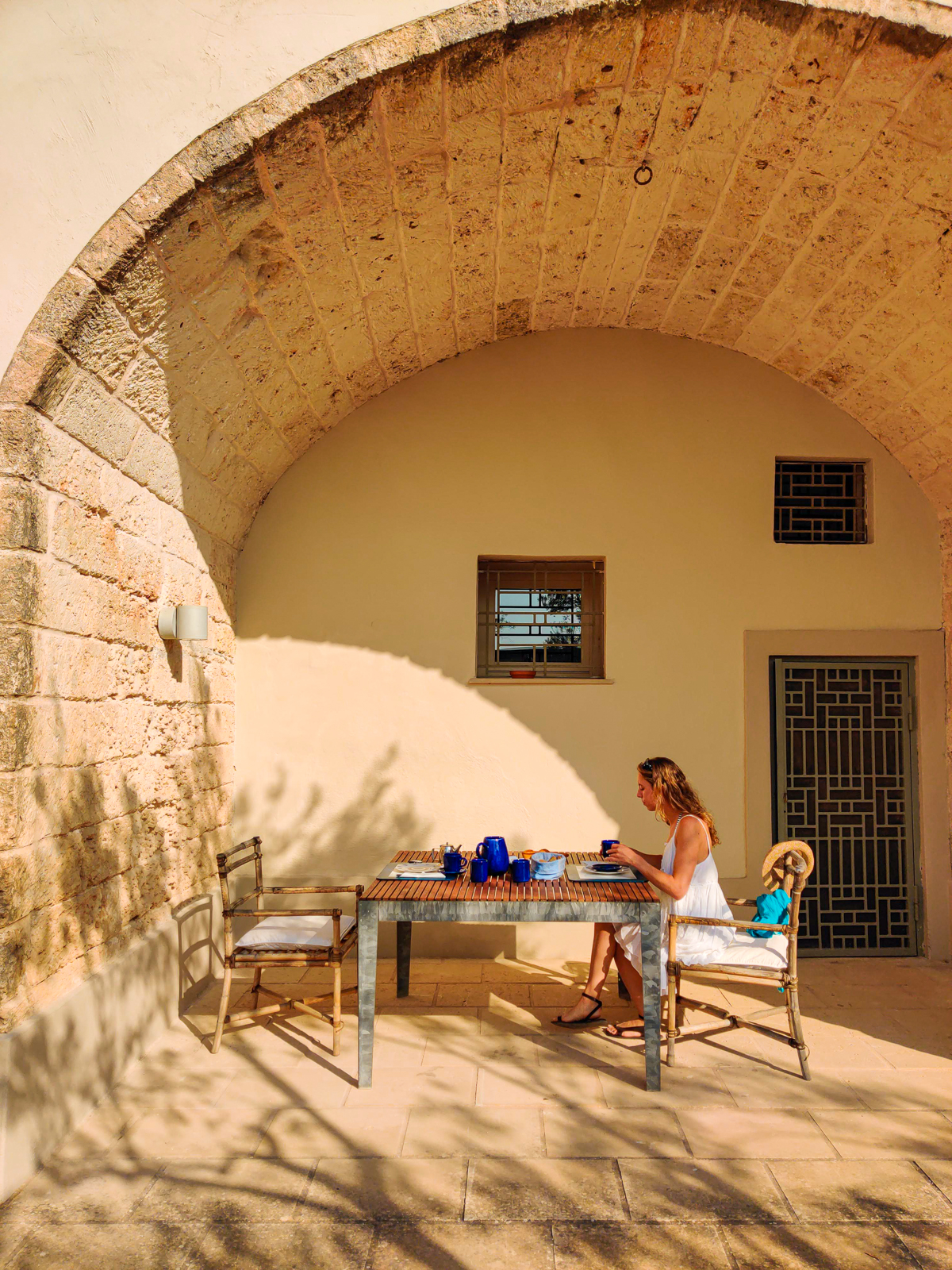
We spent the morning chilling by the pool at Masseria Bernardini. Of the many things to do in the Salento region, the number one must-do thing on any Puglia itinerary is to relax. Take it easy, kick your feet back, sleep in, don’t rush to your next location, beach or activity and just soak in the silence of the countryside and listen to the Salento breeze. Something that’s hard for me to do, but easy for me to partake in at Masseria Bernardini.
Early Afternoon: Gallipoli
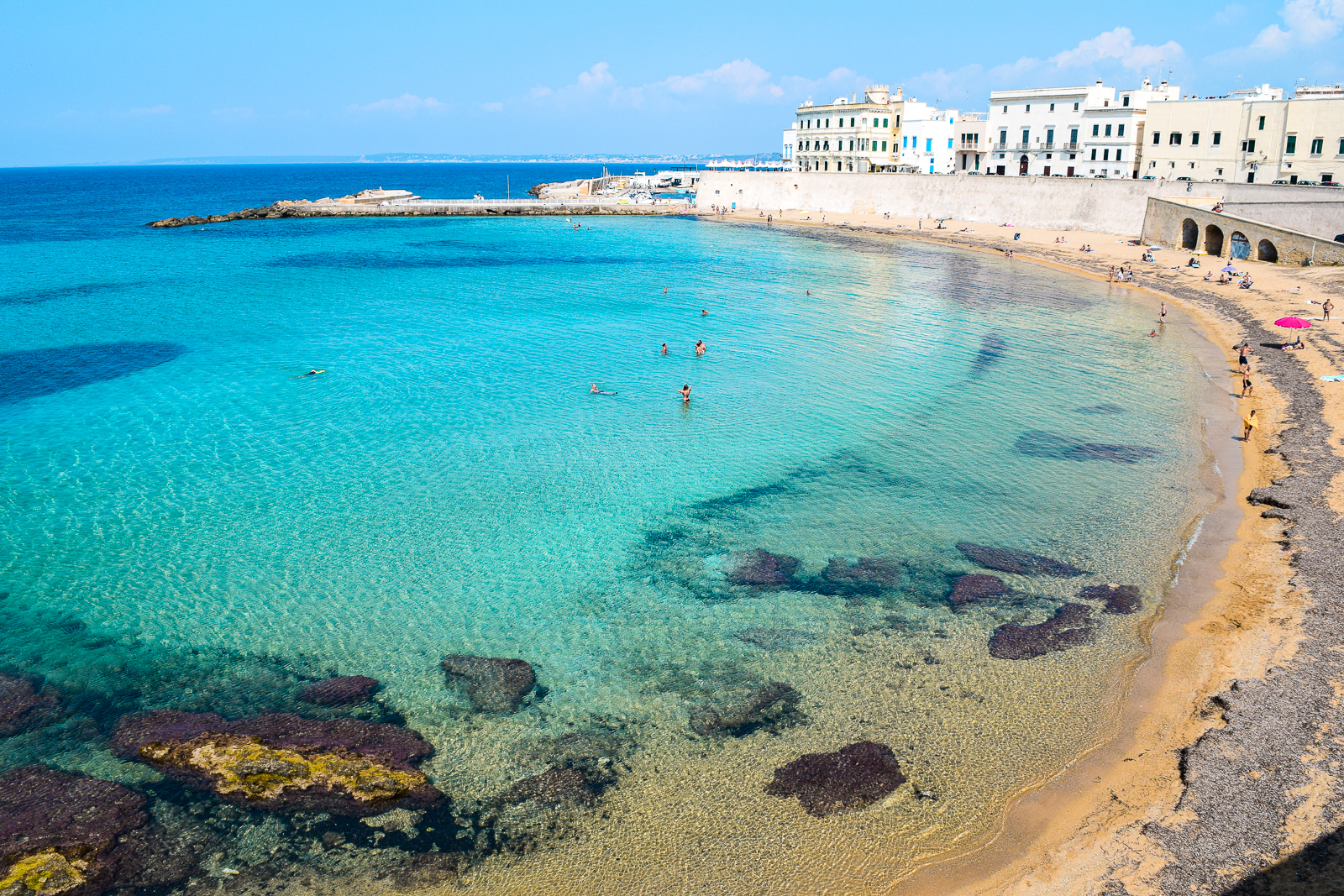
After a morning spent lazily napping, reading, and lounging by the cold, glistening pool at Masseria Bernardini, my mother and I decided to head out and explore one of the many nearby towns in Salento. We decided to spend the day in Gallipoli, Apulia, exploring the streets and grabbing lunch before heading to nearby beaches. As we neared the historic city center of Gallipoli, I noticed that the old 14th century defensive walls that still surround it could hardly contain the island’s marine-like vibrancy. The energy of the fishermen village spilled over the walls, into the Ionian Sea, into the fishermen boats, and across the sea to the mainland. I could feel a warm Salentino welcome overcoming me. We spent the afternoon shopping at Antica Sartoria and for local sea sponges, wandering the streets, visiting Piazza Duomo and the Basilica, taking a dip in Spiaggia della Purita and eating the local delicacy Frisa and enjoying a Caffe Leccese and Granita at a seaside bar.
Read my full article on A Day in Gallipoli, Puglia: Things to Do, Eat and Shop >>
Optional Afternoon: Specchia & Punta Marina Serra
If you still have enough energy and time and want to visit another nearby town, I recommend you visit Specchia and Punta Marina Serra. Specchia is considered one of I Borghi Più Belli d’Italia in 2013. Located 35 minutes from Gallipoli, it is another important village with great Greek influence. When there see Piazza del Popopolone and Palazzo Risolo before buying a pasticiotto from Mille Voglie bakery, who has won awards for making the best pannetone in Italy! Before turning around, make your way to Punta Marina Serra for a quick dip on the Adriatic Sea. You won’t regret stopping by this natural pool.
Dinner in Nardò at Trattoria San Giuseppe Cenobio (Yes…Again!)
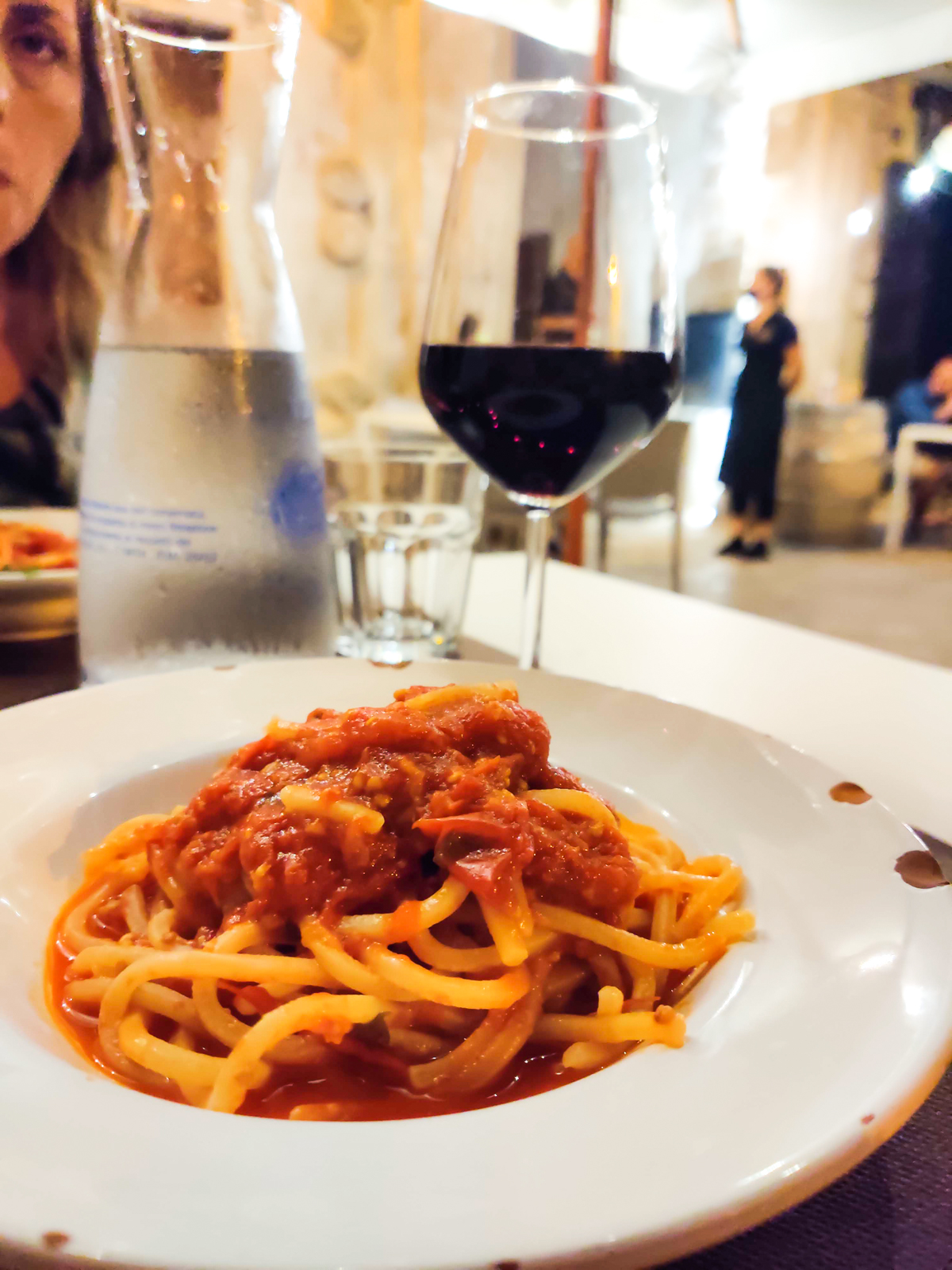
Yes, we went to Trattoria San Giuseppe Cenobio not once, but twice…it was that good. The second night we ordered a plate of pasta with ricotta and tomato sauce. All the meals are natural, made in house, and cooked, if possible, in the wooden oven using antique grains. They only use natural, biological, antique grains, wheats, and flour for their pasta crushed in stone.
However, if you’re looking for a change of pace and want to try something different, a couple of other suggestions for where to eat include:
Day 4: Drive the east side of the Salento Coast from Otranto to Lecce
Optional Morning: Baia di Porto Miggiano & Santa Cesarea Terme
Today, you’ll be driving across Puglia to the east coast of Salento facing the Adriatic Sea. If you get up early enough and are in the mood for some spa treatments, I recommend you drive 45 minutes over to the Santa Cesarea Terme area. Stop by Baia di Porto Miggiano first though for a quick dip in a beautiful hidden beach cove only accessible via stone steps. The best way to avoid the beach crowds is to get there early! After an early morning hour sun bathing, the morning crowds will start trickling in. This is a good time to head out and 3 minutes north towards Santa Cesarea Terme, a place commonly on Italians Puglia itinerary, but not foreigners (only those who are “in the know”).
Santa Cesarea Terme is known for its stunning villas and palazzos that dot the coastlines, but most importantly for its natural healing sulfur hot springs that come straight from the Adriatic Sea. There are 4 different thermal baths that date back to being used in the 2nd century BC by the Greeks: Sulfurea, Gattulla, Fetida and Solfatara. These thermal baths are rich in sulphur, iodine and sodium chloride. Italians all over come to use these thermal baths to heal arthritis, rheumatism, respiratory disorders, dermatological problems, stress and more. They are, of course, also a lot of beauty treatments consisting of hot mud and mineral treatments. The baths are open from May – November.
In the center of town you’ll find a cliffside swimming area called Bagno Marino Archi with a staircase that leads directly into the sea. It’s usually packed in the summer, so I’d advise against it. But if it’s low season and your in the mood to chill, this is the spot to be. If you’re looking for a very cool pool to swim in, visit the Circolo Nautico F Frisullo. Circolo is our version of a community center. The pool is directly on the sea and reminds me of the stunning pool located in Sydney.
Morning: Cave di Bauxite
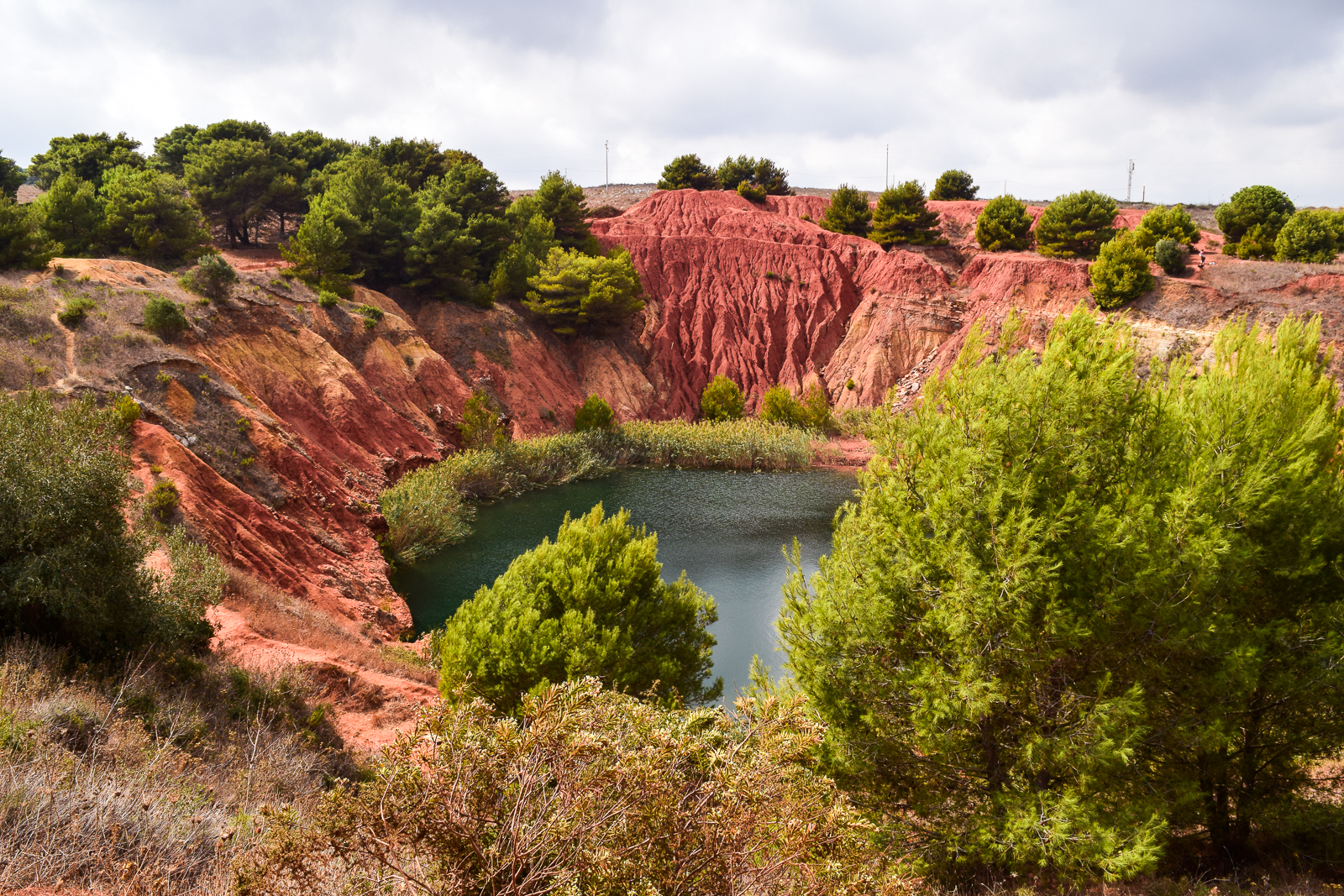
The half mile walk to these fiery red rocks contrasted next to an emerald green lake surrounded by greenery is worth it. Cava di Bauxite has a sad beginning, but a happy accident turned into a natural wonder near Otranto. It’s an old quarry from the mid-1900s that filled with water from a nearby aquifer creating a lake. The minerals from the quarry is what gives the rocks it’s fiery red, orange, and peach color, but it’s also what makes the water in the small lake such a stunning and contrasting emerald green color.
Read my full article on Cava di Bauxite>>
Early Afternoon: Otranto
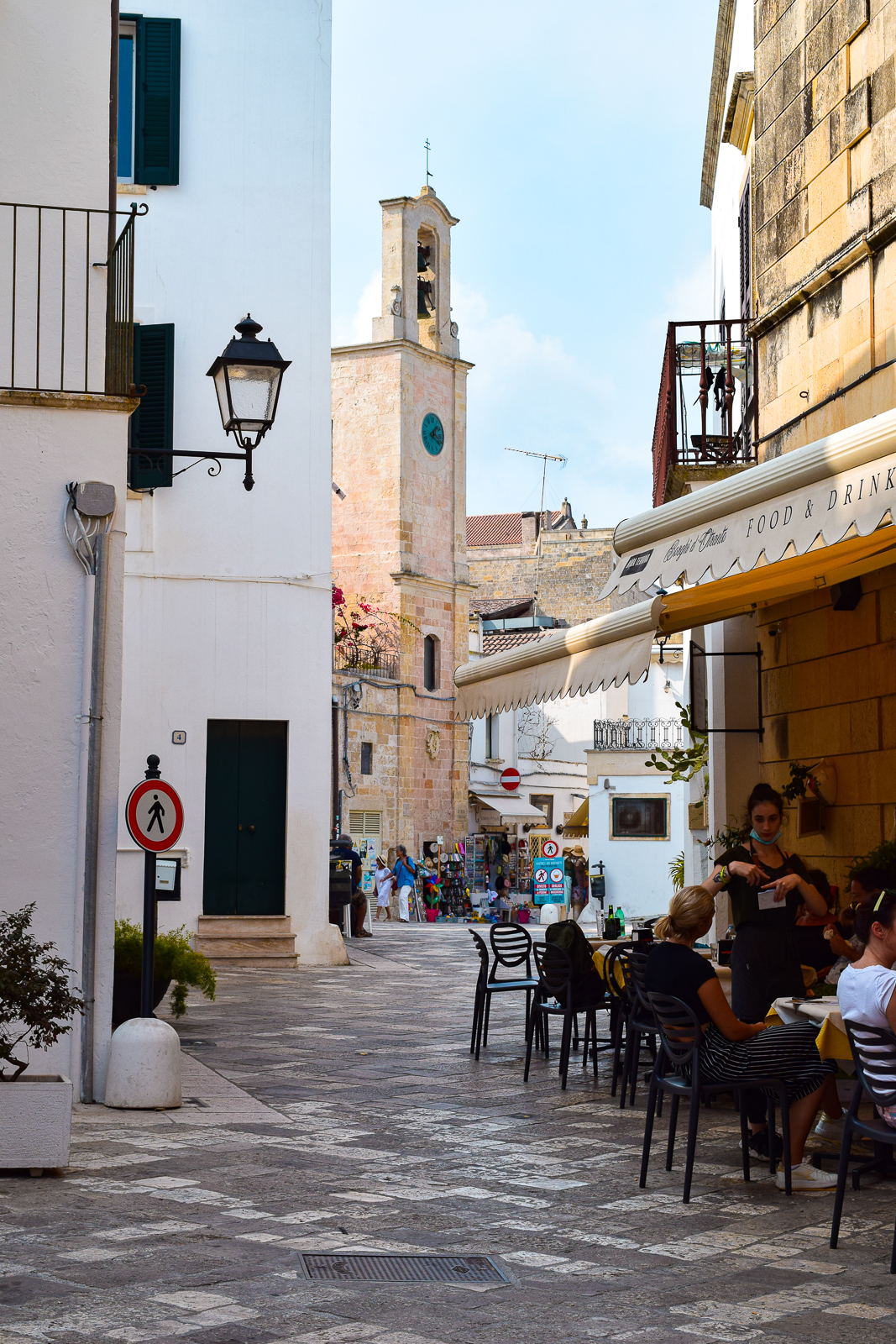
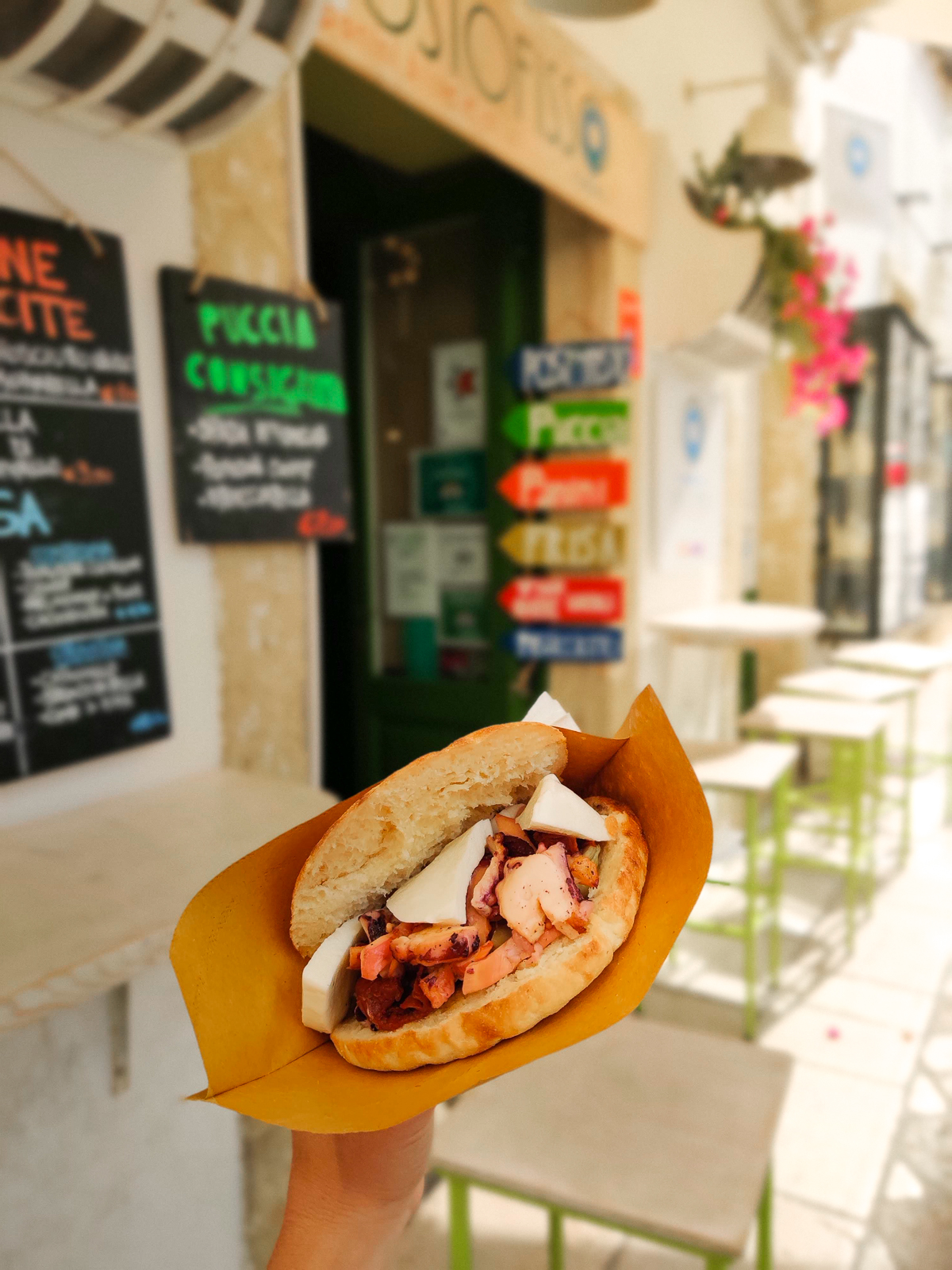
Otranto is a maze of white washed narrow streets and alleys. My mother and I stopped here for lunch on our drive down the Salento coast. In the summer months, Otranto can feel a little bit like Mykonos. Packed with tourists elbowing their way through the narrow streets in search of artisanal souvenirs in the local shops. Not to miss is the Castello Aragonese. But the true gem of Otranto is the Apulian street food Puccia from Postofisso. Puccia used to be eaten by workers who would go out into the countryside for work. It is a local Salentino bread made in a wood fire oven. Being on the coast, I recommend you order a seaside Puccia with octopus, chicory, dried tomato, and mozzarella. If you’re craving something sweet, get a Otranto specialty called Spumone. This delicacy combines ice cream with a sponge cake and liqueur to create the ultimate cool (literally and physically) dessert. You can only find it at Martinucci Caffetterie.
Read my full article on Drive the Salento Coast: Where to Stop from Otranto to Lecce>>
Afternoon: Baia del Mulino d’Acqua, Torre Sant’Andrea & Grotta della Poesia
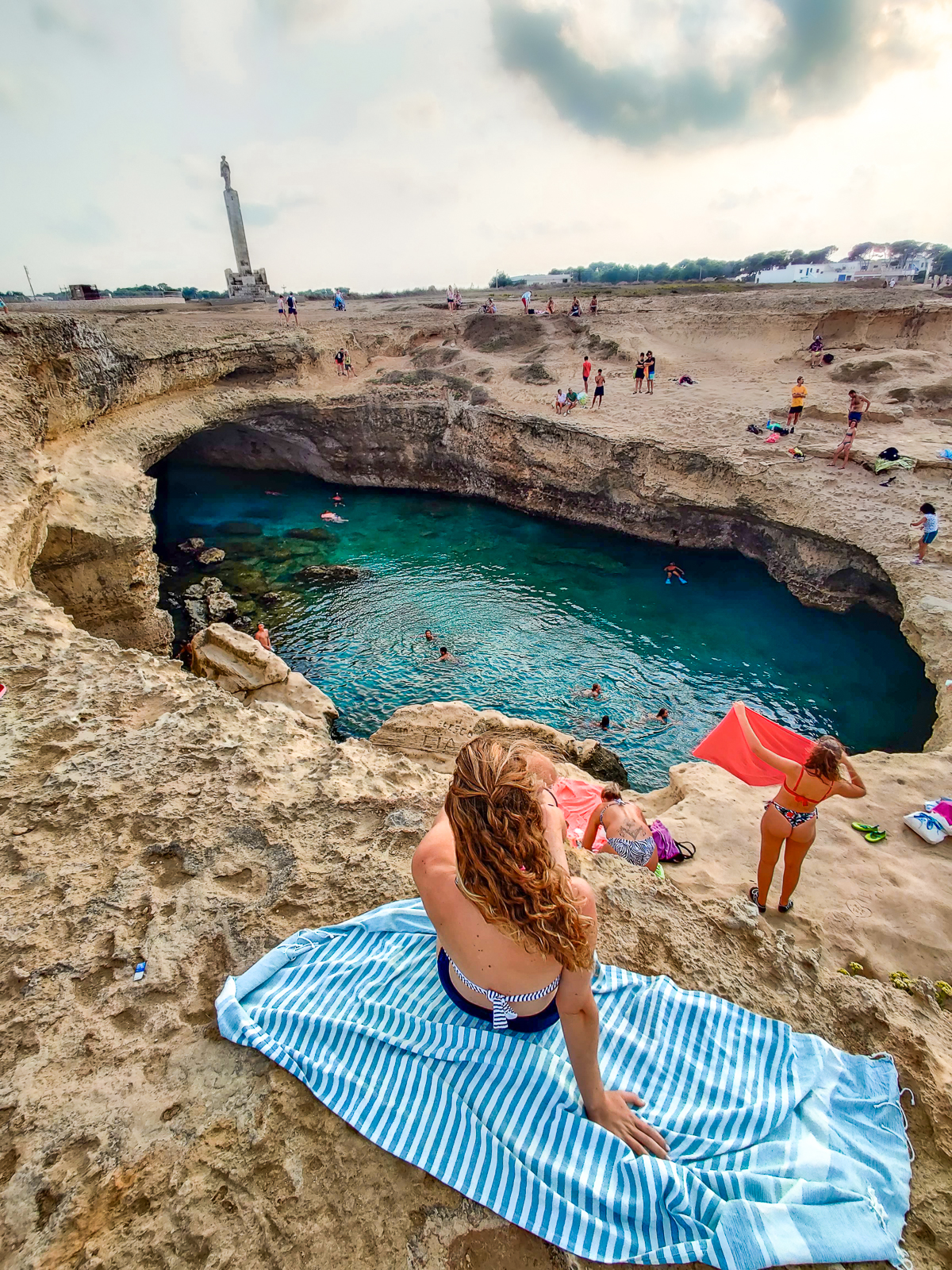
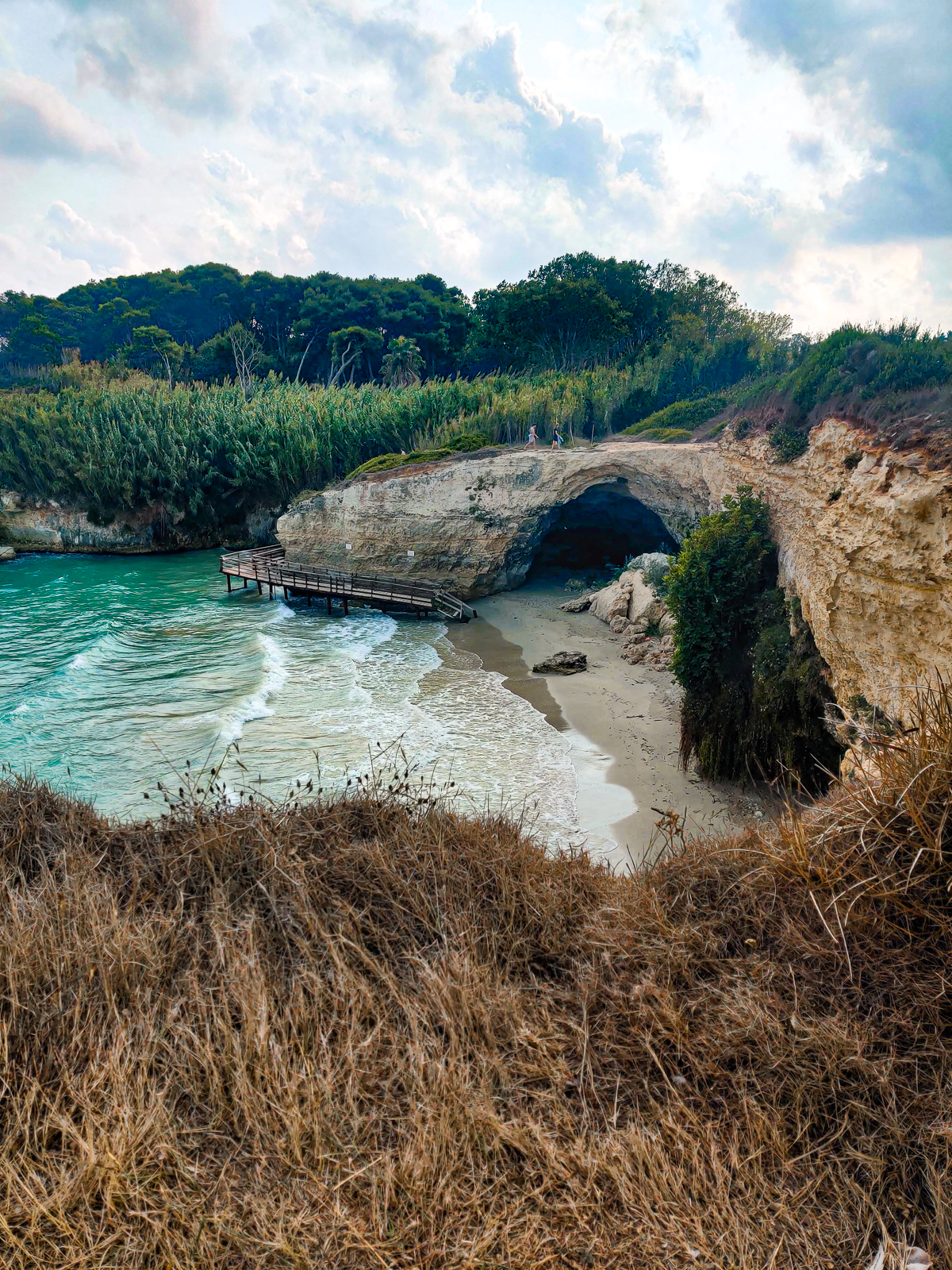
While you drive up the Salento coast towards Lecce, you will stumble upon many seaside attractions. Pick and choose wisely and focus on these renowned stops: Baia del Mulino D’Acqua located near Otranto, Baia dei Turchi, Torre di Sant’Andrea wth its grottos and beaches like Punticeddha, Magar, Mbruficu and Pepe and the famous Grotta della Poesia. My one recommendation would be that some of these lesser known areas like Baia del Mulino D’Acqua and Torre di Sant’Andrea are a bit harder to reach. And I don’t mean physically harder. In Italy, there is this tendency not to label things properly and leave a lot of it up to guessing. So you might think you’ve arrived somewhere and then realize there was more to go. Or you might get to your destination and have no idea how to reach the grotto. Do your research and make sure you know how to get to these places before you get there by reading my full article…
Read my full article on Drive the Salento Coast: Where to Stop from Otranto to Lecce>>
Check-in: Lecce at Patria Palace Hotel
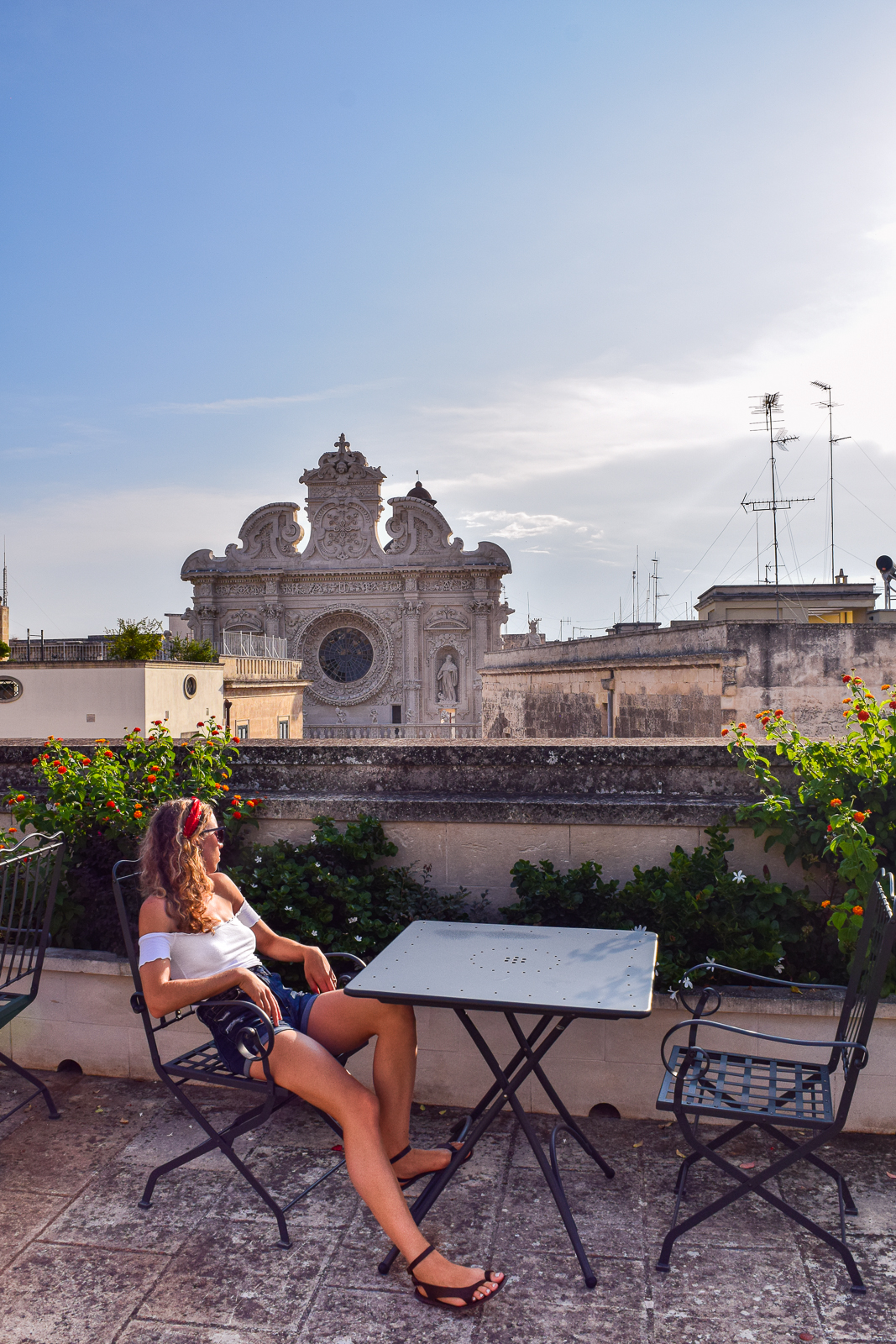
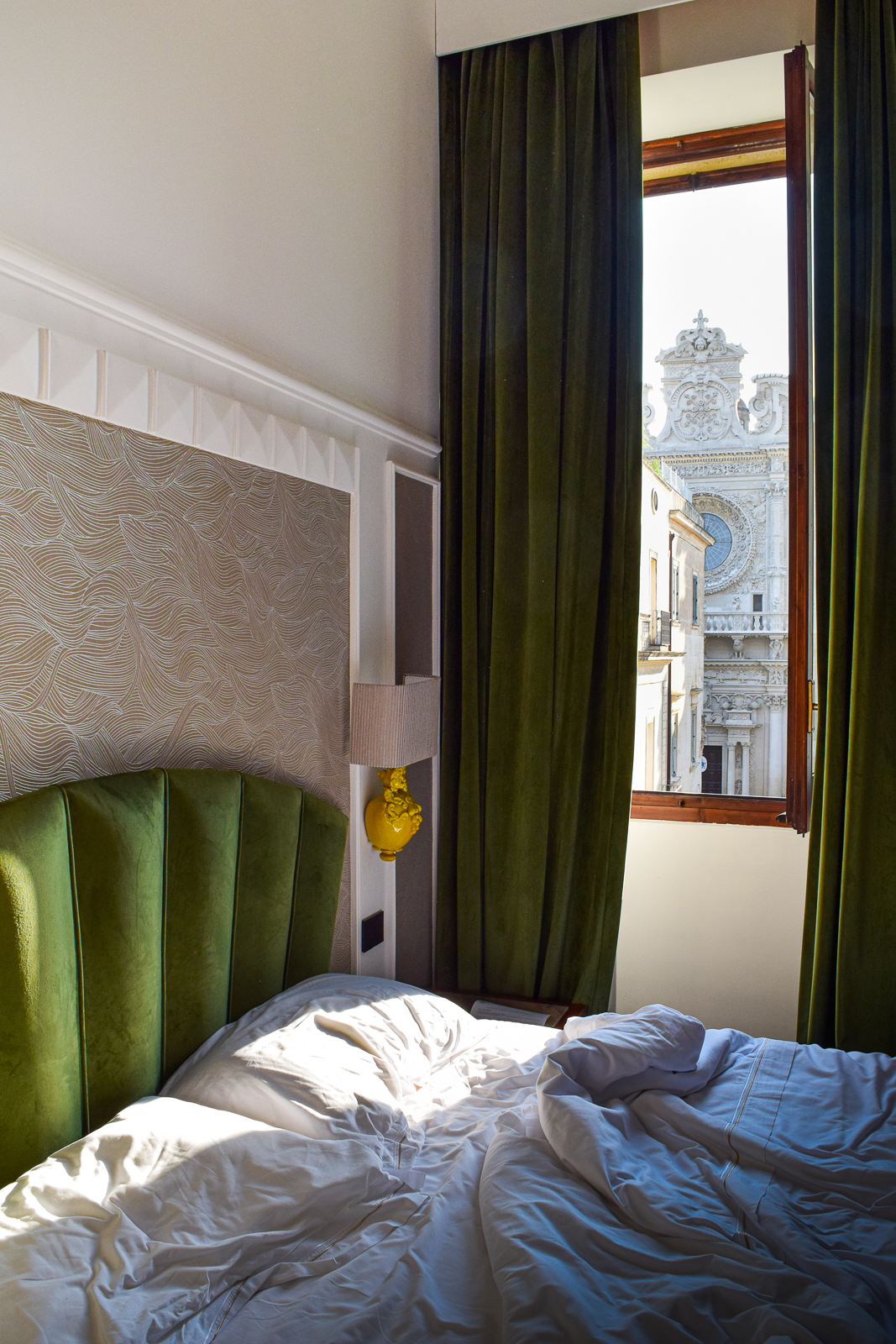
After a day spent driving up the clear Apulian coastline, its time to park your car in Lecce, also known as the Florence of the South. The city is known for its rich art and architecture, but it doesn’t stop at the city, it spills into some of the hotels too like Patria Palace Hotel. One peep into the cozy luxury Lecce hotel Patria Palace–with its flowered patio, elegant dining room, modest yet comfortable bedrooms, picturesque views from bedroom windows of Italian palazzos backed by the towering Basilica of Santa Croce, expansive rooftop terrace overlooking a breath-taking panorama of baroque architecture, churches, palaces, and more–one dazzled peep, and your stereotypical idea of coastal Puglia fades away. It’s these #PatriaMoments that will stay with you long after you leave Lecce.
Read my full article on Patria Palace Hotel: Luxury Stay in Lecce, Puglia >>
Day 5: Lecce & Ceglie Messapica
Morning: Explore Lecce
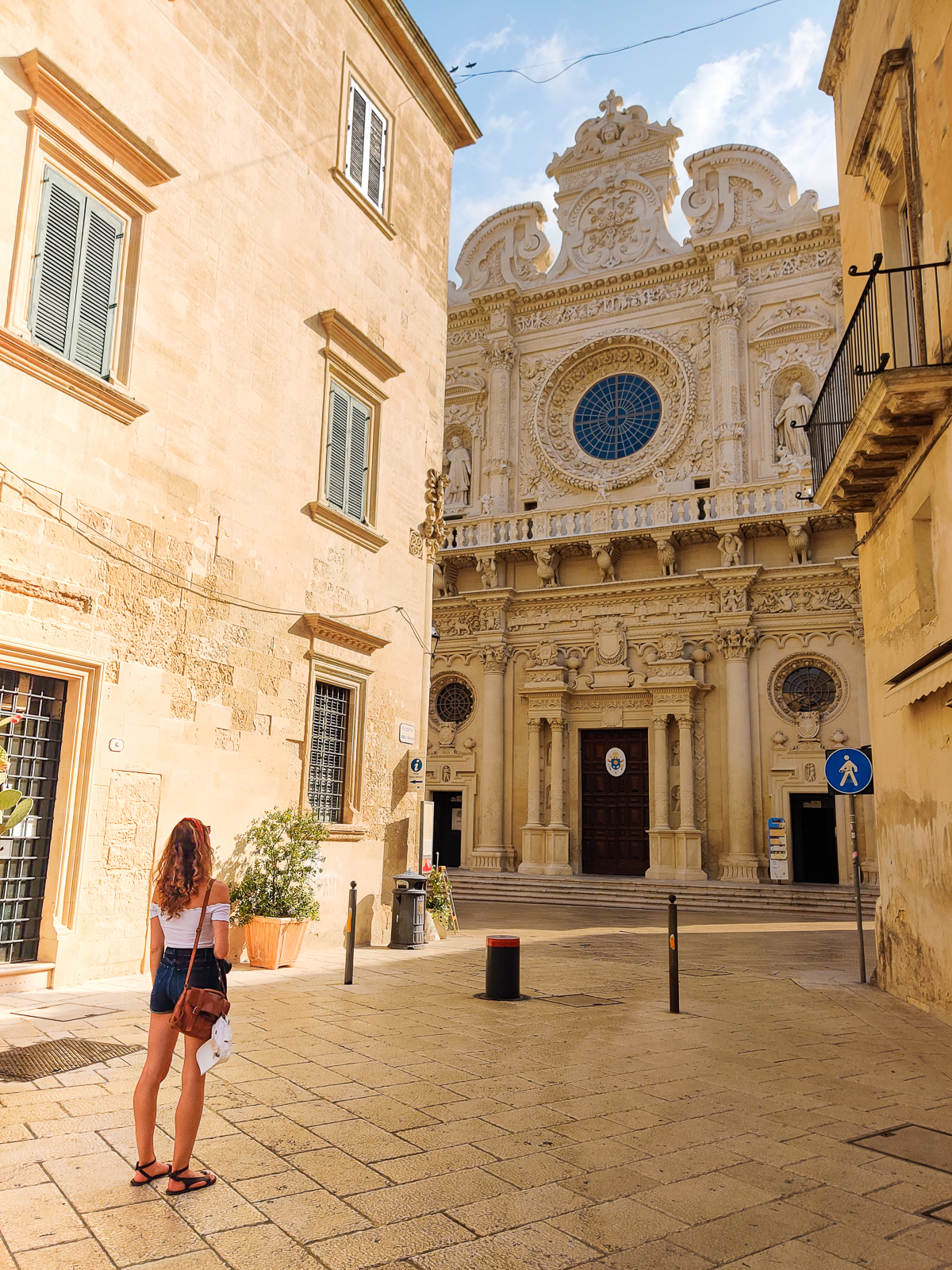
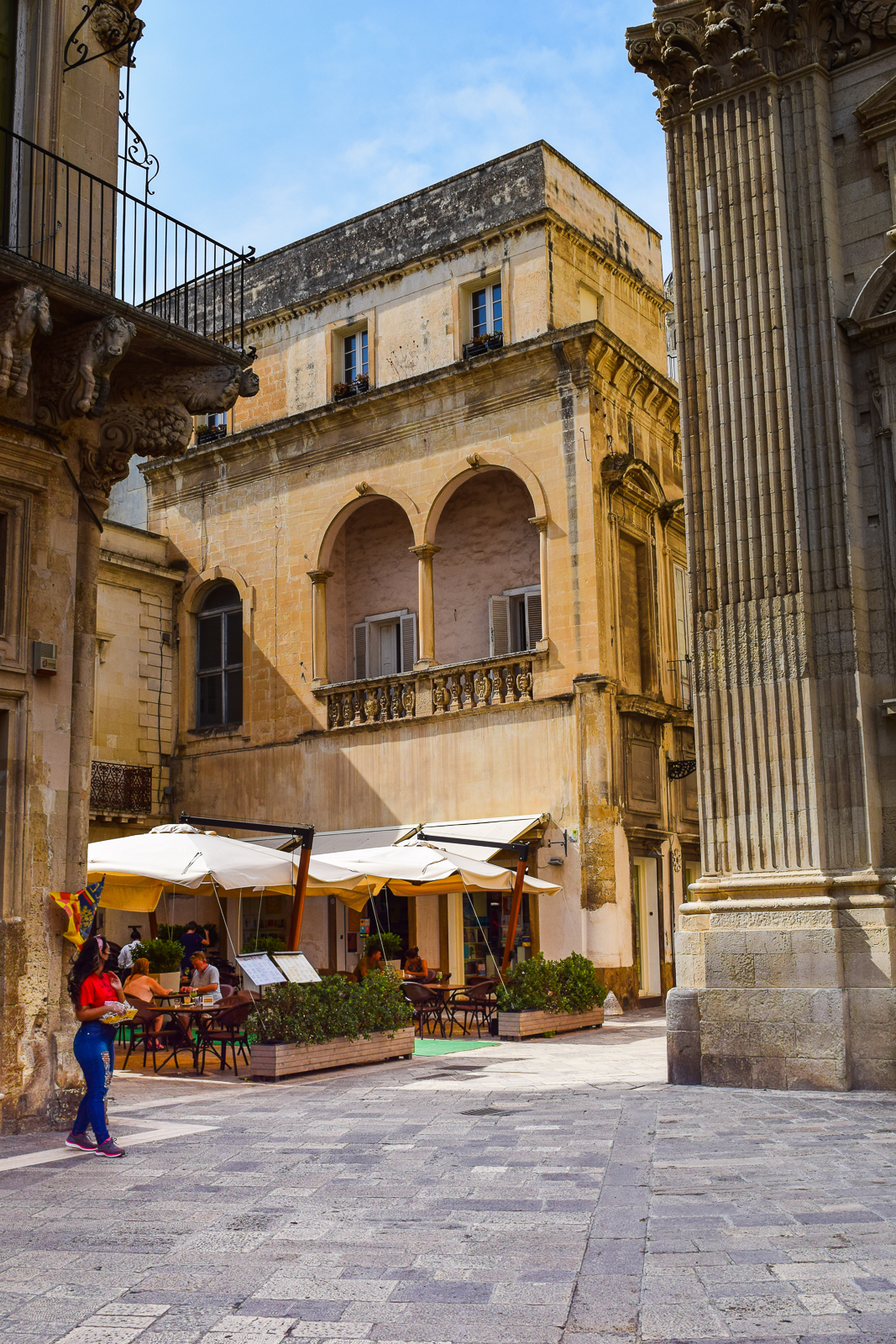
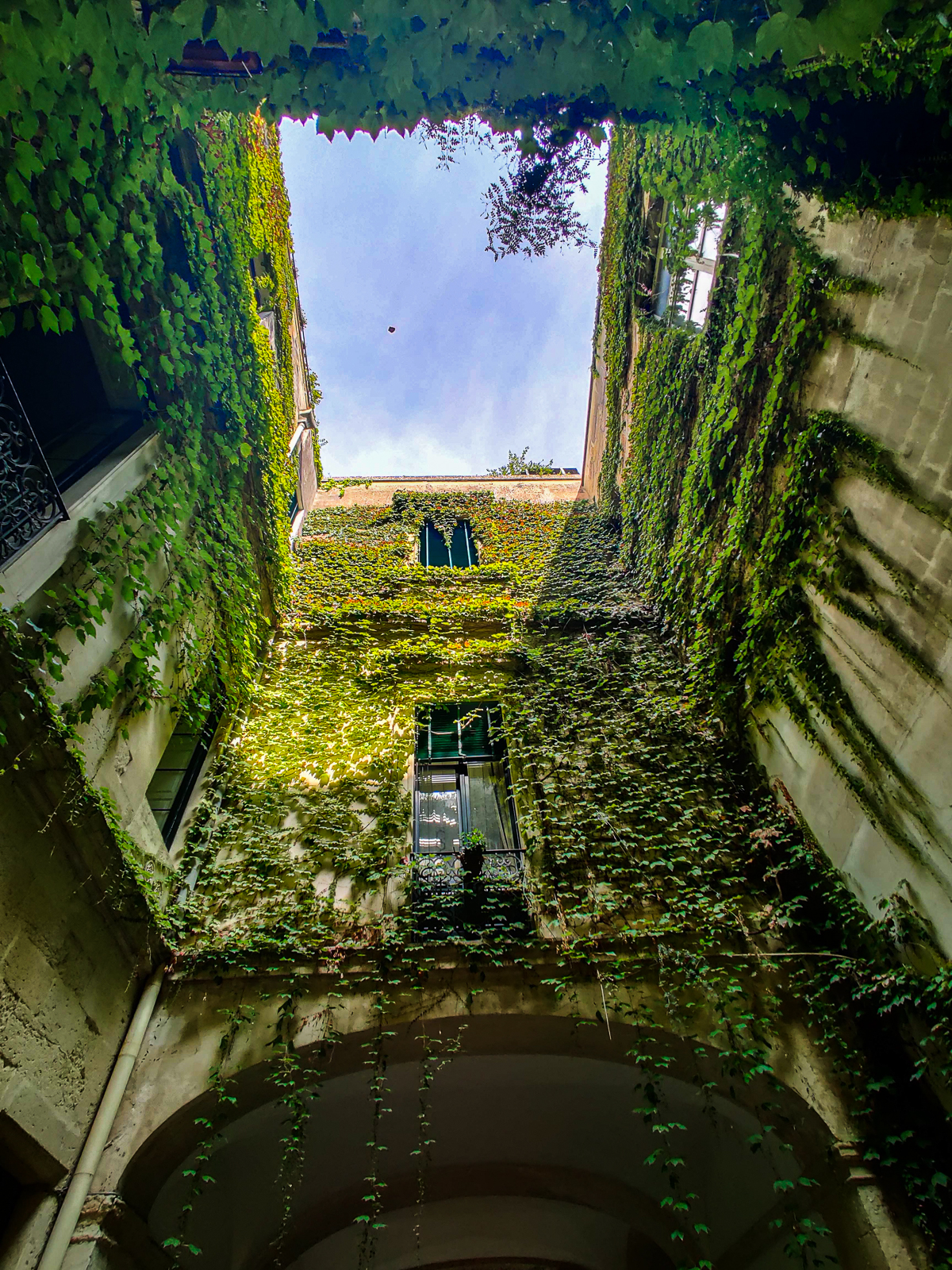
The next morning, it’s time to say ciao to Patria Palace Hotel and spend the AM exploring the city of Lecce. There is the occasional tourist that reminds you that you are in the year 2020. But aside from that, every turn is some old doorway, rich mosaic pulpit, ancient wall, or remnant of Roman architecture to remind you of the glorious past. The heart of Lecce is directly in front of Patria Palace Hotel, the Basilica di Santa Croce. A Basilica so pretty, I could spend a full hour staring at it’s intricate details from my bedroom window and over my breakfast croissants on the terrace. But when you can finally tear yourself away from the Basilica there’s many more wonders to see: Piazza Sant’Oronzo Amphitheatre, Via Vittorio Emanuele II, Via del Teatro Romano and Piazza del Duomo among others.
Read my full article on 7 Thing to Do in Lecce, Italy: A Lesser Known Travel Guide >>
From Lecce you drive an hour north to finally reach the final “area” in your Puglia itinerary, the Valle D’Itria made up of the province of Bari, Brindisi and Taranto.
Early Afternoon: Explore Ceglie Messapica
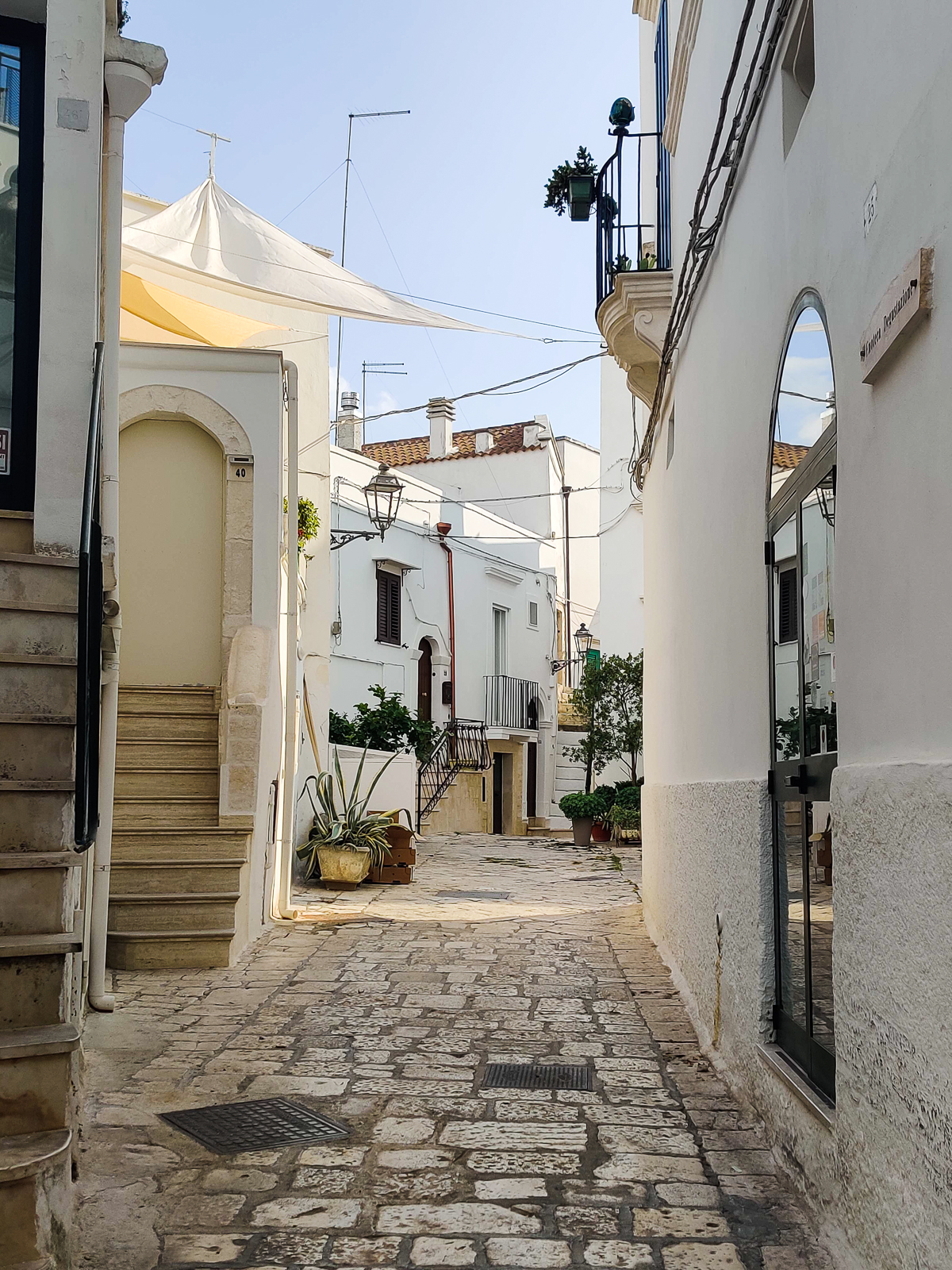
We start off by stopping by the town we will be staying in, Ceglie Messapica. Our check in time was 4PM, so we stopped for a quick post-lunch caffe leccese. Here is a slice of the Itria Valley–without the crowds or tourist that that can plague parts of its neighboring towns. Foodies in the know are descending on this pretty Apulian town. Wander through the maze-like streets, eat a biscotto Cegliese from Forno San Lorenzo and grab a Caffè Leccese in a bar by the piazza before nailing down a place to eat dinner later on at night at one of the many culinary schools or restaurants.
Read my full article on Towns in Puglia: Ceglie Messapica, A Gastronomic Capital >>
Check-in: Ceglie Messapica at Trullo a ll’éra
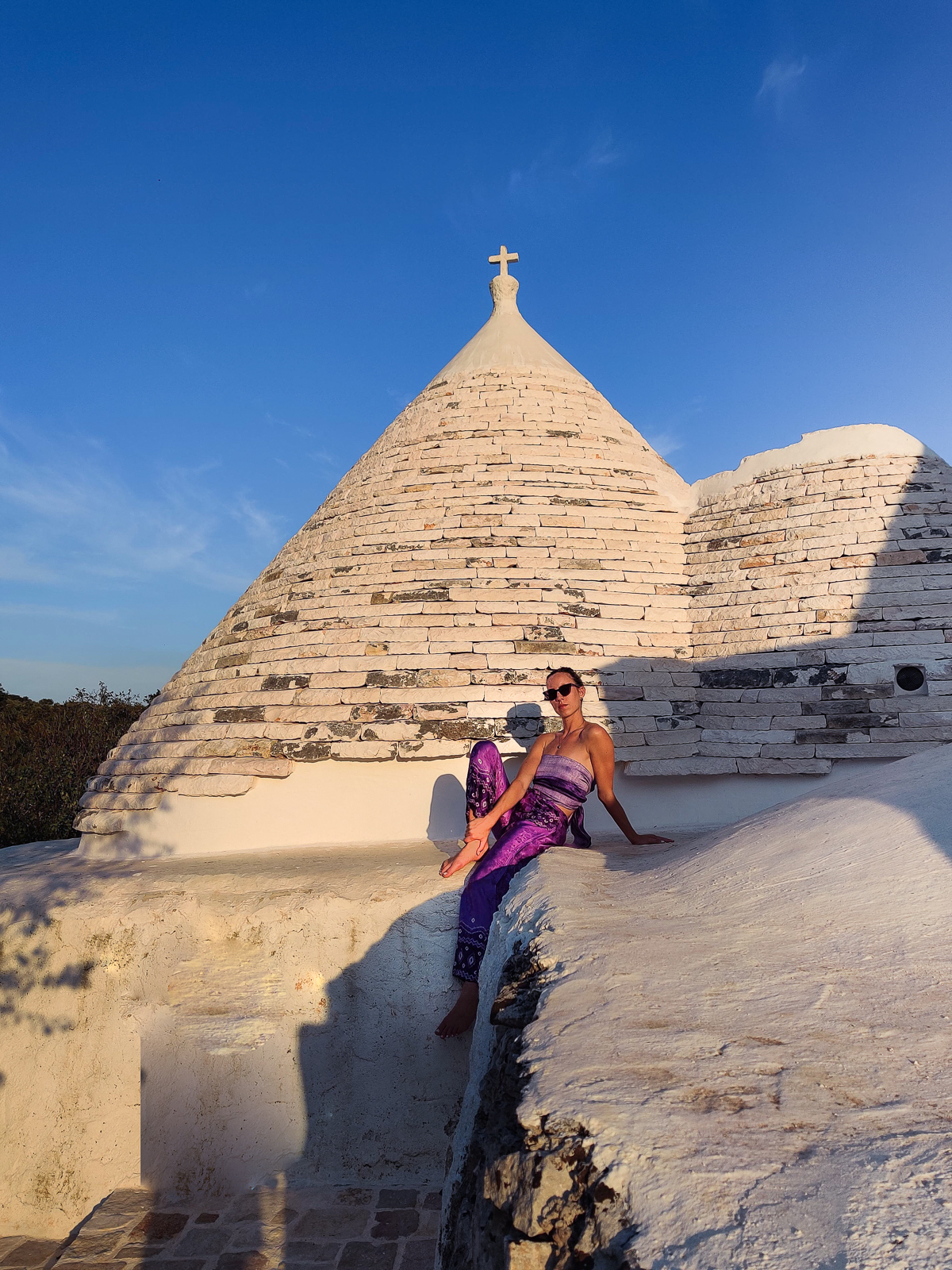
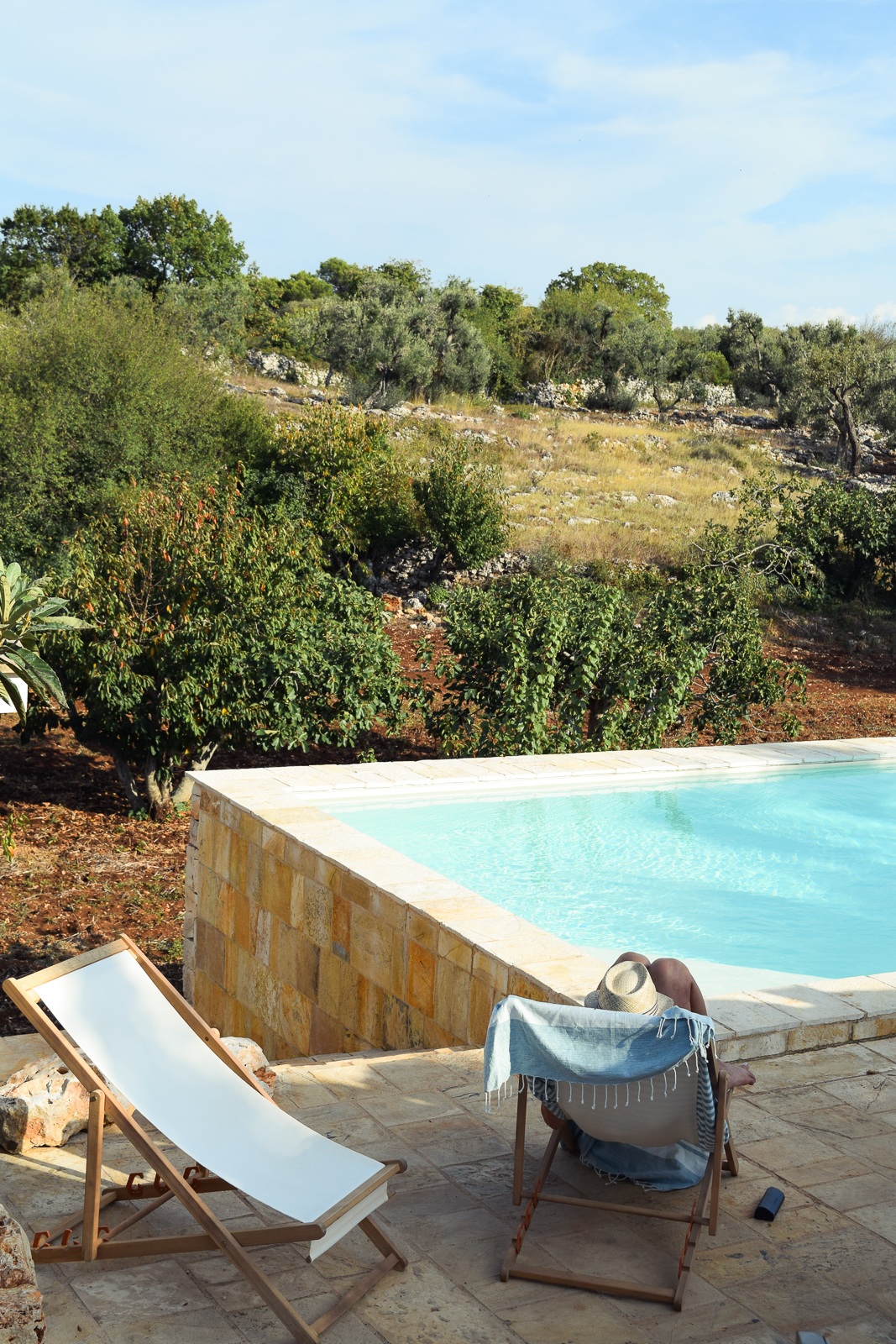
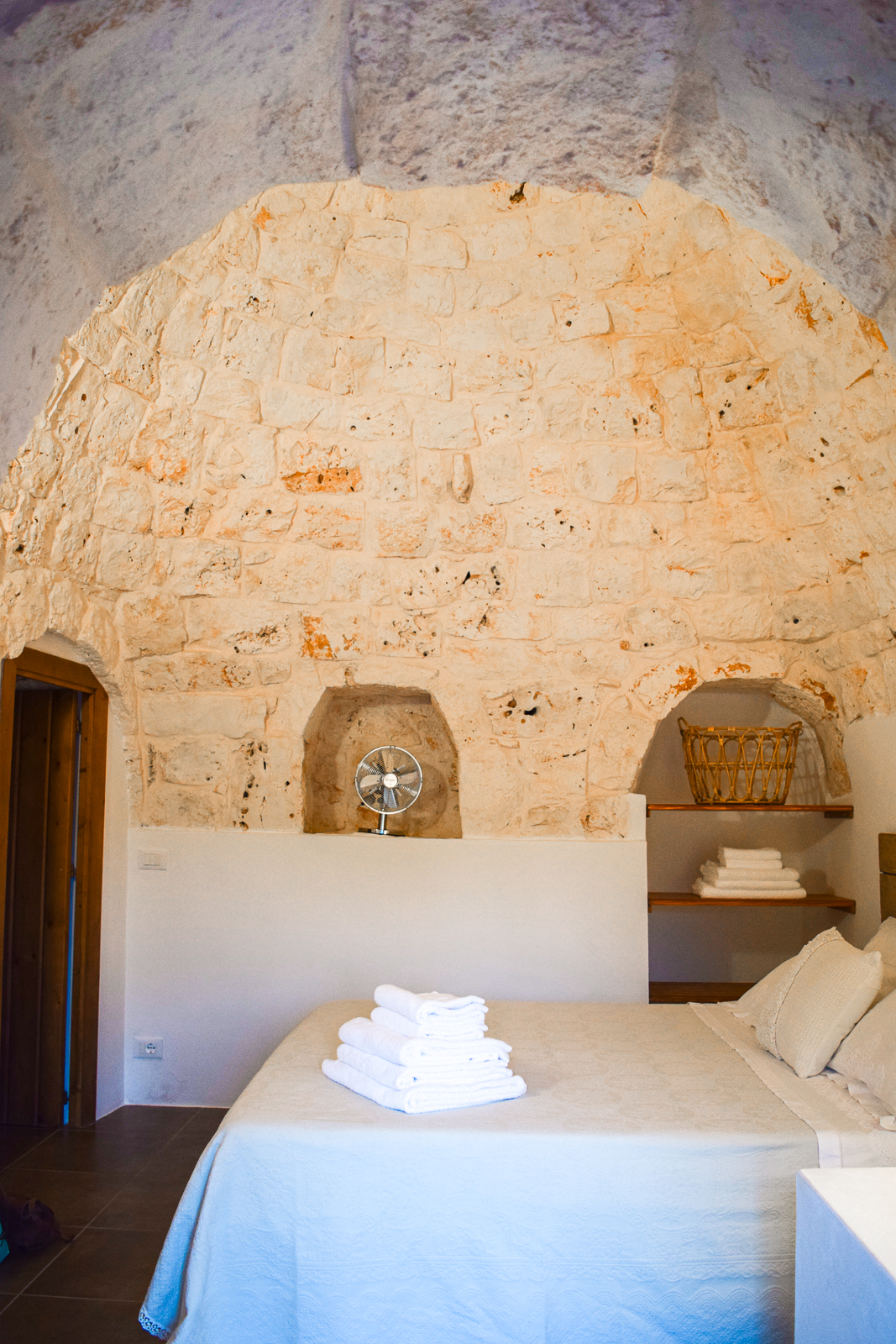
It was hot that day that we went in search of an open bar and ordered a caffè Leccesse. After some pleasant conversation and a refreshing drink, it was time to check in. We drove 10 minutes through the rolling Apulia countryside stretching out on either side of us to our stay in a Trullo in Puglia, Italy. An authentic induction into true Apulian culture in the Itria Valley includes a warm welcome from an entire Southern Italian family, a walk through Apulian fields, exquisite food from local recommended restaurants, and a stay in a Trullo in Puglia, Italy. Once you’ve made it through these indispensable initiation rituals at Trullo a ll’éra, you’ll leave feeling like you’re a part of the Apulian family.
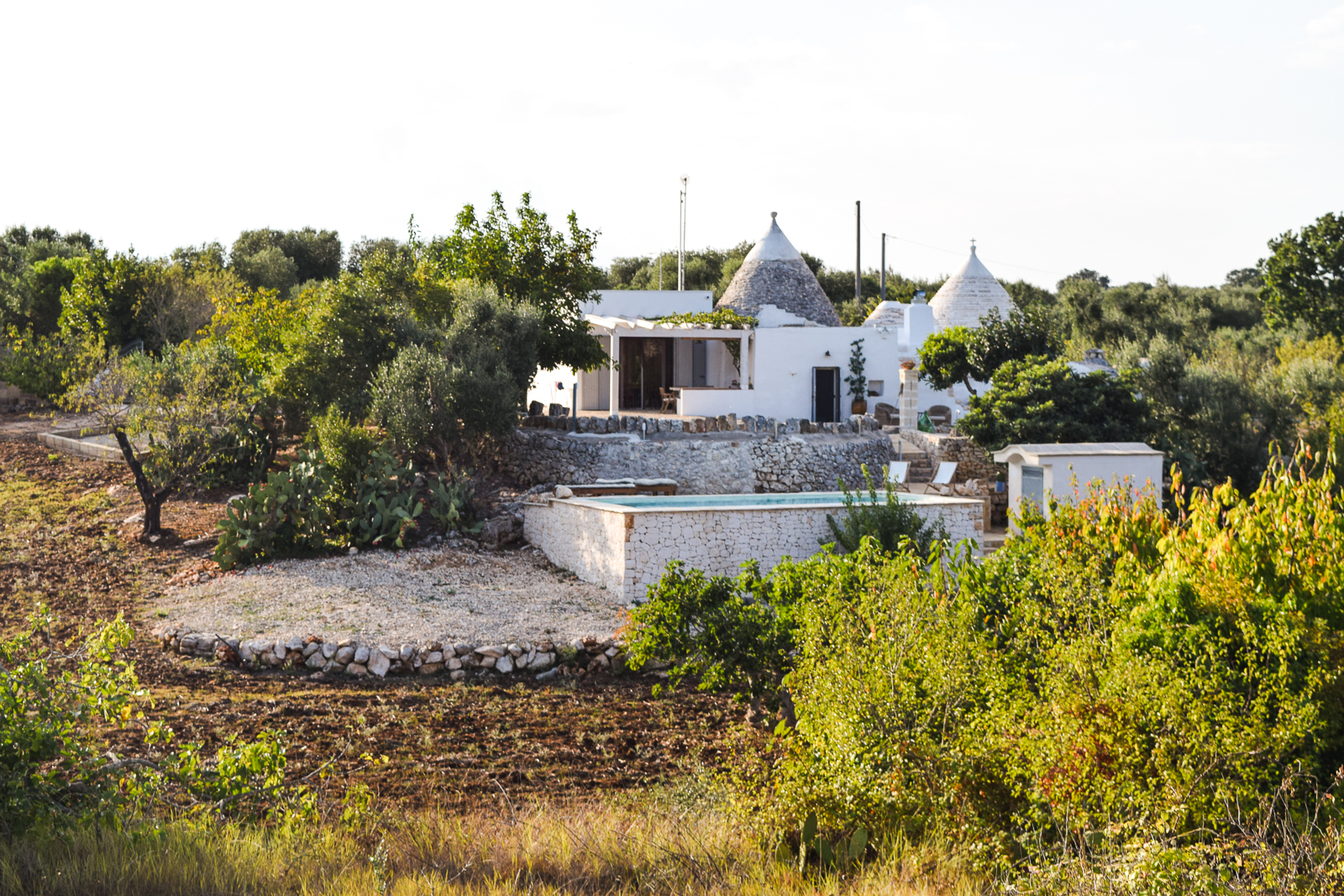
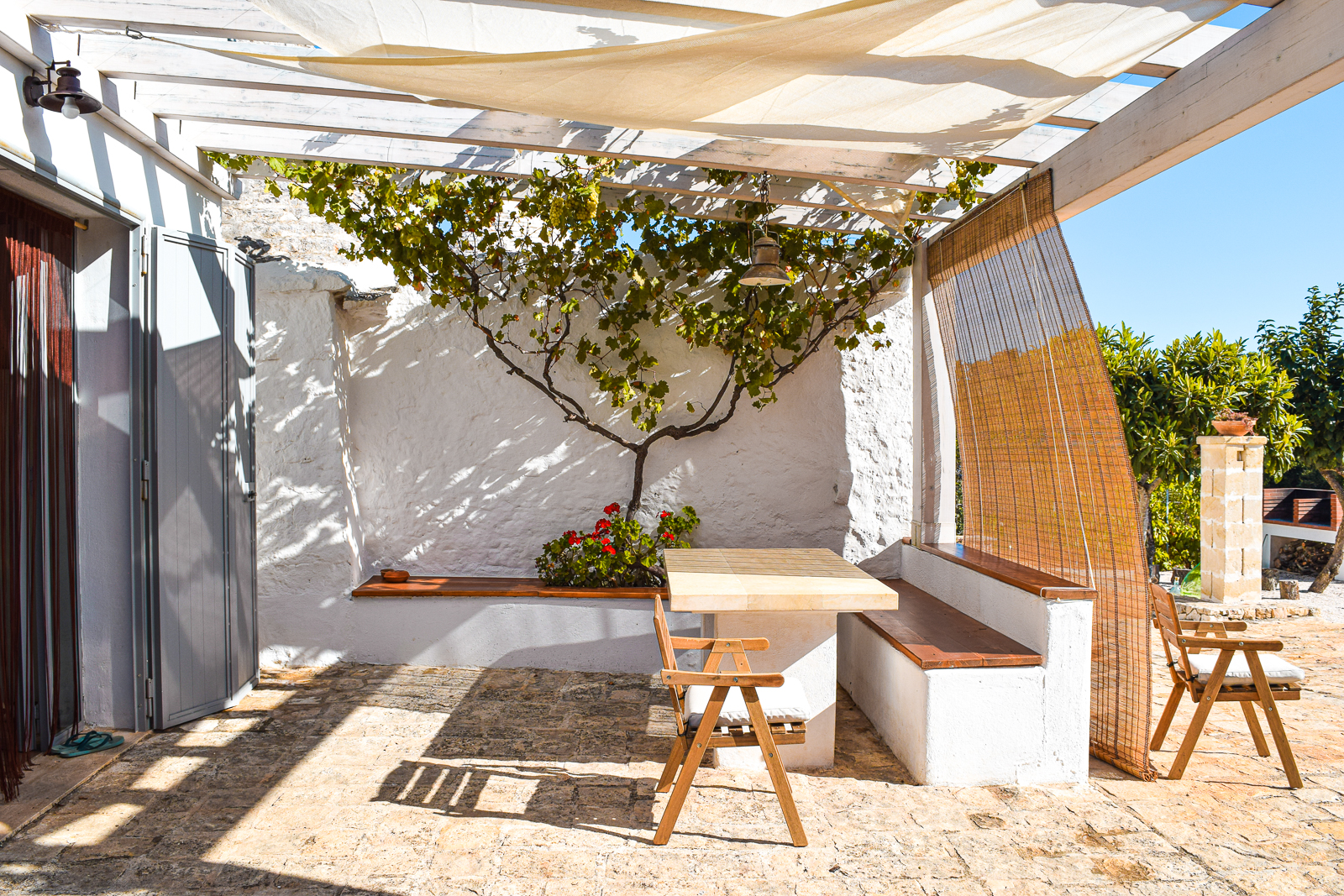
Trullo a ll’éra is a place where you can engage with local culture and learn about local heritage. privately. What sets it apart? The family that owns Trullo a ll’éra. Donata and Gigi are the primary owners. You don’t feel like you’re staying in a structured resort full of trulli made to entertain you like a sort of Disneyland. That experience feels almost too unreal and cliché. Trullo a ll’éra is an authentic, genuine property owned and inhabited by locals. It’s a representation of the real Apulian life. A life you can savor and actually experience first-hand in it’s most authentic form away from tourists. It’s the real Apulian Italia brought to you by locals. And that my dear friends, is hard to come by.
Read my full article on Trullo a ll’éra: Stay in a Trullo in Puglia, Italy >>
Dinner: Osteria da Giuseppe in Ceglie Messapica
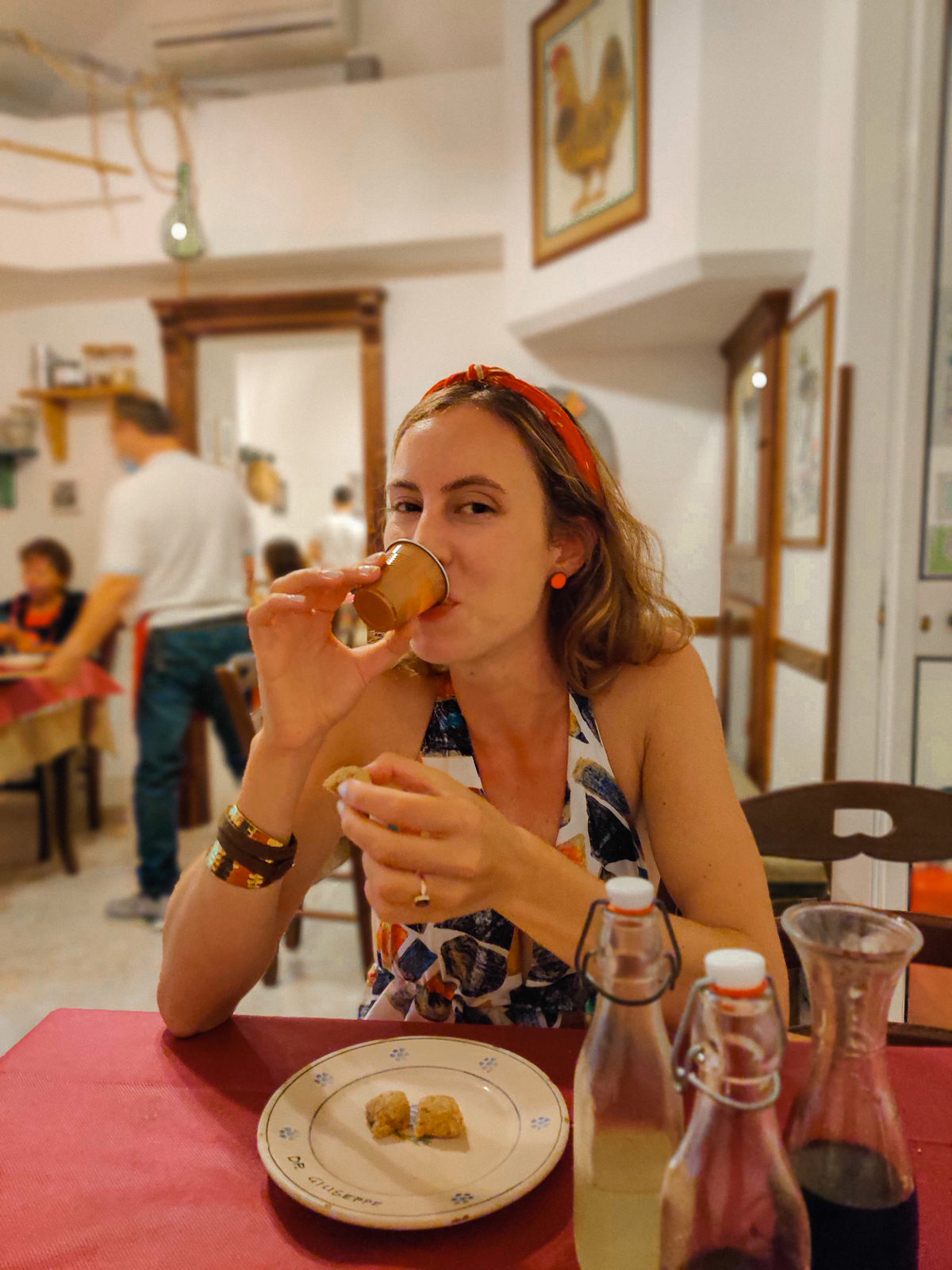
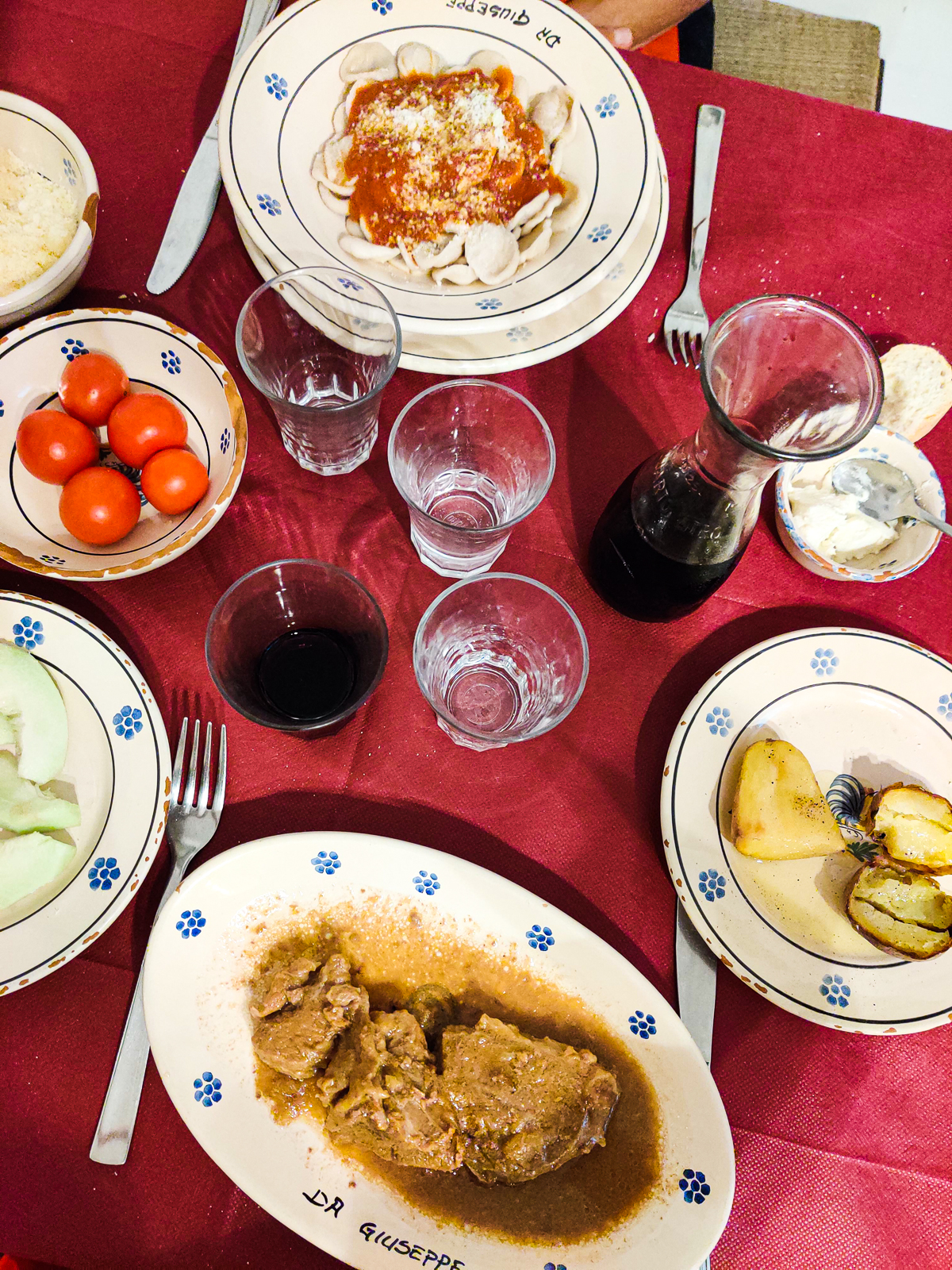
The best Puglia itinerary is the one that was crafted with help thanks to locals. Being locals who were born and raised in the area, Donata and Gigi have plenty of trustworthy recommendations when it comes to dinner in the area. Since we were minutes from the town of Ceglie Messapica, they recommended we visit Osteria da Giuseppe the first night. Osteria da Giuseppe is a true reflection of Trullo a ll’éra‘s persona. Locals wafting in and out of the back door yelling to the owner, sharing drinks and conversation, hopping around from table to table to talk with friends, ordering the “usual” or the special of the day. Order the donkey, it’s a local go-to.
Read my full article on Towns in Puglia: Ceglie Messapica, A Gastronomic Capital >>
Day 6: Ostuni, Locorotondo, Grottaglie
Morning: Explore Ostuni
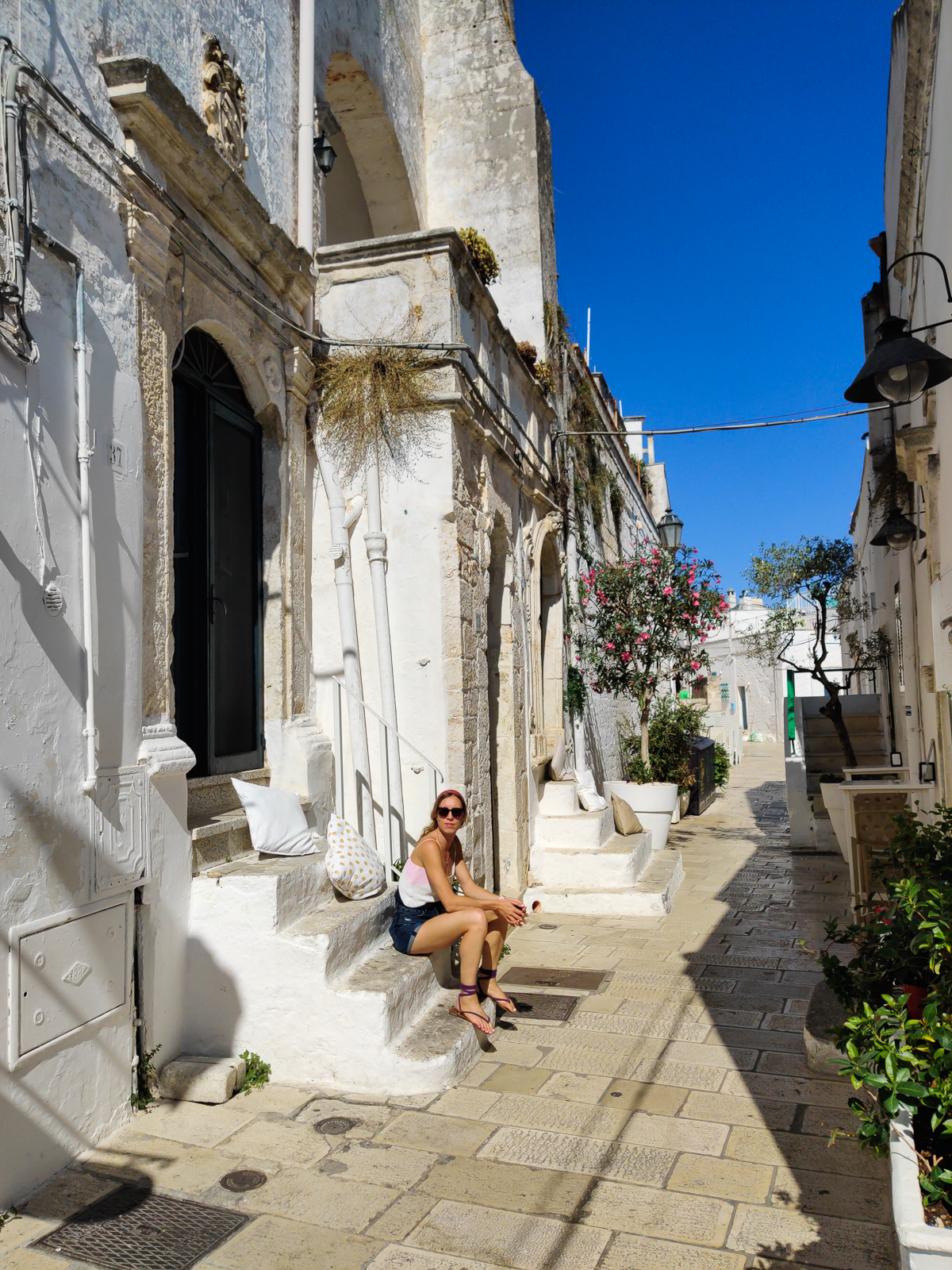
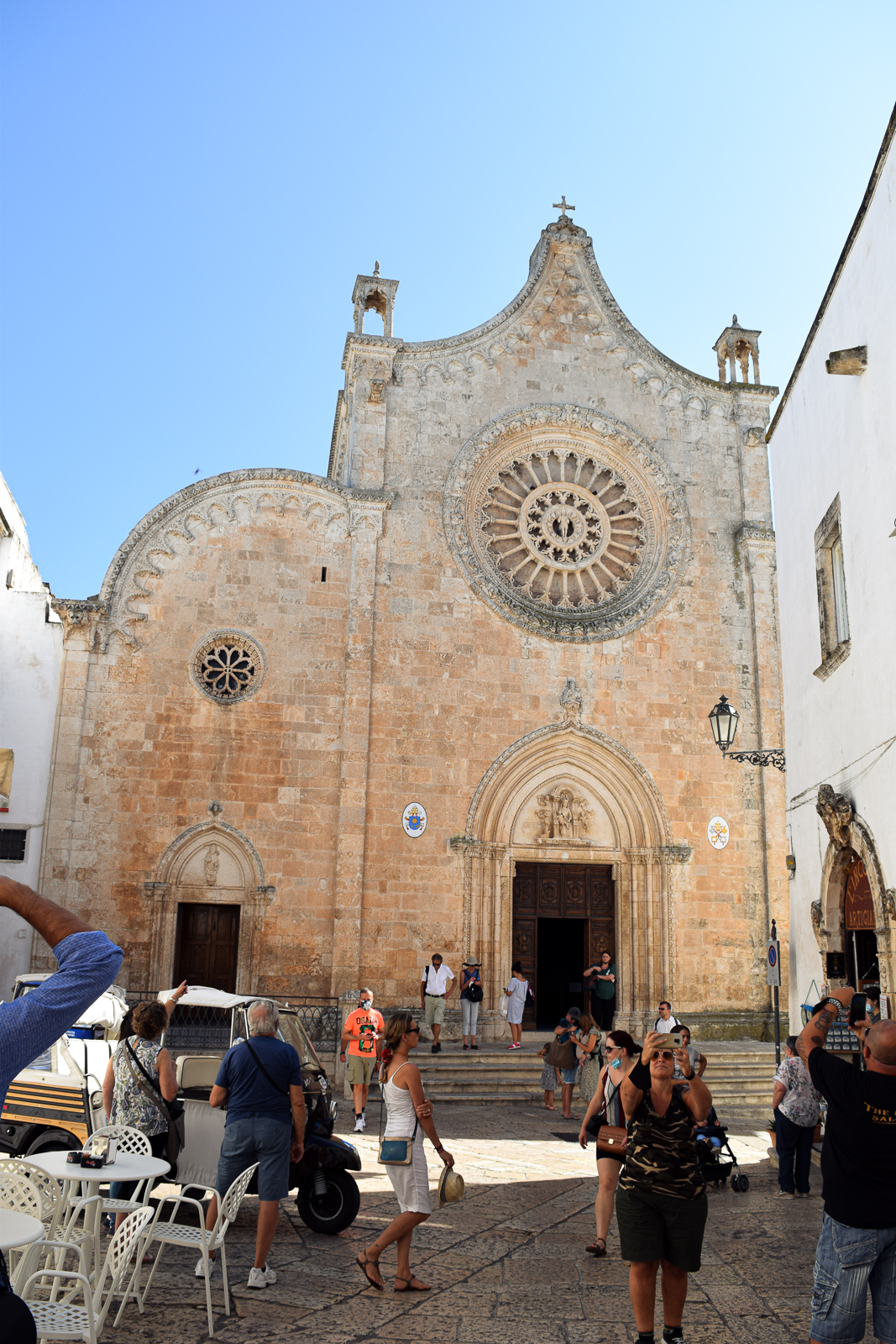
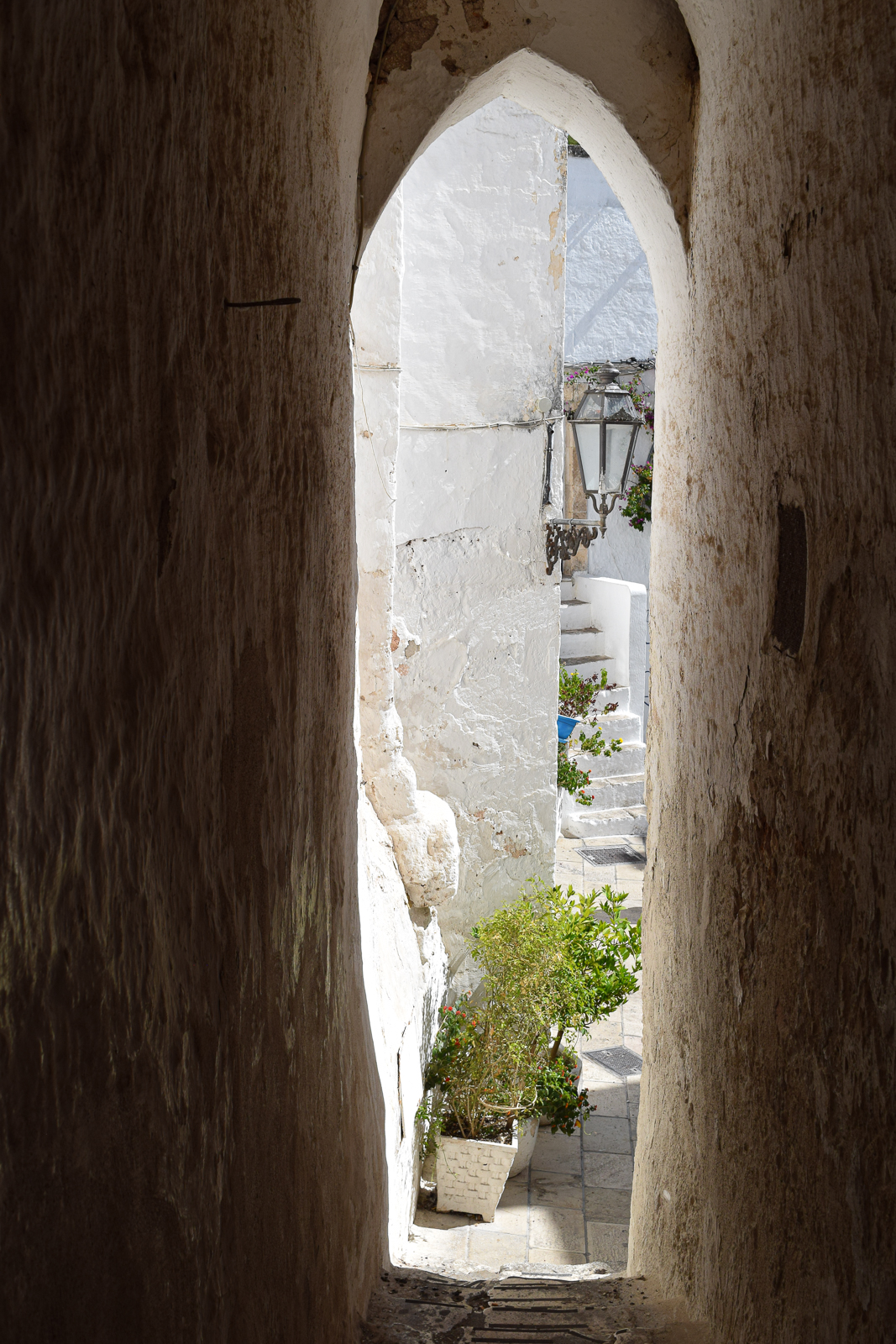
In the morning, we drove 20 minutes to the white lime washed queen among olive groves, the city of Ostuni. Ostuni is a must for any history lovers’ Puglia itinerary. The groups of tourists might have tarnished the classic charm of Ostuni for some, but there’s a reason Italians descend on this white-washed town weekend after weekend. Ostuni is just a stone’s throw away from the Adriatic Sea and an arms length away from the trulli in Itria Valley. Its rich history and architecture in the centro storico will have you kinking your neck and wandering around for hours.
Read my full article on Visit Ostuni: The White City in Puglia >>
Early Afternoon: Explore Locorotondo
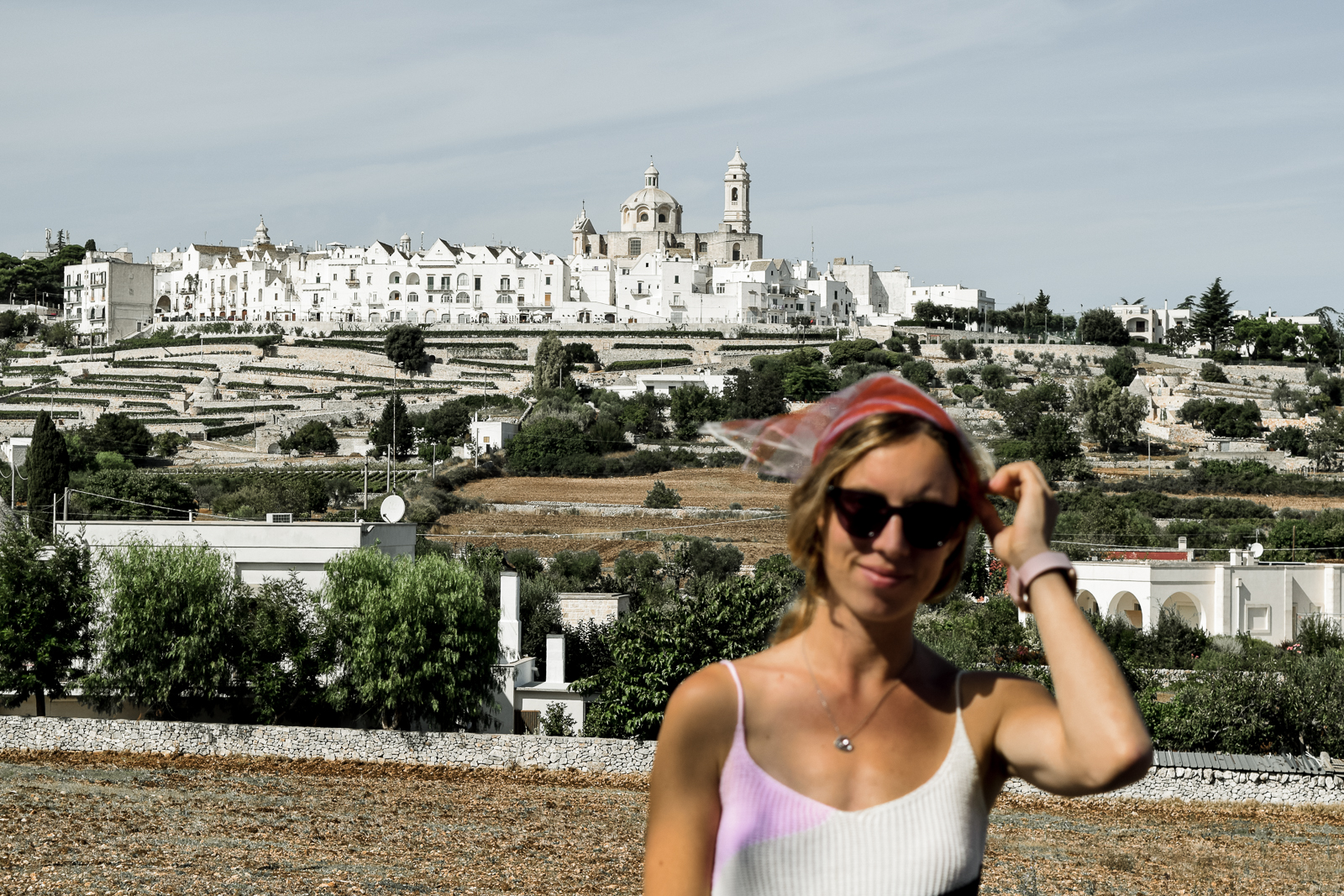
The early afternoon was starting to get crowded in Ostuni, so we went for a less renowned city for lunch. As we drove 20 minutes towards Locorotondo, a view of this Apulian jewel from outside is otherworldly; a tightly and perfectly circular town propped up on a hill with rolling vineyards as a backdrop. Locorotondo is a must for any wine enthusiasts’ Puglia itinerary. Dive into the white-washed alleyways and you’ll discover a glut of restaurants and artisan shops selling wine and crafts. For a real Italian moment, find yourself an Osteria in the heart of Locorotondo in a cool alleyway and order yourself a nice meal mid-afternoon to shield yourself from the scorching sun.
Read my full article on Visit Locorotondo in an Afternoon: What to Do >>
Afternoon: Relax at Trullo a ll’éra
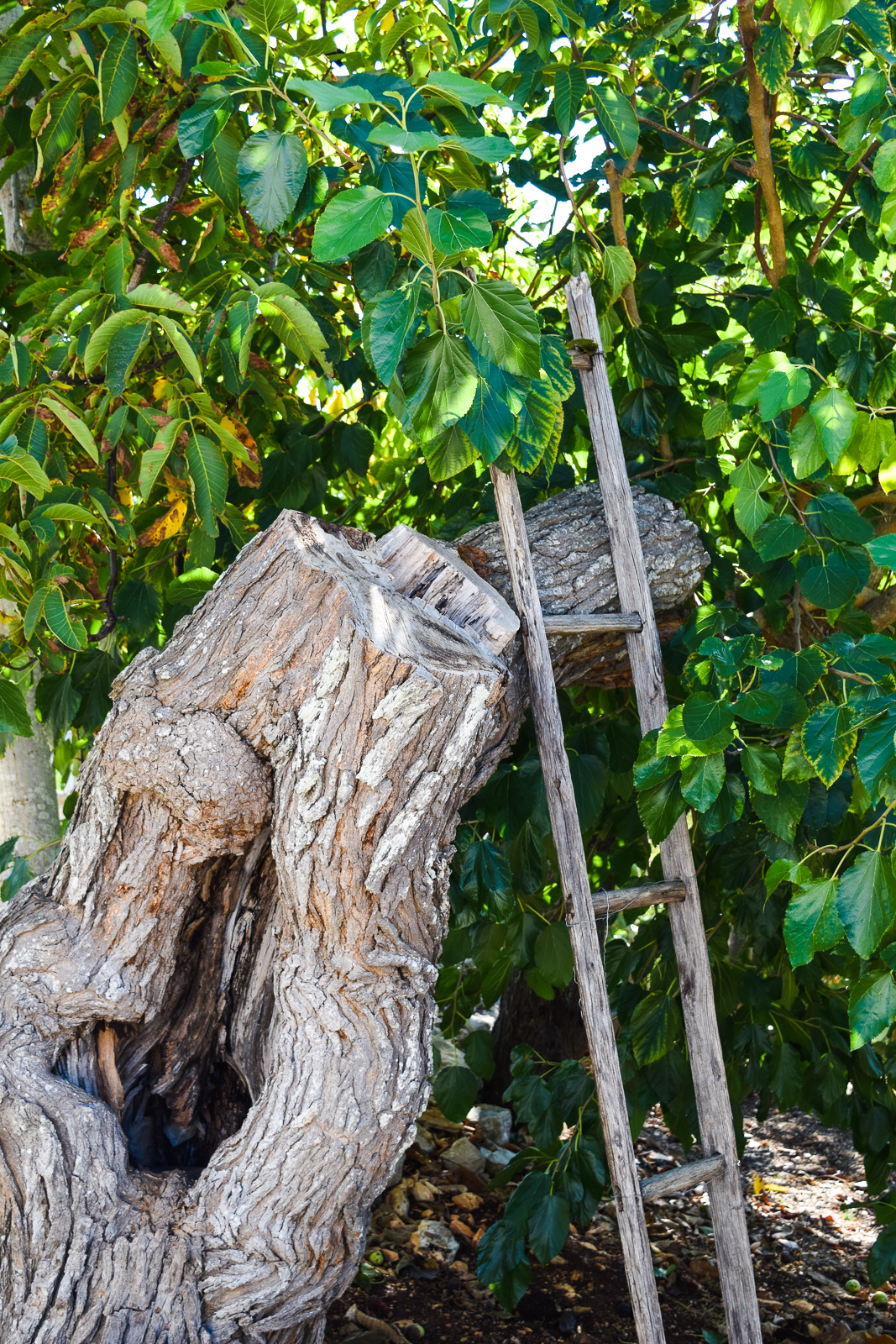
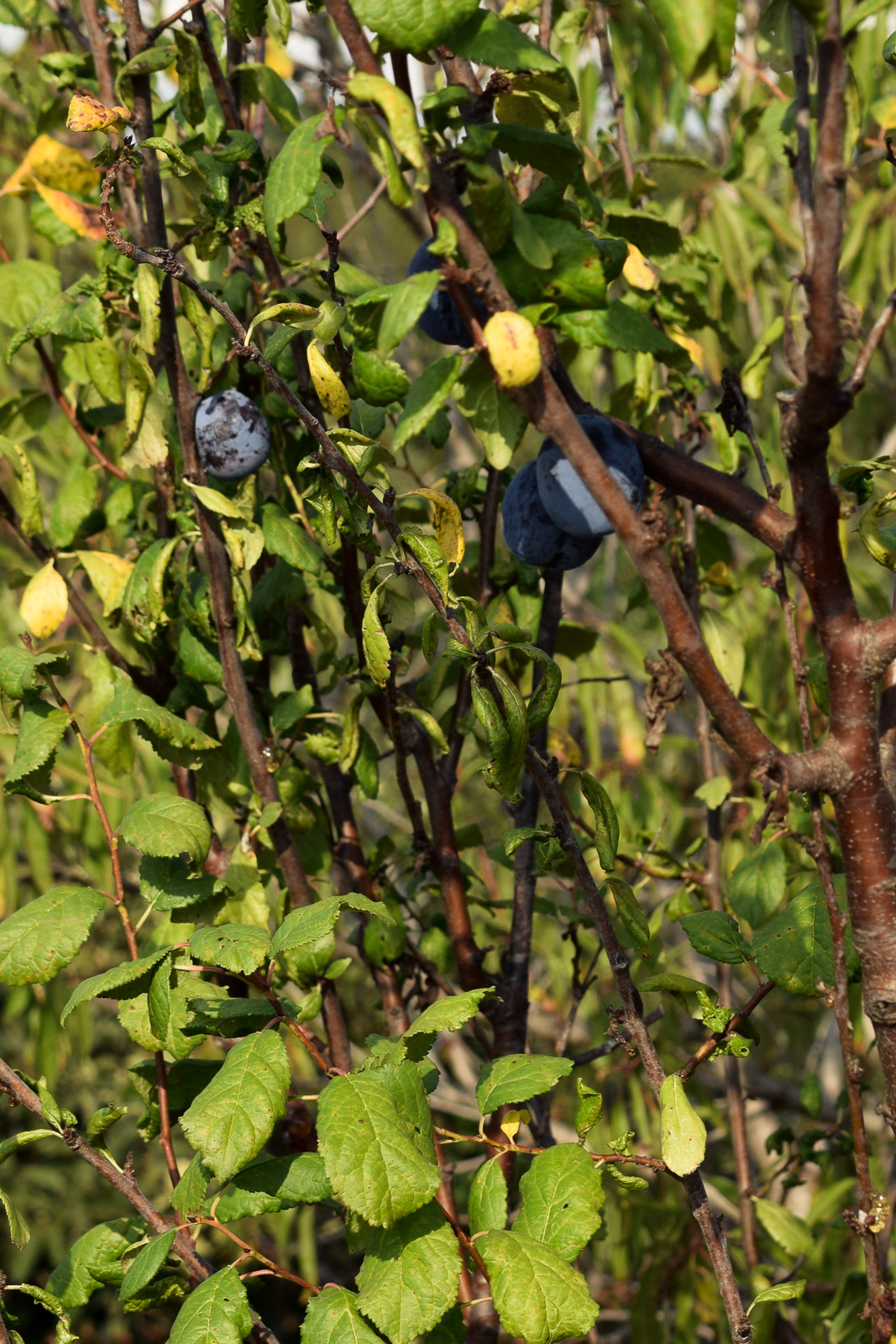
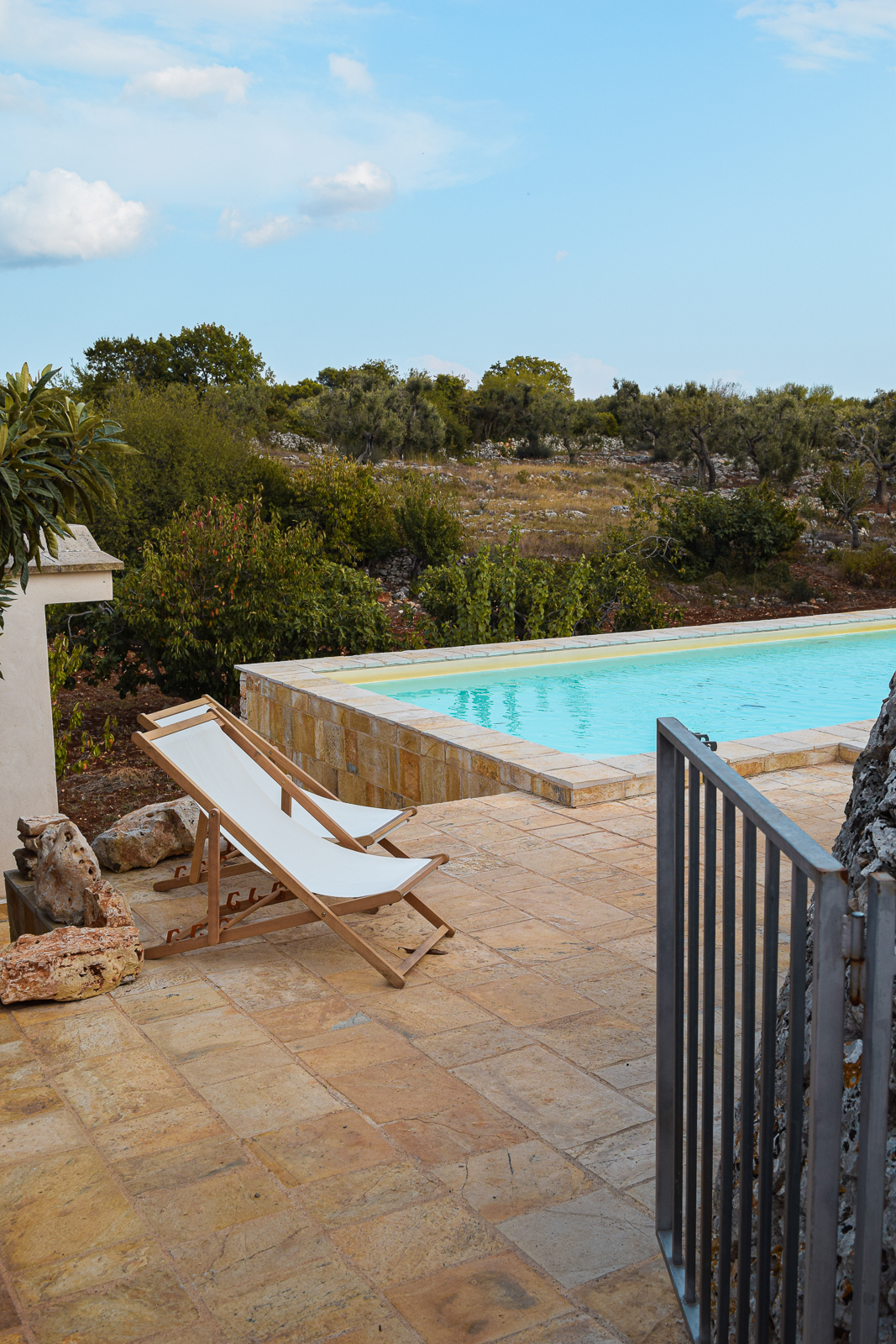
After lunch we headed back to Trullo a ll’éra for a break. We wandered through their fruit and vegetable fields, read by the pool and enjoyed the absolute silence of the countryside in Ceglie Messapica. And yes…I even took a short nap before aperitivo and dinner. Like I mentioned, relaxing is a critical part of any Puglia itinerary, even if it’s just for an afternoon. Slow down and take in the slow life and your surroundings.
Evening: Explore Grottaglie
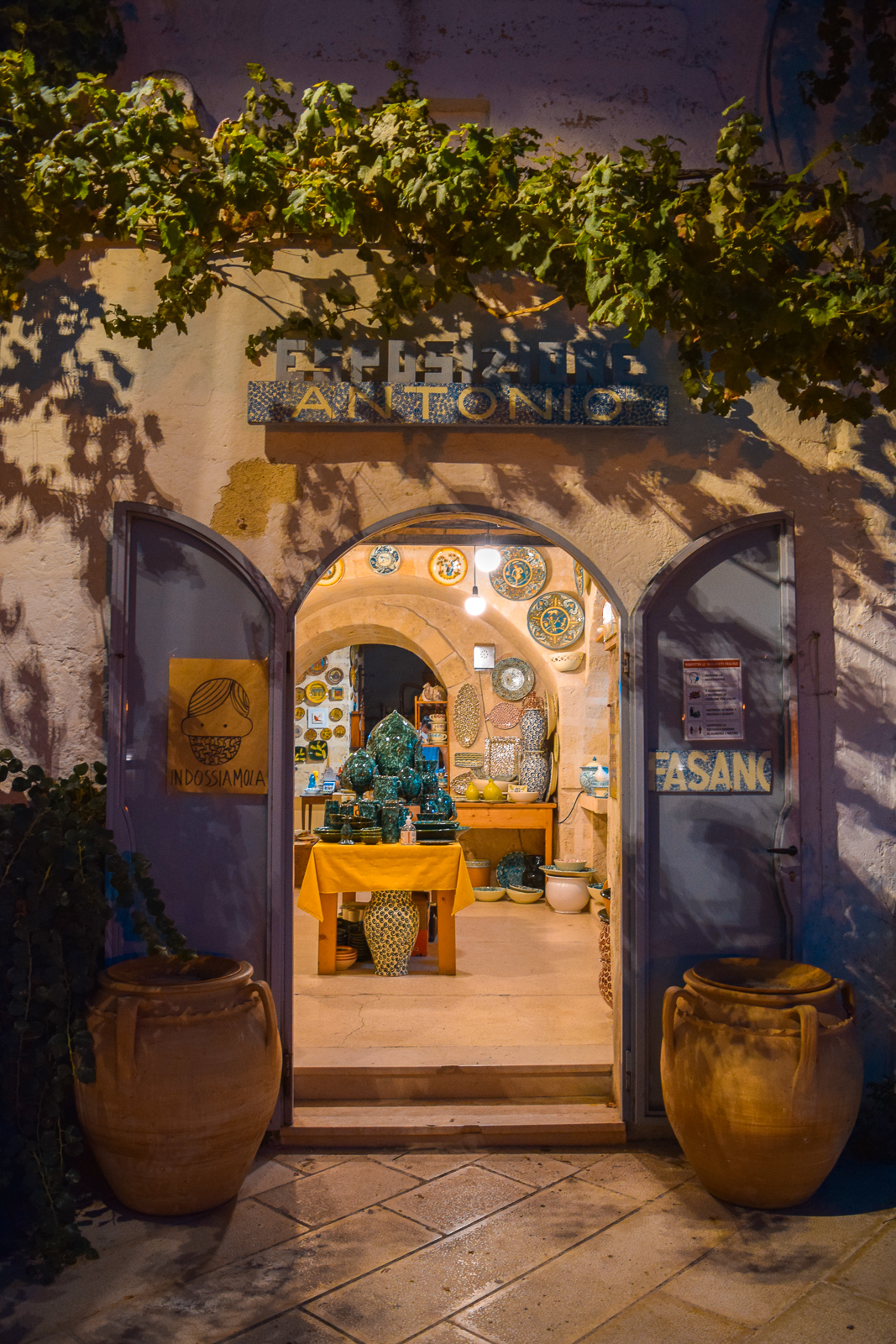
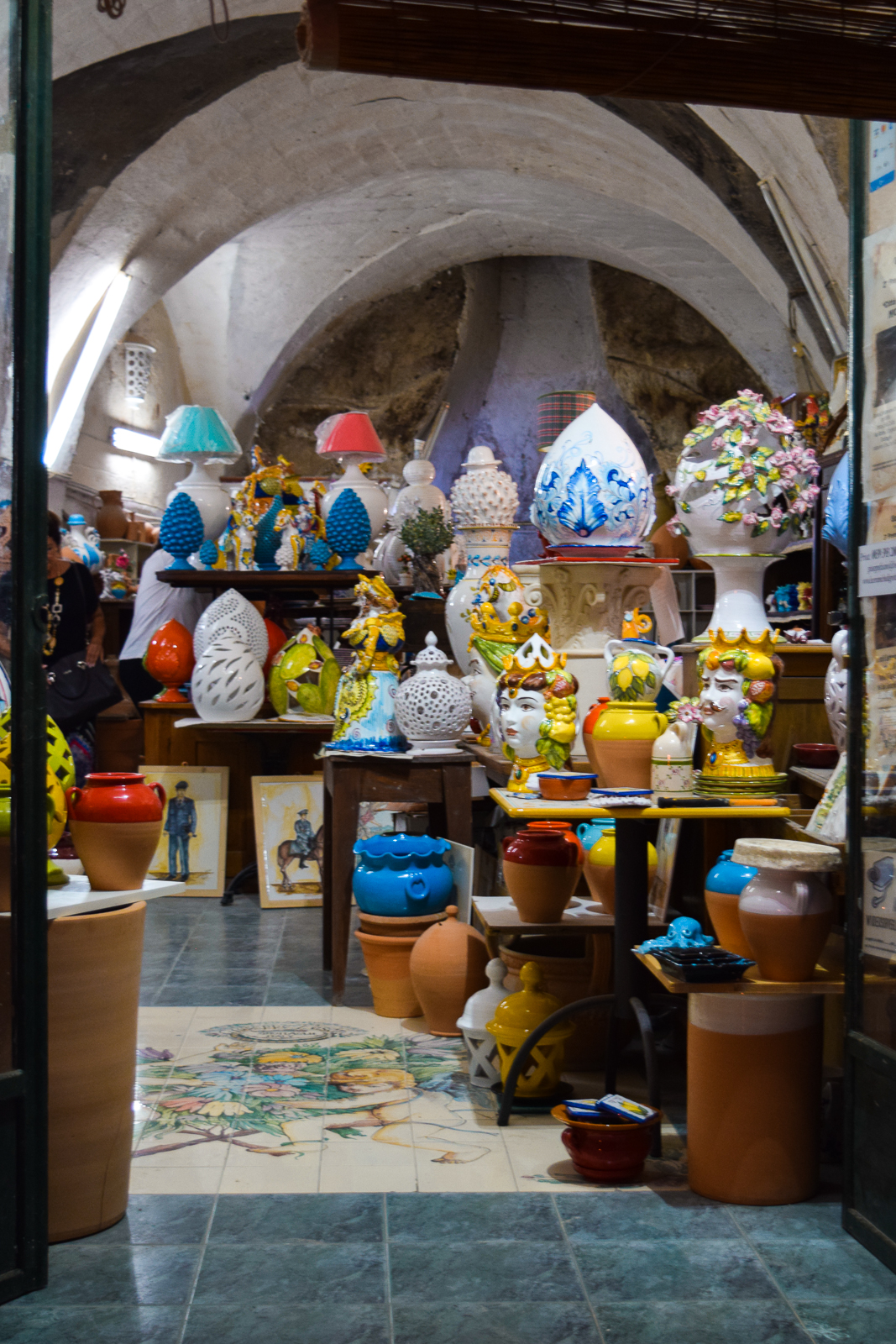
For dinner, we drove 15 minutes to the town of Grottaglie. It’s a must for any art lovers’ Puglia itinerary. This is where our hosts Donata and Gigi were born and raised. Grottaglie is known for being the ceramics capital of Puglia. Around every corner is another art studio, ceramic studio or gallery, packed with traditional Grottaglie ceramics. Grottaglie ceramics quarter houses tons of “Master Potters” utilizing ancient techniques from way back when. You’ll find yourself adding pumos, ceramic plates and lamps to your wish-list.
Read my full article on Visit Grottaglie: The Ceramics Capital of Puglia >>
Dinner: Osteria La Capasa in Grottaglie
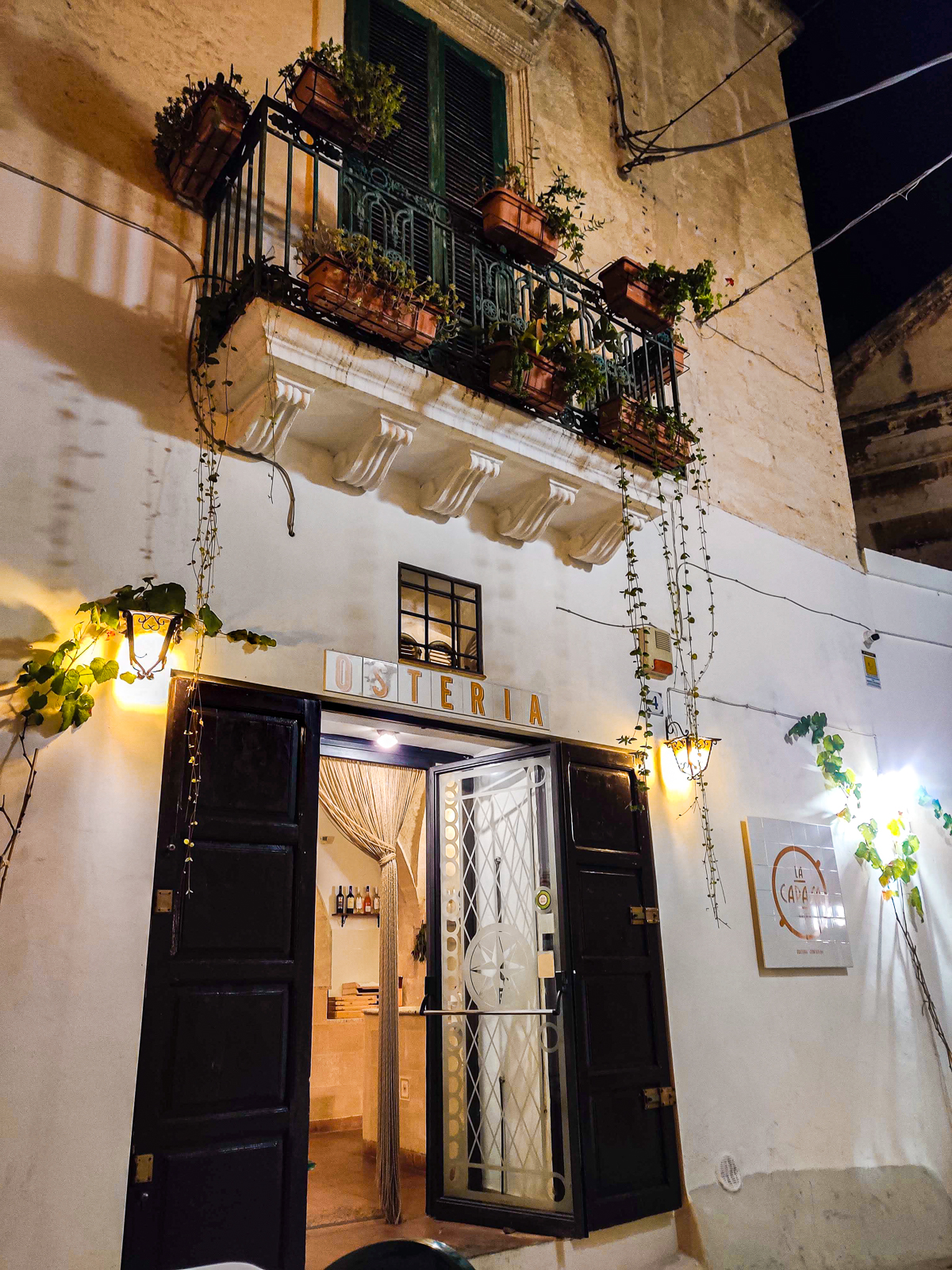
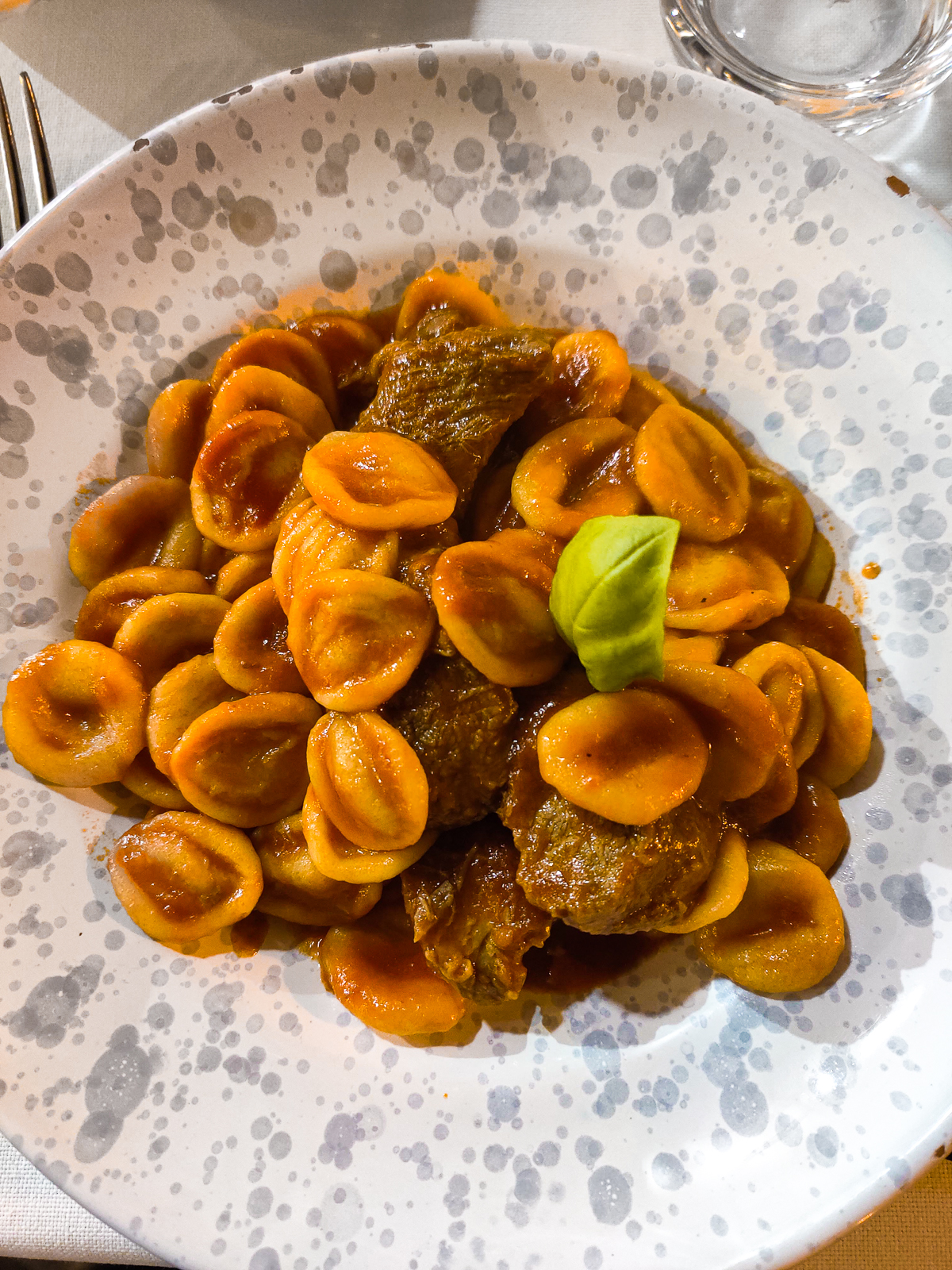
We’ve saved the best dinner meal in Puglia for last. Osteria La Capasa was a recommendation by our local hosts at Trullo a ll’éra. On this night, which was our last night in Puglia, we ate at what I thought was my best meal in all of Puglia. What a way to conclude our Puglia itinerary! Traditional cooking, technique and foods and grains are used in every dish in order to bring the history and patrimony of the Grottaglie culinary field to life. The best thing is that everything is made every day by hand by the mamma. From my orecchiete to the pasta sauce, chocolate balls and even the digestivo liquor. Absolutely a can’t miss in Puglia.
Read my full article on Visit Grottaglie: The Ceramics Capital of Puglia >>
Day 7: Alberobello
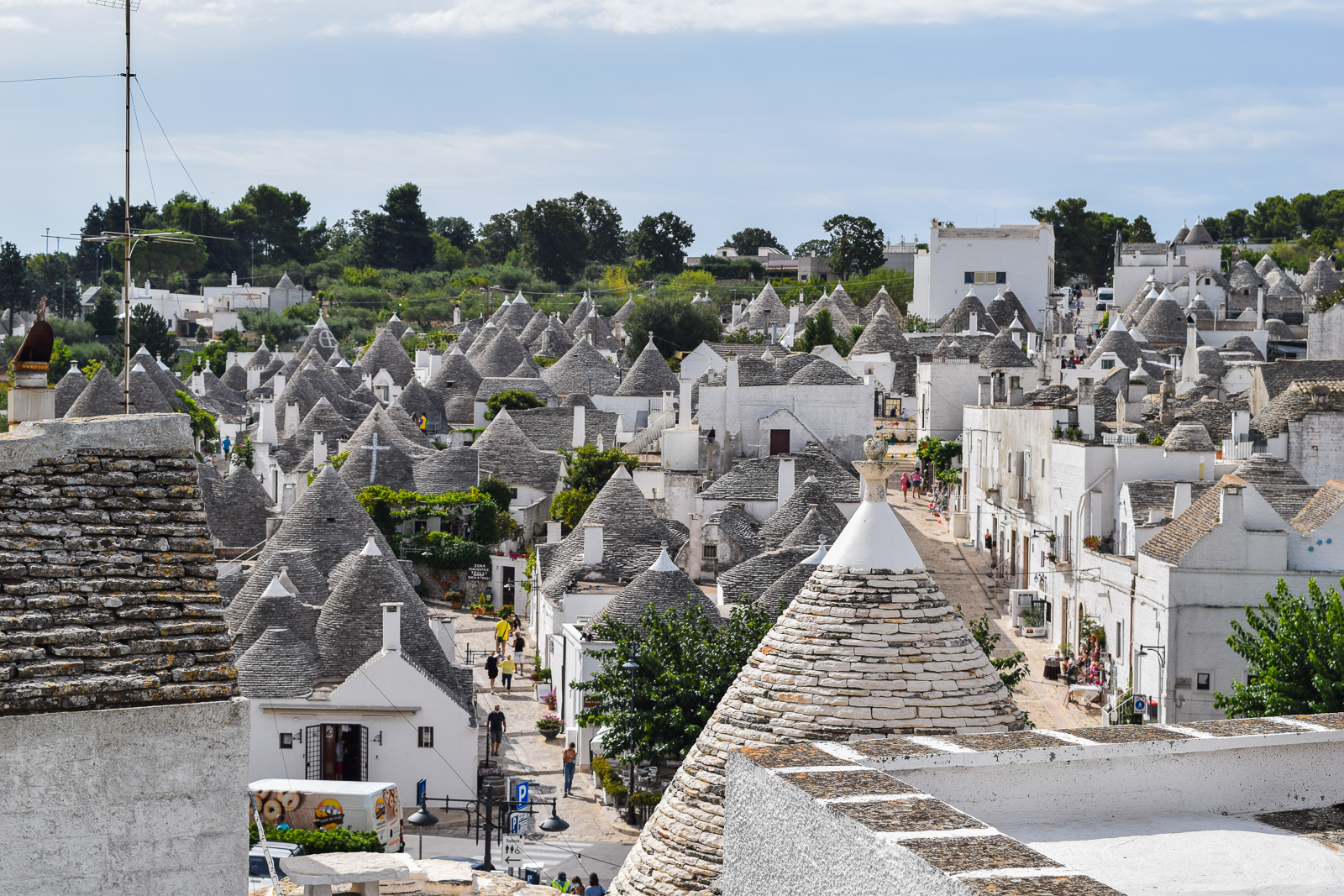
As we part ways from our Apulian family in the morning, we drive 40 minutes to our final stop: Alberobello. Time needs to be on your side for a stroll through this UNESCO Heritage Site. With over 1000 trulli to see, Alberobello is something of a mystical fantasy land. And at times, it does in fact feel like Disneyland. Rione Monti is the heart of this operation rich in artisan studios, tourist shops and restaurants. While Rione Aia Piccola is the quiet residential area where locals live across the hill. My favorite stop of all though? A small, unassuming bread bakery on the outskirts of Alberobello called Panificio “Casa del Pane” di Recchia Maria serving local Apulia delicacies and the infamous Panzerotto.
Read my full article on A Stop by Alberobello, Puglia >>
7 Day Road Trip Puglia Itinerary Map
Must-Eat Foods in Puglia
No Puglia itinerary would be complete without a dedicated section for the food. This isn’t a complete list…but it’s an essential and a start!
Important Things to Know
>> Next: 24 Hours in Milano: The Essentials What to Do, See and Eat
Follow SVADORE on:
